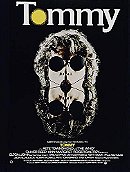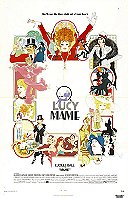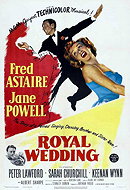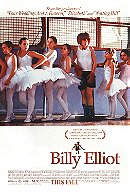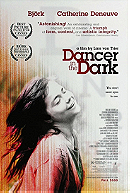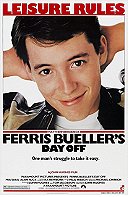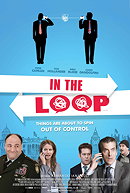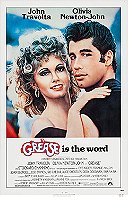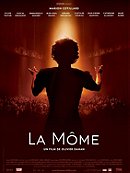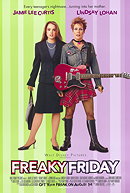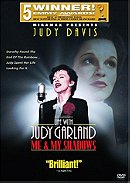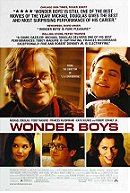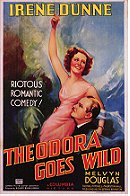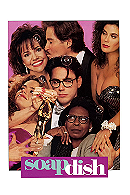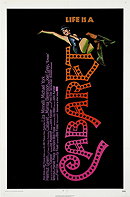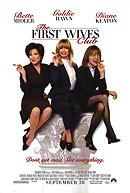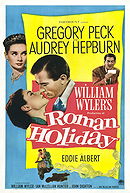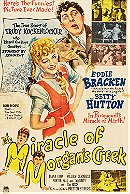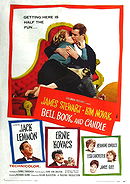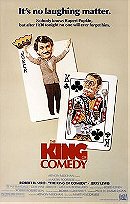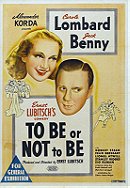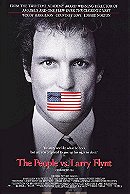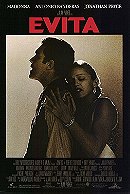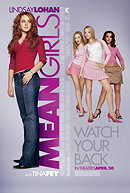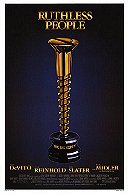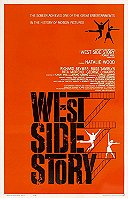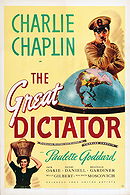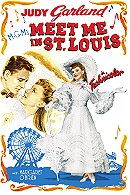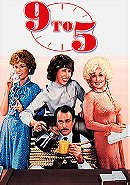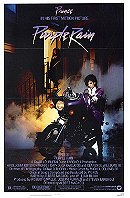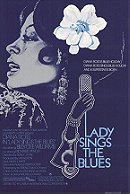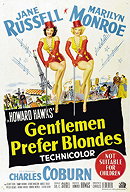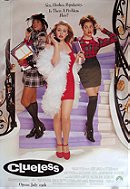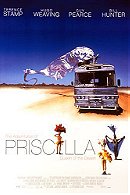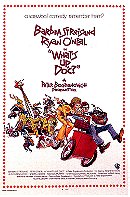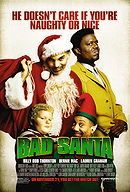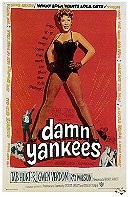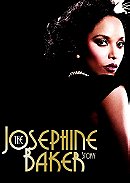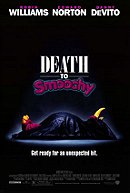PopMatter's Essential Film Performances - 2013
Sort by:
Showing 50 items
Decade:
Rating:
List Type:
For this year’s annual update, we are abiding by the weird and wacky Hollywood Foreign Press guidelines for this historically-debatable category of Musical or Comedy, which has often included some eyebrow-raising choices that range from appropriate, inspired nominees and winners to head-scratchers that sorta make sense and to the utterly perplexing.
Julie Andrews
“A woman pretending to be a man pretending to be a woman?” Preposterous, except in Julie Andrews’ comedic hands. As down and out singer Victoria Grant in 1930’s Paris, Andrews delivers what is her best musical comedy performance. Transformed from the pitiful and weak wanna-be (best line: “I’ll sleep with you for a meatball.”) to the toast of gay Paree nightlife, Grant finds that her life grows increasingly more complicated as her attempts to deceive the world about who she truly is begin to unravel. Although easily dismissed as light-hearted comedy, Andrews’ performance is incredibly complex, requiring Andrews to assume multiple personas while still projecting the innocence and purity of the central character. Further, she has to keep up the façade while her character undergoes multiple changes in her life. Not only does the role require Andrews to show greater depth in her character development, it allows her to show a broader range in her musical repertoire than previous films had, including the Latin flavored “The Shady Dame of Seville” and the New Orleans influenced “Le Jazz Hot”, while still letting Andrews do the types of song she does best, with the ballad “Crazy World”.
The film also marks a resurgence for Andrews, reclaiming her status as Musical Royalty. After being the darling of ‘60s musicals, Andrews found her career in a slump when musicals stopped being big box office in the ‘70s. By aligning herself with her husband, director Blake Edwards, Andrews was able to reinvent herself, however, showing a more mature and worldly side of herself in films such as 10 and S. O. B., in which she bared more than just her worldly side, flashing her breasts to a shocked public. Edwards’ Victor/Victoria was her first musical in 12 years, and even then, all musical numbers were stage performances, not woven into plot development. Still, it’s evident that Andrews is grateful to be signing on screen again.
If singing was the easy part for Andrews, navigating the sexual politics within the film must have been the true work. Whether playing a woman, a woman pretending to be a man, or a woman pretending to be a man pretending to be a woman, Andrews is able to add sufficient layers to each characterization to make it unique. The film’s love story requires her to be both a woman in love in private and a man in a gay relationship in public. It all sounds terribly convoluted, and it is, but Andrews make every moment completely believable and wholly entertaining.
-Michael Abernethy
“A woman pretending to be a man pretending to be a woman?” Preposterous, except in Julie Andrews’ comedic hands. As down and out singer Victoria Grant in 1930’s Paris, Andrews delivers what is her best musical comedy performance. Transformed from the pitiful and weak wanna-be (best line: “I’ll sleep with you for a meatball.”) to the toast of gay Paree nightlife, Grant finds that her life grows increasingly more complicated as her attempts to deceive the world about who she truly is begin to unravel. Although easily dismissed as light-hearted comedy, Andrews’ performance is incredibly complex, requiring Andrews to assume multiple personas while still projecting the innocence and purity of the central character. Further, she has to keep up the façade while her character undergoes multiple changes in her life. Not only does the role require Andrews to show greater depth in her character development, it allows her to show a broader range in her musical repertoire than previous films had, including the Latin flavored “The Shady Dame of Seville” and the New Orleans influenced “Le Jazz Hot”, while still letting Andrews do the types of song she does best, with the ballad “Crazy World”.
The film also marks a resurgence for Andrews, reclaiming her status as Musical Royalty. After being the darling of ‘60s musicals, Andrews found her career in a slump when musicals stopped being big box office in the ‘70s. By aligning herself with her husband, director Blake Edwards, Andrews was able to reinvent herself, however, showing a more mature and worldly side of herself in films such as 10 and S. O. B., in which she bared more than just her worldly side, flashing her breasts to a shocked public. Edwards’ Victor/Victoria was her first musical in 12 years, and even then, all musical numbers were stage performances, not woven into plot development. Still, it’s evident that Andrews is grateful to be signing on screen again.
If singing was the easy part for Andrews, navigating the sexual politics within the film must have been the true work. Whether playing a woman, a woman pretending to be a man, or a woman pretending to be a man pretending to be a woman, Andrews is able to add sufficient layers to each characterization to make it unique. The film’s love story requires her to be both a woman in love in private and a man in a gay relationship in public. It all sounds terribly convoluted, and it is, but Andrews make every moment completely believable and wholly entertaining.
-Michael Abernethy
JxSxPx's rating:


Ann-Margret
Throughout the ‘50s and early ‘60s, this Swedish born singer and performer was seen as the stuff of glitzy, superficial Las Vegas show business, a kitten with a whip who made the King sing “Viva” whenever he thought of Sin City. If there was such a thing as a female teen idol, she was one. Her entire professional demeanor, polished by handlers who knew how potent her sex appeal could be, was based around hip hugging pants, suggestive dance moves, and a personality that practically shouted sensuality. As the Peace Decade progressed, however, Ann-Margret (it’s one name, thank you very much) wanted to be taken more seriously. She was through with such shallow onscreen roles as Kim in Bye, Bye Birdie. Then, in 1971, she costarred alongside Jack Nicolson, Art Garfunkel, and Candice Bergen in Mike Nichol’s controversial Carnal Knowledge and the Academy Awards came calling (with a Best Supporting Actress nomination).
From there, she struggled to find roles that downplayed her pin-up good looks. In 1972, a fall from an elevated stage platform left her with a broken arm, shattered cheekbone and jaw. It took meticulous cosmetic surgery to rebuild Ann-Margret’s damaged face, and by 1975, she was ready to prove her musical mettle again. In one of Ken Russell’s characteristically odd casting decisions, he made this glamour gal the worn out, workaday mum to Roger Daltry’s deaf, dumb, and blind boy Tommy, and the rest is rock opera history. Oscar once again couldn’t ignore her near nuclear performance (another nomination, this time for Best Actress) while the Golden Globes gave her their highest honor. Watching the film, it’s easy to see why. Everything the sexpot firebrand brought to her previous personas was encapsulated in a woman who, after psychologically damaging her impressionable child, spends the rest of the story trying to right a repugnant wrong.
While others in the cast had the more memorable tunes from Pete Townshend’s groundbreaking album, Ann-Margret became the glue that held it all together. While Tina Turner was screeching about her “Acid Queen” royalty and Who drummer Keith Moon played a lovable old pervert, the blond bombshell literally exploded across the screen, offering up a range of emotions that few could fathom artistically, let alone sing about with abject conviction. But Ann-Margret made it look easy, even if she was rolling around in a pool of chocolate pudding and baked beans (don’t ask, it’s Ken Russell). By then end, when she’s traded her role as a murderess (or co-conspirator for same) for high society mother of the post-modern messiah, her work came full circle… almost meta. Everything Ann-Margret struggled to escape from during the previous decades finally catches up with her character in the film, turning a standard leading lady role into the stuff of movie myth. It’s an amazing turn from an equally astonishing show biz survivor.
-Bill Gibron
Throughout the ‘50s and early ‘60s, this Swedish born singer and performer was seen as the stuff of glitzy, superficial Las Vegas show business, a kitten with a whip who made the King sing “Viva” whenever he thought of Sin City. If there was such a thing as a female teen idol, she was one. Her entire professional demeanor, polished by handlers who knew how potent her sex appeal could be, was based around hip hugging pants, suggestive dance moves, and a personality that practically shouted sensuality. As the Peace Decade progressed, however, Ann-Margret (it’s one name, thank you very much) wanted to be taken more seriously. She was through with such shallow onscreen roles as Kim in Bye, Bye Birdie. Then, in 1971, she costarred alongside Jack Nicolson, Art Garfunkel, and Candice Bergen in Mike Nichol’s controversial Carnal Knowledge and the Academy Awards came calling (with a Best Supporting Actress nomination).
From there, she struggled to find roles that downplayed her pin-up good looks. In 1972, a fall from an elevated stage platform left her with a broken arm, shattered cheekbone and jaw. It took meticulous cosmetic surgery to rebuild Ann-Margret’s damaged face, and by 1975, she was ready to prove her musical mettle again. In one of Ken Russell’s characteristically odd casting decisions, he made this glamour gal the worn out, workaday mum to Roger Daltry’s deaf, dumb, and blind boy Tommy, and the rest is rock opera history. Oscar once again couldn’t ignore her near nuclear performance (another nomination, this time for Best Actress) while the Golden Globes gave her their highest honor. Watching the film, it’s easy to see why. Everything the sexpot firebrand brought to her previous personas was encapsulated in a woman who, after psychologically damaging her impressionable child, spends the rest of the story trying to right a repugnant wrong.
While others in the cast had the more memorable tunes from Pete Townshend’s groundbreaking album, Ann-Margret became the glue that held it all together. While Tina Turner was screeching about her “Acid Queen” royalty and Who drummer Keith Moon played a lovable old pervert, the blond bombshell literally exploded across the screen, offering up a range of emotions that few could fathom artistically, let alone sing about with abject conviction. But Ann-Margret made it look easy, even if she was rolling around in a pool of chocolate pudding and baked beans (don’t ask, it’s Ken Russell). By then end, when she’s traded her role as a murderess (or co-conspirator for same) for high society mother of the post-modern messiah, her work came full circle… almost meta. Everything Ann-Margret struggled to escape from during the previous decades finally catches up with her character in the film, turning a standard leading lady role into the stuff of movie myth. It’s an amazing turn from an equally astonishing show biz survivor.
-Bill Gibron
JxSxPx's rating:


Beatrice Arthur
Decked out in a severe, black pageboy wig, martini glass firmly in-hand, Bea Arthur utters a singular, monosyllabic “yes” as her first line as Vera Charles in Mame, setting the tone for a memorable performance in an otherwise cringe-worthy film. It’s not hard for Bea Arthur to shine, even when thrown into what she herself dubbed “a disaster”. Yet, Arthur managed to turn in a dynamo performance, reprising the role that earned her a 1966 Tony Award for Best Featured Actress in a Musical. Although she smelled a dud a mile away, the actress took part in the film adaptation of Mame to work alongside her husband, director Gene Saks.
While the 1974 film adaptation featured two of the same supporting actresses as the Broadway musical (Arthur and Jane Connell), Lucille Ball replaced Broadway star Angela Lansbury in the lead role since Warner Bros. felt that Lansbury would not be as big a box office draw. As aging boozehound / “First lady of the American theater” Vera Charles, Arthur plays best friend to Lucy’s Mame. Her grande dame of a character is often the butt of jokes and jabs at the hands of (in this instance, a fairly unlikeable) Mame, yet, the role of Vera gives Arthur a chance to not only deliver not only biting one-liners, but some of her patented reactions.
Comedy as an art form requires not just impeccable timing with delivering a line, but also calls for an actor to react to the delivery of his or her cohorts. It’s not just standing around, waiting to toss out your line and garner laughs. Comedians of the highest order know when to hold ‘em and when to fold ‘em. As Vera, Bea Arthur demonstrates her formidable comedic prowess, using her height and deep voice to great effect, along with an expertly raised eyebrow and a sustained, withering glance that could flatten not just the village idiot, but the entire village in a single take.
Fans of Arthur who know her primarily through her work on sitcoms Maude and The Golden Girls are afforded a glimpse of her singing chops in two of the film’s numbers. Her rendition of “The Man in the Moon”, which features Vera-as-a-Lady-Astronomer in one of her (destined to flop) stage plays, sees Arthur somehow managing to create a dignified form of slapstick.
The second production number, “Bosom Buddies”, is a frenemy-themed duet featuring Vera and Mame. In it, the two now-middle-aged friends celebrate their decades-long friendship and their ability to speak with catty candor to one another since, that’s what real friends do. The song is easily a highlight of the film and Arthur more than capably holds her own, even managing to steal the scene from the great Ball herself. Arthur’s singing voice is equally as expressive as her speaking voice, modulating her pitches to sound bright and chipper before dealing a crusher of a basso blow.
-Lana Cooper
Decked out in a severe, black pageboy wig, martini glass firmly in-hand, Bea Arthur utters a singular, monosyllabic “yes” as her first line as Vera Charles in Mame, setting the tone for a memorable performance in an otherwise cringe-worthy film. It’s not hard for Bea Arthur to shine, even when thrown into what she herself dubbed “a disaster”. Yet, Arthur managed to turn in a dynamo performance, reprising the role that earned her a 1966 Tony Award for Best Featured Actress in a Musical. Although she smelled a dud a mile away, the actress took part in the film adaptation of Mame to work alongside her husband, director Gene Saks.
While the 1974 film adaptation featured two of the same supporting actresses as the Broadway musical (Arthur and Jane Connell), Lucille Ball replaced Broadway star Angela Lansbury in the lead role since Warner Bros. felt that Lansbury would not be as big a box office draw. As aging boozehound / “First lady of the American theater” Vera Charles, Arthur plays best friend to Lucy’s Mame. Her grande dame of a character is often the butt of jokes and jabs at the hands of (in this instance, a fairly unlikeable) Mame, yet, the role of Vera gives Arthur a chance to not only deliver not only biting one-liners, but some of her patented reactions.
Comedy as an art form requires not just impeccable timing with delivering a line, but also calls for an actor to react to the delivery of his or her cohorts. It’s not just standing around, waiting to toss out your line and garner laughs. Comedians of the highest order know when to hold ‘em and when to fold ‘em. As Vera, Bea Arthur demonstrates her formidable comedic prowess, using her height and deep voice to great effect, along with an expertly raised eyebrow and a sustained, withering glance that could flatten not just the village idiot, but the entire village in a single take.
Fans of Arthur who know her primarily through her work on sitcoms Maude and The Golden Girls are afforded a glimpse of her singing chops in two of the film’s numbers. Her rendition of “The Man in the Moon”, which features Vera-as-a-Lady-Astronomer in one of her (destined to flop) stage plays, sees Arthur somehow managing to create a dignified form of slapstick.
The second production number, “Bosom Buddies”, is a frenemy-themed duet featuring Vera and Mame. In it, the two now-middle-aged friends celebrate their decades-long friendship and their ability to speak with catty candor to one another since, that’s what real friends do. The song is easily a highlight of the film and Arthur more than capably holds her own, even managing to steal the scene from the great Ball herself. Arthur’s singing voice is equally as expressive as her speaking voice, modulating her pitches to sound bright and chipper before dealing a crusher of a basso blow.
-Lana Cooper
JxSxPx's rating:


Royal Wedding (1951)
Fred Astaire
One could pick just about any Fred Astaire performance and make a valid argument that it is his best, because, frankly, Astaire plays Astaire in just about every film: dashing, sophisticated, witty, sly, and good-natured. Yet, Royal Wedding presents Astaire in the many roles he took on in film—the debonair suitor, in this case for Sarah Churchill; the family man, protecting and battling with little sister Jane Powell; and master showman, performing as part of a brother—sister act in London for the royal wedding of Princess (now Queen) Elizabeth. The film’s plot is predictable and forgettable, but Astaire is at his absolute best. Even as we watch him deal with the inevitable obstacles he encounters both personally and professionally, we know that the big show will go off flawlessly and Astaire will get the girl of his dreams. What’s more, he will be his charming, joking self throughout highs and lows.
Beyond showing Astaire’s considerable charm at its best, Royal Wedding features three of Astaire’s—and film’s—greatest musical numbers. The most famous of these, “You’re All the World to Me”, finds Astaire alone in his hotel room, dancing his way around the entire room, including up the walls and across the ceiling, in celebration of his new love. Astaire first mentioned the idea for the scene in 1945, but it took him six years to actually capture it on film. The camera work is standard now, but it was revolutionary at the time and astounded audiences. Although this sequence is the film’s most often mentioned, it is not the film’s only memorable one. “Summer Jumps” finds Astaire alone on stage; lacking a partner (his sister has failed to show up for rehearsal), Astaire improvises, grabbing a hat stand and making it his dance partner. The scene seems to pay homage to rival Gene Kelly, mirroring Kelly’s “You, Wonderful You” number from Summer Stock the previous year. Equally good is Astaire’s number with Powell, “How Could You Believe Me When I Said I Love You When You Know I’ve been a Liar All My Life.” Here, Astaire is at his most playful, as a small-time thug trying to brush off some clingy dame. With Astaire in nipple-high pants and Powell smacking gum, the duo is in perfect sync in a dance that is equal parts contemporary dance, tap, and slapstick. This is the Astaire film-goers came to love—spirited but graceful. Even if Fred Astaire was playing the same character that he played in most of his films, no one could have played it like him.
-MA
One could pick just about any Fred Astaire performance and make a valid argument that it is his best, because, frankly, Astaire plays Astaire in just about every film: dashing, sophisticated, witty, sly, and good-natured. Yet, Royal Wedding presents Astaire in the many roles he took on in film—the debonair suitor, in this case for Sarah Churchill; the family man, protecting and battling with little sister Jane Powell; and master showman, performing as part of a brother—sister act in London for the royal wedding of Princess (now Queen) Elizabeth. The film’s plot is predictable and forgettable, but Astaire is at his absolute best. Even as we watch him deal with the inevitable obstacles he encounters both personally and professionally, we know that the big show will go off flawlessly and Astaire will get the girl of his dreams. What’s more, he will be his charming, joking self throughout highs and lows.
Beyond showing Astaire’s considerable charm at its best, Royal Wedding features three of Astaire’s—and film’s—greatest musical numbers. The most famous of these, “You’re All the World to Me”, finds Astaire alone in his hotel room, dancing his way around the entire room, including up the walls and across the ceiling, in celebration of his new love. Astaire first mentioned the idea for the scene in 1945, but it took him six years to actually capture it on film. The camera work is standard now, but it was revolutionary at the time and astounded audiences. Although this sequence is the film’s most often mentioned, it is not the film’s only memorable one. “Summer Jumps” finds Astaire alone on stage; lacking a partner (his sister has failed to show up for rehearsal), Astaire improvises, grabbing a hat stand and making it his dance partner. The scene seems to pay homage to rival Gene Kelly, mirroring Kelly’s “You, Wonderful You” number from Summer Stock the previous year. Equally good is Astaire’s number with Powell, “How Could You Believe Me When I Said I Love You When You Know I’ve been a Liar All My Life.” Here, Astaire is at his most playful, as a small-time thug trying to brush off some clingy dame. With Astaire in nipple-high pants and Powell smacking gum, the duo is in perfect sync in a dance that is equal parts contemporary dance, tap, and slapstick. This is the Astaire film-goers came to love—spirited but graceful. Even if Fred Astaire was playing the same character that he played in most of his films, no one could have played it like him.
-MA
JxSxPx's rating:


Billy Elliot (2000)
Jamie Bell
When a film features a young boy (Bell) cowering in the loo as he watches his father take an axe to the family piano to make much-needed firewood, it’s hard to imagine such a film is a musical or a comedy. Granted, there is music and dancing—lots of dancing—but at its core, Billy Elliot is a family drama, focusing on how one father and son deal with gender expectations amidst a labor dispute and growing poverty. An Andy Hardy feel-good movie it isn’t, but then, Jamie Bell is no Mickey Rooney. In Billy Elliot, Bell is brooding, intense, talented, intelligent, inquisitive, frightened, and utterly compelling; consequently, he found himself at the age of 14 as BAFTA’s youngest Best Actor winner and a SAG nominee.
Billy Elliot likes to dance, causing him to abandon the boxing class his father wants him in for the dance classes taught in the same gym. Set against the mining labor strikes of 1984, the film concerns itself with what it means to be a man—does it mean standing up for what you believe or swallowing your pride to support your family? Is it pursuing what is manly or chasing after what you love to do, even if the world may not approve? Even as Billy struggles with the latter question, his father struggles with the former, setting up a clash of identities. At the core of all these struggles is Bell, carefully weaving between the competing forces in Billy’s world, serving as silent observer, absorbing the conflicts and channeling it all into his dance. The film’s highlight number finds Bell dancing through the streets of his town to the Jam’s “A Town Called Malice”, full into his rage after a fight between his father and dance teacher. Bell’s every movement as he dances screams the words he cannot say. The dance perfectly sets up the scene’s pivotal scene, and Bell’s most moving, as Billy explains what it feels like to dance in front of a dance academy audition panel. There is a clarity and maturity in Bell’s delivery that exceeds his age, plus the kid can dance like hell. Whether engaging in a playful dance with his teacher, the delightful Julie Walters, or proving his love of dance to his father, Bell is a joy to watch.
-MA
When a film features a young boy (Bell) cowering in the loo as he watches his father take an axe to the family piano to make much-needed firewood, it’s hard to imagine such a film is a musical or a comedy. Granted, there is music and dancing—lots of dancing—but at its core, Billy Elliot is a family drama, focusing on how one father and son deal with gender expectations amidst a labor dispute and growing poverty. An Andy Hardy feel-good movie it isn’t, but then, Jamie Bell is no Mickey Rooney. In Billy Elliot, Bell is brooding, intense, talented, intelligent, inquisitive, frightened, and utterly compelling; consequently, he found himself at the age of 14 as BAFTA’s youngest Best Actor winner and a SAG nominee.
Billy Elliot likes to dance, causing him to abandon the boxing class his father wants him in for the dance classes taught in the same gym. Set against the mining labor strikes of 1984, the film concerns itself with what it means to be a man—does it mean standing up for what you believe or swallowing your pride to support your family? Is it pursuing what is manly or chasing after what you love to do, even if the world may not approve? Even as Billy struggles with the latter question, his father struggles with the former, setting up a clash of identities. At the core of all these struggles is Bell, carefully weaving between the competing forces in Billy’s world, serving as silent observer, absorbing the conflicts and channeling it all into his dance. The film’s highlight number finds Bell dancing through the streets of his town to the Jam’s “A Town Called Malice”, full into his rage after a fight between his father and dance teacher. Bell’s every movement as he dances screams the words he cannot say. The dance perfectly sets up the scene’s pivotal scene, and Bell’s most moving, as Billy explains what it feels like to dance in front of a dance academy audition panel. There is a clarity and maturity in Bell’s delivery that exceeds his age, plus the kid can dance like hell. Whether engaging in a playful dance with his teacher, the delightful Julie Walters, or proving his love of dance to his father, Bell is a joy to watch.
-MA
JxSxPx's rating:


Dancer in the Dark (2000)
Björk
“I’ve seen it all, I have seen the dark, I have seen the brightness in one little spark. I’ve seen what I was and I know I what I’ll be, I’ve seen it all, there is no more to see…” So goes the Oscar-nominated tune written (improbably) by singer-composer Björk and her director Lars Von Trier, evoking the film’s undeniably powerful, melodramatic underpinnings which play out on screen like some mad cinematic hybrid of Douglas Sirk and the Fred Astaire/Cy Charisse musical The Band Wagon (1953). With Von Trier trying on his Minnelli hat, additionally, the spectator is treated to Björk doing her best riff on Giulietta Masina, part child-clown drowning in a well of sadness, part dimunitve dynamo full of pluck and strength; a thoroughly complex creation given the leading lady’s complete lack of experience in acting for the screen.
As Selma, an immigrant single mother living with her teenage son in the 1960s, Björk gives in an impeccably modulated performance made up of such astonishing, seamless details that she not only that grounds the director’s implausible (if brilliant) melodrama in reality, but in fact deep within in the beating heart. Selma’s only reason for living, for toiling away in a back-breaking, dangerous factory job as her eyesight becomes worse and worse, is to save her son from the same hereditary disease by wheedling away every penny to pay for his operation. A Czech woman barely getting by who came searching for the American dream, who daydreams of starring in splashy American musicals, Selma’s only pleasures in life become her undoing as a series of horrible circumstances conspire to land her on trial for murder and finally on death row. In these later scenes, a few of which are shared with the legendary Catherine Denueve to tremendous effect, Björk does the impossible: she makes you forget you are watching Björk.
These moments that find Selma going through a xenophobic, unfair judicial system, crackle with dramatic intensity. As a singer, the command Björk has over the vocal elements of the character—not just the singing, but the powerful attention to every word Selma says and how she says them—is beautiful. Though, to those of us who know her live show well it comes as no revelation that Björk, who once sang so poignantly about feeling “emotional landscapes” on Homogenic, could feel her way into a character through creating just that: the “emotional landscape” through creating a voice for a woman she might not have a lot in common with, but that she can connect with on a divinely synergistic plane through her compositions and singing. Yes, it is sad she won’t take another acting role (though she did appear in Matthew Barney’s Drawing Restraint 9), but the strength of her tour performances continues to impress, and to be fair, most of those could stand up against almost any film performance on this list, if we’re really talking “Essential Performances”.
-Matt Mazur
“I’ve seen it all, I have seen the dark, I have seen the brightness in one little spark. I’ve seen what I was and I know I what I’ll be, I’ve seen it all, there is no more to see…” So goes the Oscar-nominated tune written (improbably) by singer-composer Björk and her director Lars Von Trier, evoking the film’s undeniably powerful, melodramatic underpinnings which play out on screen like some mad cinematic hybrid of Douglas Sirk and the Fred Astaire/Cy Charisse musical The Band Wagon (1953). With Von Trier trying on his Minnelli hat, additionally, the spectator is treated to Björk doing her best riff on Giulietta Masina, part child-clown drowning in a well of sadness, part dimunitve dynamo full of pluck and strength; a thoroughly complex creation given the leading lady’s complete lack of experience in acting for the screen.
As Selma, an immigrant single mother living with her teenage son in the 1960s, Björk gives in an impeccably modulated performance made up of such astonishing, seamless details that she not only that grounds the director’s implausible (if brilliant) melodrama in reality, but in fact deep within in the beating heart. Selma’s only reason for living, for toiling away in a back-breaking, dangerous factory job as her eyesight becomes worse and worse, is to save her son from the same hereditary disease by wheedling away every penny to pay for his operation. A Czech woman barely getting by who came searching for the American dream, who daydreams of starring in splashy American musicals, Selma’s only pleasures in life become her undoing as a series of horrible circumstances conspire to land her on trial for murder and finally on death row. In these later scenes, a few of which are shared with the legendary Catherine Denueve to tremendous effect, Björk does the impossible: she makes you forget you are watching Björk.
These moments that find Selma going through a xenophobic, unfair judicial system, crackle with dramatic intensity. As a singer, the command Björk has over the vocal elements of the character—not just the singing, but the powerful attention to every word Selma says and how she says them—is beautiful. Though, to those of us who know her live show well it comes as no revelation that Björk, who once sang so poignantly about feeling “emotional landscapes” on Homogenic, could feel her way into a character through creating just that: the “emotional landscape” through creating a voice for a woman she might not have a lot in common with, but that she can connect with on a divinely synergistic plane through her compositions and singing. Yes, it is sad she won’t take another acting role (though she did appear in Matthew Barney’s Drawing Restraint 9), but the strength of her tour performances continues to impress, and to be fair, most of those could stand up against almost any film performance on this list, if we’re really talking “Essential Performances”.
-Matt Mazur
Ferris Bueller's Day Off (1986)
Matthew Broderick
Casting was absolutely crucial here. Had high school auteur Hughes stuck us with a generic Hollywood hunk in the role of the school-skipping, fourth-wall-breaking title character, Ferris Bueller might have been unbearably unctuous and obnoxiously entitled, particularly coming, as the film does, from the upper middle class milieu that Hughes’ typical setting. Because the filmmaker regarded ‘80s suburban America with equal parts sympathy and satire, though, he knew better than to alienate even his only slightly less privileged viewers (the ones who may be without either car or computer), and with the choice down to John Cusack (who would land his own definitive ‘80s teen role three years later as Say Anything‘s Lloyd Dobler) and Matthew Broderick, Hughes still wound up with the best possible Ferris.
Importing some of the cocky insouciance that the actor previously displayed as another computer wiz kid in John Badham’s WarGames (1983), Broderick plays Ferris as an impish every-teen, a hilarious literalization of David Elkind’s “personal fable”—note how the entire city of Chicago seems to rally together to “Save Ferris”—locating a quality essential in establishing his easy, witty rapport with the audience. Through Broderick’s winsome performance, we are invited along on his wish-fulfillment fantasy rather than passively observing it, and his (and Hughes’) balance of heart (as the motivation behind the day off is revealed as a last-ditch opportunity to win his hopelessly neurotic best friend some confidence and self-respect) and appealingly good natured sense of comic anarchy keeps the film as emotionally grounded as it is delightfully absurd. In a film rich with beautifully realized comic performances, from Alan Ruck, Mia Sara, Jennifer Grey, Jeffrey Jones and Edie McClurg in note-perfect supporting turns to Ben Stein and Charlie Sheen in brilliantly typecast cameos, Broderick remains both focal point and anchor, ensuring us that even if we are in no position to take a “day off” of our own, joining in on his remains a delightful alternative.
-Jer Fairall
Casting was absolutely crucial here. Had high school auteur Hughes stuck us with a generic Hollywood hunk in the role of the school-skipping, fourth-wall-breaking title character, Ferris Bueller might have been unbearably unctuous and obnoxiously entitled, particularly coming, as the film does, from the upper middle class milieu that Hughes’ typical setting. Because the filmmaker regarded ‘80s suburban America with equal parts sympathy and satire, though, he knew better than to alienate even his only slightly less privileged viewers (the ones who may be without either car or computer), and with the choice down to John Cusack (who would land his own definitive ‘80s teen role three years later as Say Anything‘s Lloyd Dobler) and Matthew Broderick, Hughes still wound up with the best possible Ferris.
Importing some of the cocky insouciance that the actor previously displayed as another computer wiz kid in John Badham’s WarGames (1983), Broderick plays Ferris as an impish every-teen, a hilarious literalization of David Elkind’s “personal fable”—note how the entire city of Chicago seems to rally together to “Save Ferris”—locating a quality essential in establishing his easy, witty rapport with the audience. Through Broderick’s winsome performance, we are invited along on his wish-fulfillment fantasy rather than passively observing it, and his (and Hughes’) balance of heart (as the motivation behind the day off is revealed as a last-ditch opportunity to win his hopelessly neurotic best friend some confidence and self-respect) and appealingly good natured sense of comic anarchy keeps the film as emotionally grounded as it is delightfully absurd. In a film rich with beautifully realized comic performances, from Alan Ruck, Mia Sara, Jennifer Grey, Jeffrey Jones and Edie McClurg in note-perfect supporting turns to Ben Stein and Charlie Sheen in brilliantly typecast cameos, Broderick remains both focal point and anchor, ensuring us that even if we are in no position to take a “day off” of our own, joining in on his remains a delightful alternative.
-Jer Fairall
JxSxPx's rating:


In the Loop (2009)
Pete Capaldi
The cursing in In the Loop, a film about the madcap escalation of a questionable remark made by International Development Minister Simon Foster (played by Tom Hollander), is so fast-paced that it becomes awe-inspiring. In director Armando Ianucci’s universe—which includes In the Loop‘s Britcom predecessor The Thick of It and the HBO hit Veep—no one is more eloquent in their profanity than Minister of Communications Malcolm Tucker. The controlled lunacy and ribald rage which Peter Capaldi brings to the role marks Tucker as one of the most threateningly hilarious creations of recent modern cinema.
Whether using two cell phones to berate two different people at the same time or administering such advice as “you stay detached, otherwise that’s what I’ll do to your retinas”, Malcolm Tucker is a fully realized nightmare of a work colleague. Originally thought to be inspired by British Prime Minister Tony Blair’s Director of Communications, Alistair Campbell, the Scottish Capaldi has been quoted as saying that inspiration was also culled from Hollywood agents shouting into phones and Miramax Head Harvey Weinstein. Capaldi is never overused in In the Loop, and much of his performance does involve viciously conducting business by phone. A significant portion of the film’s opening scene involves Tucker traversing from 10 Downing Street to Simon Foster’s office while going into damage control mode over a major gaffe Foster made.
Another great asset of Tucker’s is his way with pop culture-related insults. One of the film’s most famous lines, “You sounded like a Nazi Julie Andrews” (told to Foster after he makes another press faux pas involving the phrase, “climbing the mountain of conflict”) is delivered by him. He continually calls Foster’s new aide Toby Wright (Chris Addison) such cruel nicknames as “Ron Weasly” and “the baby from Eraserhead.” And, of course, the use of the word “purview” provokes Tucker into making an obscene Jane Austen reference.
In a movie about communication, Tucker’s mode is actually most successful. He is one of the few characters who means what he says and gets the job done in doing so. Of all the people Tucker does business with, he meets his match but once, in an epic verbal face-off with the late, great James Gandolfini’s pacifist lieutenant general, George Miller. In a scene that fans of the film counted as a highlight even before Gandolfini’s passing, Tucker still gets the last word.
-Maria Schurr
The cursing in In the Loop, a film about the madcap escalation of a questionable remark made by International Development Minister Simon Foster (played by Tom Hollander), is so fast-paced that it becomes awe-inspiring. In director Armando Ianucci’s universe—which includes In the Loop‘s Britcom predecessor The Thick of It and the HBO hit Veep—no one is more eloquent in their profanity than Minister of Communications Malcolm Tucker. The controlled lunacy and ribald rage which Peter Capaldi brings to the role marks Tucker as one of the most threateningly hilarious creations of recent modern cinema.
Whether using two cell phones to berate two different people at the same time or administering such advice as “you stay detached, otherwise that’s what I’ll do to your retinas”, Malcolm Tucker is a fully realized nightmare of a work colleague. Originally thought to be inspired by British Prime Minister Tony Blair’s Director of Communications, Alistair Campbell, the Scottish Capaldi has been quoted as saying that inspiration was also culled from Hollywood agents shouting into phones and Miramax Head Harvey Weinstein. Capaldi is never overused in In the Loop, and much of his performance does involve viciously conducting business by phone. A significant portion of the film’s opening scene involves Tucker traversing from 10 Downing Street to Simon Foster’s office while going into damage control mode over a major gaffe Foster made.
Another great asset of Tucker’s is his way with pop culture-related insults. One of the film’s most famous lines, “You sounded like a Nazi Julie Andrews” (told to Foster after he makes another press faux pas involving the phrase, “climbing the mountain of conflict”) is delivered by him. He continually calls Foster’s new aide Toby Wright (Chris Addison) such cruel nicknames as “Ron Weasly” and “the baby from Eraserhead.” And, of course, the use of the word “purview” provokes Tucker into making an obscene Jane Austen reference.
In a movie about communication, Tucker’s mode is actually most successful. He is one of the few characters who means what he says and gets the job done in doing so. Of all the people Tucker does business with, he meets his match but once, in an epic verbal face-off with the late, great James Gandolfini’s pacifist lieutenant general, George Miller. In a scene that fans of the film counted as a highlight even before Gandolfini’s passing, Tucker still gets the last word.
-Maria Schurr
JxSxPx's rating:


Grease (1978)
Stockard Channing
Usually when people think of Grease, flashbacks of Frankie Avalon serenading a pink-haired Didi Conn in the iconic “Beauty School Dropout” scene come to mind. Or John Travolta dancing on the hood of a Ford 1948 with his pals, belting out “Greased Lightning”. Or even Travolta and a leather-clad Olivia Newton-John’s epic final song and dance number, “We Go Together”. But many overlook the smaller yet significant portrayal of rebel leader Rizzo by Stockard Channing. In a performance that epitomized the girl power movement before it became a much talked about thing, Channing infused both sensitivity and toughness in a character that we loved to hate (or was it hate to love?).
When we first meet Rizzo, she’s sashaying onto the campus decked in skin-tight all-black attire with her two besties on the first day of school. With one quick summation of the scene, she deems it mildly worth her presence, and declares “We’re gonna rule the school.” Even just knowing her for all of a few minutes, we don’t have a doubt in our minds that she will. With just one look, Channing seduces audiences with an alluring combination of intimidation and curiosity. While she’s not what you’d call approachable, there’s something about her assuredness and femme fatale-ness that makes you yearn for the camera to stay on her. Channing makes sure that Rizzo isn’t just the naughty head bitch of the crew; the nuance she brings is measured down to the last drop.
We later learn that while Rizzo has the attention of both gals and gents, she secretly faces the risk of an unplanned pregnancy. Though the movie doesn’t spend many scenes on this, it is Channing who creates a bold moment with an affective rendition of “There Are Worse Things I Can Do”. The song, which even by itself has an empowered message, is further punctuated by the confidence and directness of Channing’s lyrical middle figure response to the gossipers and naysayers who’d undoubtedly brand her. It was a poignant reaction that only Rizzo could convey, as embodied by the remarkable Channing.
Channing took what could have been seen as a typical “mean girl” role and turned Rizzo into an indelible character we can all look up to, one that was made up more than just snarls and pouty lip gloss. She made her one of us.
-Candice Frederick
Usually when people think of Grease, flashbacks of Frankie Avalon serenading a pink-haired Didi Conn in the iconic “Beauty School Dropout” scene come to mind. Or John Travolta dancing on the hood of a Ford 1948 with his pals, belting out “Greased Lightning”. Or even Travolta and a leather-clad Olivia Newton-John’s epic final song and dance number, “We Go Together”. But many overlook the smaller yet significant portrayal of rebel leader Rizzo by Stockard Channing. In a performance that epitomized the girl power movement before it became a much talked about thing, Channing infused both sensitivity and toughness in a character that we loved to hate (or was it hate to love?).
When we first meet Rizzo, she’s sashaying onto the campus decked in skin-tight all-black attire with her two besties on the first day of school. With one quick summation of the scene, she deems it mildly worth her presence, and declares “We’re gonna rule the school.” Even just knowing her for all of a few minutes, we don’t have a doubt in our minds that she will. With just one look, Channing seduces audiences with an alluring combination of intimidation and curiosity. While she’s not what you’d call approachable, there’s something about her assuredness and femme fatale-ness that makes you yearn for the camera to stay on her. Channing makes sure that Rizzo isn’t just the naughty head bitch of the crew; the nuance she brings is measured down to the last drop.
We later learn that while Rizzo has the attention of both gals and gents, she secretly faces the risk of an unplanned pregnancy. Though the movie doesn’t spend many scenes on this, it is Channing who creates a bold moment with an affective rendition of “There Are Worse Things I Can Do”. The song, which even by itself has an empowered message, is further punctuated by the confidence and directness of Channing’s lyrical middle figure response to the gossipers and naysayers who’d undoubtedly brand her. It was a poignant reaction that only Rizzo could convey, as embodied by the remarkable Channing.
Channing took what could have been seen as a typical “mean girl” role and turned Rizzo into an indelible character we can all look up to, one that was made up more than just snarls and pouty lip gloss. She made her one of us.
-Candice Frederick
JxSxPx's rating:


La Vie en Rose (2007)
Marion Cotillard
Today, she is perhaps best known as the existential femme fatale in such Christopher Nolan epics as The Dark Knight Rises, or Inception. But before she stepped out as Johnny Depp’s arm candy in Public Enemies, or glimmered as Adriana in Midnight in Paris. Marion Cotillard was a promising French actress hoping to break out of the mundane movie roles she was offered in her native country. For more than a decade, she was seen as a fresh face forever locked in certain cinematic stereotype. Then along came the biopic of trouble chanteuse Edith Piaf and, suddenly, Cotillard was the talk of the international film community. Winning nearly every award possible, including an Academy Award (unheard of for a foreign language performance), the actress suddenly skyrocketed to the top of many moviemaker’s A-lists.
In retrospect, it seems odd that Cotillard would win such acclaim for such a showy part. She didn’t sing any of Piaf’s classic torch songs herself (most were handled by singer Jil Aigrot) and bares only a passing resemblance to the miniature marvel. But just ask anyone aware of Piaf’s personality and passion, ask the numerous devotees who’ve memorized every line and gesture of her creative canon and see if they don’t believe that Cotillard captured her subject flawlessly. In fact, some have even suggested that she actually channeled the late songstress during her performance. There is a delicacy and a drive that cuts through the standard biography to make a bigger than life character decidedly down to Earth. There are also a lot of flaws and foibles on display, Cotillard making each and every one seem part of the bigger picture of Piaf’s unconventional life.
For anyone, playing a legend is hard enough. In Piaf’s case, she represents an entire generation of French cultural couture. From her earliest days in the streets of Paris to her untimely death at age 47, she represented a heritage rapidly disappearing behind the ravages of war and significant social change. Cotillard captured this moving mythology, the endemic, enduring symbolism of an entire nation’s acknowledged traditions. More than anything else, the actress found the central tragedy of the singer’s short life. Add in her addictions, her failed romances, and her powerful pint-sized pipes and you have Piaf as a true icon brought to reality by an artist with an equal frailty, and force. Singing is not just a song. It’s interpretation. The same can be said for what Marion Cotillard was asked to do here, and the results are stunning.
-BG
Today, she is perhaps best known as the existential femme fatale in such Christopher Nolan epics as The Dark Knight Rises, or Inception. But before she stepped out as Johnny Depp’s arm candy in Public Enemies, or glimmered as Adriana in Midnight in Paris. Marion Cotillard was a promising French actress hoping to break out of the mundane movie roles she was offered in her native country. For more than a decade, she was seen as a fresh face forever locked in certain cinematic stereotype. Then along came the biopic of trouble chanteuse Edith Piaf and, suddenly, Cotillard was the talk of the international film community. Winning nearly every award possible, including an Academy Award (unheard of for a foreign language performance), the actress suddenly skyrocketed to the top of many moviemaker’s A-lists.
In retrospect, it seems odd that Cotillard would win such acclaim for such a showy part. She didn’t sing any of Piaf’s classic torch songs herself (most were handled by singer Jil Aigrot) and bares only a passing resemblance to the miniature marvel. But just ask anyone aware of Piaf’s personality and passion, ask the numerous devotees who’ve memorized every line and gesture of her creative canon and see if they don’t believe that Cotillard captured her subject flawlessly. In fact, some have even suggested that she actually channeled the late songstress during her performance. There is a delicacy and a drive that cuts through the standard biography to make a bigger than life character decidedly down to Earth. There are also a lot of flaws and foibles on display, Cotillard making each and every one seem part of the bigger picture of Piaf’s unconventional life.
For anyone, playing a legend is hard enough. In Piaf’s case, she represents an entire generation of French cultural couture. From her earliest days in the streets of Paris to her untimely death at age 47, she represented a heritage rapidly disappearing behind the ravages of war and significant social change. Cotillard captured this moving mythology, the endemic, enduring symbolism of an entire nation’s acknowledged traditions. More than anything else, the actress found the central tragedy of the singer’s short life. Add in her addictions, her failed romances, and her powerful pint-sized pipes and you have Piaf as a true icon brought to reality by an artist with an equal frailty, and force. Singing is not just a song. It’s interpretation. The same can be said for what Marion Cotillard was asked to do here, and the results are stunning.
-BG
JxSxPx's rating:


Freaky Friday (2003)
Jamie Lee Curtis
Body-switching comedies tend to be airy fluff, but they present a challenge to the lead performers that can elevate the material to a singularly masterful level. Mark Waters’ 2003 remake of the Disney family favorite Freaky Friday is certainly heavy on the fluff, but it’s also charismatically anchored by fantastic performances from its leads. Jamie Lee Curtis adopts the role that Barbara Harris memorably played the first time around, tackling the uptight mother-turned-rebellious-teen part with glowing gusto.
Adhering to formula rules, Waters gives Curtis and co-star Lindsay Lohan the first act to establish their actual characters before launching them into the swap. Curtis deftly communicates her busy, tired self who seems incapable of seeing eye to eye with her adolescent daughter. Then the bodies are switched and Curtis gets to shed her stuffy adulthood to reveal the playful youth inside.
What follows is a spunky, comically enhanced explosion of energy and a vibrant dissection of Lohan’s established teen character, now buzzing with a smug smarminess that looks great on Curtis. A new hairdo and wardrobe are mere extensions of her physical transformation, but the real change can be seen deep in Curtis’s body. She boils down all of that teenage angst to a delightfully funny series of gestures and shapes, slouching in chairs and pulling her legs up in the car so she can stick her feet on the dash.
These markers clearly connect her to the Lohan version of the character, but it’s how Curtis embodies them so honestly that makes her performance stand out as uniquely special. She manages to extract the delicious comic undertones and send them to the surface without simply parodying the character she has suddenly transformed into. It’s a wonderful challenge that she meets head on with great excitement, unleashing a colourful array of mannerisms that are both true to the character and refreshing to see in the hands of an adult performer. It helps that Curtis is so willing (and even eager) to poke fun at herself, especially when she laments how aged her adopted body is, lambasting her looks by comparing herself to the Crypt Keeper. I guess youth isn’t wasted on the young after all.
-Aaron Leggo
Body-switching comedies tend to be airy fluff, but they present a challenge to the lead performers that can elevate the material to a singularly masterful level. Mark Waters’ 2003 remake of the Disney family favorite Freaky Friday is certainly heavy on the fluff, but it’s also charismatically anchored by fantastic performances from its leads. Jamie Lee Curtis adopts the role that Barbara Harris memorably played the first time around, tackling the uptight mother-turned-rebellious-teen part with glowing gusto.
Adhering to formula rules, Waters gives Curtis and co-star Lindsay Lohan the first act to establish their actual characters before launching them into the swap. Curtis deftly communicates her busy, tired self who seems incapable of seeing eye to eye with her adolescent daughter. Then the bodies are switched and Curtis gets to shed her stuffy adulthood to reveal the playful youth inside.
What follows is a spunky, comically enhanced explosion of energy and a vibrant dissection of Lohan’s established teen character, now buzzing with a smug smarminess that looks great on Curtis. A new hairdo and wardrobe are mere extensions of her physical transformation, but the real change can be seen deep in Curtis’s body. She boils down all of that teenage angst to a delightfully funny series of gestures and shapes, slouching in chairs and pulling her legs up in the car so she can stick her feet on the dash.
These markers clearly connect her to the Lohan version of the character, but it’s how Curtis embodies them so honestly that makes her performance stand out as uniquely special. She manages to extract the delicious comic undertones and send them to the surface without simply parodying the character she has suddenly transformed into. It’s a wonderful challenge that she meets head on with great excitement, unleashing a colourful array of mannerisms that are both true to the character and refreshing to see in the hands of an adult performer. It helps that Curtis is so willing (and even eager) to poke fun at herself, especially when she laments how aged her adopted body is, lambasting her looks by comparing herself to the Crypt Keeper. I guess youth isn’t wasted on the young after all.
-Aaron Leggo
Coal Miner's Daughter (1980)
Beverly D'Angelo
Michael Apted’s wonderful Coal Miner’s Daughter is understandably most closely associated with Sissy Spacek’s brilliant performance as Loretta Lynn. But Beverly D’Angelo’s turn as Patsy Cline is as riveting on screen as Spacek’s. D’Angelo, like Spacek, chose to do all her own singing in the film. Taking on such an iconic voice as Cline’s is no easy feat, yet she makes it seem effortless. She sings beautifully and believably as Cline and shines whenever the camera is on her onstage. Her performance of “Sweet Dreams” is a highlight in a film filled with f musical moments, and it is to D’Angelo’s credit that she delivers the song with so much feeling and confidence.
Patsy Cline’s friendship with Loretta Lynn is really the second love story in the film (after Loretta and Doolittle (Tommy Lee Jones, also excellent). While it begins with Lynn in awe of one of her idols, it quickly grows into deeper friendship as they head out on tour together. While Lynn begins to deal with all that her newfound fame brings, Cline is a stable and supportive figure in her life. D’Angelo and Spacek portray a friendship between women that feels real and strong. They’re not petty or competitive, but instead convey affection for one another that makes their friendship feel authentic. D’Angelo is especially good at balancing Cline as mentor and friend, as she is always honest and plain-speaking, but also equally warm and funny.
D’Angelo’s portrayal of Patsy Cline is so good precisely because she makes her a three-dimensional person who never seems like a caricature of a real-life figure. Despite making her first appearance halfway through the film, D’Angelo makes an impression that lasts far beyond her death in a tragic plane accident—an accident that would go on to affect Lynn greatly. Had D’Angelo been less convincing or committed to her role, the fallout from her death would have felt cheap and undeserved, but instead it’s one of the most affecting moments in the film. Patsy Cline in Coal Miner’s Daughter will always remain a high point in D’Angelo’s career for many reasons, not the least of which include her wonderful chemistry with Spacek, her terrific musical performances, and the energy and warmth with which she imbued the role.
-JM Suarez
Michael Apted’s wonderful Coal Miner’s Daughter is understandably most closely associated with Sissy Spacek’s brilliant performance as Loretta Lynn. But Beverly D’Angelo’s turn as Patsy Cline is as riveting on screen as Spacek’s. D’Angelo, like Spacek, chose to do all her own singing in the film. Taking on such an iconic voice as Cline’s is no easy feat, yet she makes it seem effortless. She sings beautifully and believably as Cline and shines whenever the camera is on her onstage. Her performance of “Sweet Dreams” is a highlight in a film filled with f musical moments, and it is to D’Angelo’s credit that she delivers the song with so much feeling and confidence.
Patsy Cline’s friendship with Loretta Lynn is really the second love story in the film (after Loretta and Doolittle (Tommy Lee Jones, also excellent). While it begins with Lynn in awe of one of her idols, it quickly grows into deeper friendship as they head out on tour together. While Lynn begins to deal with all that her newfound fame brings, Cline is a stable and supportive figure in her life. D’Angelo and Spacek portray a friendship between women that feels real and strong. They’re not petty or competitive, but instead convey affection for one another that makes their friendship feel authentic. D’Angelo is especially good at balancing Cline as mentor and friend, as she is always honest and plain-speaking, but also equally warm and funny.
D’Angelo’s portrayal of Patsy Cline is so good precisely because she makes her a three-dimensional person who never seems like a caricature of a real-life figure. Despite making her first appearance halfway through the film, D’Angelo makes an impression that lasts far beyond her death in a tragic plane accident—an accident that would go on to affect Lynn greatly. Had D’Angelo been less convincing or committed to her role, the fallout from her death would have felt cheap and undeserved, but instead it’s one of the most affecting moments in the film. Patsy Cline in Coal Miner’s Daughter will always remain a high point in D’Angelo’s career for many reasons, not the least of which include her wonderful chemistry with Spacek, her terrific musical performances, and the energy and warmth with which she imbued the role.
-JM Suarez
Judy Davis
Countless actors have received accolades for portraying real people. Few, however, become the person they play, at least not as wholly as Judy Davis did when she undertook the difficult assignment of playing Judy Garland in Life with Judy Garland: Me and My Shadows. Davis’ transformation is so complete that it has inspired a YouTube video showing Davis and Garland side by side performing the filming of “The Trolley Song” in Meet Me in St. Louis, and the two are virtually identical. Still, it isn’t Davis’ ability to capture Garland’s fidgety mannerisms and manner of speaking, it’s her ability to capture Garland’s attitude, inflecting meaning in the most minuscule phrase, giving punch to minor words or phrases just as Garland would, both when Garland was in character and out. Garland’s life was one of Hollywood’s most complex, making her one it’s most tortured souls and lifelong drug addict, and Davis shows us the angst and pain behind every magical film moment Garland gave us. In no scene is Davis’ power more evident than when Garland calls John F. Kennedy at the White House to convince CBS execs that there was an audience for her TV variety show; tough, vulnerable, scared, coy, and sexy—she is all that in a matter of minutes.
Davis plays Garland from her early 20s until her death (the teen Garland is played by Tammy Blanchard in another exceptional performance). So many film biopics follow a predictable pattern—the rise to fame, the fall from grace, and the eventual redemption. However, in Garland’s case, this was a repeating pattern; an Oscar nominee one year, then a few years later sneaking out of hotels wearing all of her clothes to avoid paying the bill. Davis’ performance is a bifurcated one, therefore, showing us Judy on top and Judy in the depths of addiction, the happy bride and new mother and the dejected lover who can barely get out of bed, an internationally loved superstar and washed up yesterday’s news. No matter where Garland was in her life, high or low, Davis captures the complexity of her personality and life, making us empathize and helping us to understand how the studio system of the ‘30s created a psychological nightmare for one its greatest stars.
-MA
Countless actors have received accolades for portraying real people. Few, however, become the person they play, at least not as wholly as Judy Davis did when she undertook the difficult assignment of playing Judy Garland in Life with Judy Garland: Me and My Shadows. Davis’ transformation is so complete that it has inspired a YouTube video showing Davis and Garland side by side performing the filming of “The Trolley Song” in Meet Me in St. Louis, and the two are virtually identical. Still, it isn’t Davis’ ability to capture Garland’s fidgety mannerisms and manner of speaking, it’s her ability to capture Garland’s attitude, inflecting meaning in the most minuscule phrase, giving punch to minor words or phrases just as Garland would, both when Garland was in character and out. Garland’s life was one of Hollywood’s most complex, making her one it’s most tortured souls and lifelong drug addict, and Davis shows us the angst and pain behind every magical film moment Garland gave us. In no scene is Davis’ power more evident than when Garland calls John F. Kennedy at the White House to convince CBS execs that there was an audience for her TV variety show; tough, vulnerable, scared, coy, and sexy—she is all that in a matter of minutes.
Davis plays Garland from her early 20s until her death (the teen Garland is played by Tammy Blanchard in another exceptional performance). So many film biopics follow a predictable pattern—the rise to fame, the fall from grace, and the eventual redemption. However, in Garland’s case, this was a repeating pattern; an Oscar nominee one year, then a few years later sneaking out of hotels wearing all of her clothes to avoid paying the bill. Davis’ performance is a bifurcated one, therefore, showing us Judy on top and Judy in the depths of addiction, the happy bride and new mother and the dejected lover who can barely get out of bed, an internationally loved superstar and washed up yesterday’s news. No matter where Garland was in her life, high or low, Davis captures the complexity of her personality and life, making us empathize and helping us to understand how the studio system of the ‘30s created a psychological nightmare for one its greatest stars.
-MA
JxSxPx's rating:


Julie Delphy and Ethan Hawke
I wonder if by the year’s end, the final installment of “The Celine and Jesse Trilogy” aka Before Midnight, will find itself in the Golden Globes’ Musical or Comedy category, and clean up there? Each film in the series is effortlessly romantic, there is an extremely memorable song in one (“A Waltz for a Night” which is referenced as a major plot point in the latest), and despite being intellectual and at times bracingly dramatic, they happen to also be extremely funny films in their own magical and real way. The emotional honesty shared by a long-tethered couple can be awkwardly funny, a code written between two people that very few others can understand. Those vulnerable, intimate, and often embarrassing moments can be utterly hilarious, even, when in Before Midnight, our couple’s journey happens in between a cavalcade of Who’s Afraid of Virginia Woolf?-esque damning insults and barbed taunts. These sunny, spontaneous moments that are expertly-placed throughout each of the films give everyone a relief; a moment to take a breath.
To me there is no greater joy than watching actors get to create characters in a cinematic space beyond the traditional 90 minutes to two hours; to watch them grow, to watch their characters grow with them in surprising directions. It is a rare and beautiful gift that an actor would get to record their characters’ progress over the course of nearly 20 years, as Julie Delpy and Ethan Hawke do in Richard Linklater’s modern romantic comedy classics with Celine and Jesse. Delpy runs such an astounding gamut, brittle, sensual, electric. Hawke matches her at each turn with cockiness, passion, boyish guile and an infuriating intellectual superiority pose that makes you want to crack him one in the jaw. The two actors savor each moment opposite one another, then, fearlessly, intellectually they devour one another and deconstruct what it means to be a couple and how hard that is. Theirs is a lusty relationship, and each film is another long, hot summer with Celine and Jesse, the mercurial couple you’ve either known or been half of at some point.
The actors bring exuberance, a clear command of their characters, and a deeply-felt commitment to emotional truth hardly ever seen in typical modern romantic comedies. Yet in the end, it is the romance that lingers in the viewer’s mind, and keeps everyone coming back to see if they will stay together despite what feels like nothing but a series of insurmountably riskier odds against their union staying strong. Meticulously directed and written by Richard Linklater, and beautifully acted by Delpy and Hawke, Celine and Jesse have officially achieved iconic film character status in 1995, and nearly 20 years later, in a just world, they will both be recognized with a long line of acting awards and nominations come the end of the year; not just the writing award that they should most deservedly win.
-MM
I wonder if by the year’s end, the final installment of “The Celine and Jesse Trilogy” aka Before Midnight, will find itself in the Golden Globes’ Musical or Comedy category, and clean up there? Each film in the series is effortlessly romantic, there is an extremely memorable song in one (“A Waltz for a Night” which is referenced as a major plot point in the latest), and despite being intellectual and at times bracingly dramatic, they happen to also be extremely funny films in their own magical and real way. The emotional honesty shared by a long-tethered couple can be awkwardly funny, a code written between two people that very few others can understand. Those vulnerable, intimate, and often embarrassing moments can be utterly hilarious, even, when in Before Midnight, our couple’s journey happens in between a cavalcade of Who’s Afraid of Virginia Woolf?-esque damning insults and barbed taunts. These sunny, spontaneous moments that are expertly-placed throughout each of the films give everyone a relief; a moment to take a breath.
To me there is no greater joy than watching actors get to create characters in a cinematic space beyond the traditional 90 minutes to two hours; to watch them grow, to watch their characters grow with them in surprising directions. It is a rare and beautiful gift that an actor would get to record their characters’ progress over the course of nearly 20 years, as Julie Delpy and Ethan Hawke do in Richard Linklater’s modern romantic comedy classics with Celine and Jesse. Delpy runs such an astounding gamut, brittle, sensual, electric. Hawke matches her at each turn with cockiness, passion, boyish guile and an infuriating intellectual superiority pose that makes you want to crack him one in the jaw. The two actors savor each moment opposite one another, then, fearlessly, intellectually they devour one another and deconstruct what it means to be a couple and how hard that is. Theirs is a lusty relationship, and each film is another long, hot summer with Celine and Jesse, the mercurial couple you’ve either known or been half of at some point.
The actors bring exuberance, a clear command of their characters, and a deeply-felt commitment to emotional truth hardly ever seen in typical modern romantic comedies. Yet in the end, it is the romance that lingers in the viewer’s mind, and keeps everyone coming back to see if they will stay together despite what feels like nothing but a series of insurmountably riskier odds against their union staying strong. Meticulously directed and written by Richard Linklater, and beautifully acted by Delpy and Hawke, Celine and Jesse have officially achieved iconic film character status in 1995, and nearly 20 years later, in a just world, they will both be recognized with a long line of acting awards and nominations come the end of the year; not just the writing award that they should most deservedly win.
-MM
JxSxPx's rating:


Wonder Boys (2000)
Michael Douglas
When Wonder Boys didn’t perform well in the opening weekend of its initial theatrical release, many wondered if blame could be attributed to Michael Douglas’ appearance in its promotional materials. The image being used at cinemas and in print publications nationwide was a close-up of a smirking Douglas in character as Grady Tripp, an increasingly crotchety, once-successful novelist, now middle-aged creative writing professor whose life spirals out of control on a hijinks—and crime—filled snowy night in Pittsburgh: Douglas’ hair was graying, his glasses were big, his face stubbly—not exactly what came to mind when mainstream America pictured famously suave leading man. Since the film boasted a supporting cast that included Frances McDormand, Tobey Maguire, Katie Holmes, and Robert Downey Jr. and was so critically well received, Paramount decided to re-release the film a few months later with new TV spots and ad campaign featuring more appealing, lively, and airbrushed shots its cast, Douglas included (there aren’t many conventionally “happy” moments in the film, so clever editing was employed).
Though the studio’s attempts at finding Curtis Hanson’s film a much deserved larger audience were noble by industry standards, the narrative of that original image of Douglas—and the real-life context of a famously gallant major Hollywood player embracing a make-under in a business where youth and sex appeal are so prized—fittingly mirrors Grady Tripp and the evolution of a character paralyzed by his inability to recreate the success of his youth against the demands of a big New York City publishing house impatiently awaiting his next (overly long but incomplete, we soon learn) manuscript they hope to make his new bestseller. It should be noted that Douglas isn’t especially funny in this role; rather, his tranquil (read: stoned, very stoned) attempts at handling his various entanglements with his lover (an underused McDormand), who happens to the be college president’s wife, his lecherous, pansexual book editor (a brilliant turn by Downey), and a pathologically lying, dog-killing, Marilyn Monroe memorabilia-stealing outcast student (a necessarily irritating Maguire) in need of his help, provide the space for Grady to evolve and mature as the hole he’s digging for himself grows deeper and deeper.
Grady makes a lot of bad decisions—and sometimes, even worse, no decisions at all—that require a leap of screenwriting faith at times (the film was adapted from the quirky bestseller by Michael Chabon), but under Hanson’s direction, Douglas proceeds with quiet assurance and conviction that translates to Grady, allowing us to believe our eyes and ears even when we should all—Grady included—know better. Wonder Boys is truly a little seen gem, one that deserved far more of a hurrah than it received, even with two wide theatrical releases, but more importantly, it is Douglas’ most understated work and a bold change of pace from a career that threatened to be swallowed up by a rotation of slick suspense thrillers of varying quality, films that never challenged Douglas to step outside of what audiences expected to see from him. Douglas disappears into his performance as Grady Tripp, amazingly without the aid of prosthetics or a heavy-handed accent (though, years later, he’d make perfect use of both as Liberace in Behind the Candelabra, but we’ll save that for another list).
-Joe Vallese
When Wonder Boys didn’t perform well in the opening weekend of its initial theatrical release, many wondered if blame could be attributed to Michael Douglas’ appearance in its promotional materials. The image being used at cinemas and in print publications nationwide was a close-up of a smirking Douglas in character as Grady Tripp, an increasingly crotchety, once-successful novelist, now middle-aged creative writing professor whose life spirals out of control on a hijinks—and crime—filled snowy night in Pittsburgh: Douglas’ hair was graying, his glasses were big, his face stubbly—not exactly what came to mind when mainstream America pictured famously suave leading man. Since the film boasted a supporting cast that included Frances McDormand, Tobey Maguire, Katie Holmes, and Robert Downey Jr. and was so critically well received, Paramount decided to re-release the film a few months later with new TV spots and ad campaign featuring more appealing, lively, and airbrushed shots its cast, Douglas included (there aren’t many conventionally “happy” moments in the film, so clever editing was employed).
Though the studio’s attempts at finding Curtis Hanson’s film a much deserved larger audience were noble by industry standards, the narrative of that original image of Douglas—and the real-life context of a famously gallant major Hollywood player embracing a make-under in a business where youth and sex appeal are so prized—fittingly mirrors Grady Tripp and the evolution of a character paralyzed by his inability to recreate the success of his youth against the demands of a big New York City publishing house impatiently awaiting his next (overly long but incomplete, we soon learn) manuscript they hope to make his new bestseller. It should be noted that Douglas isn’t especially funny in this role; rather, his tranquil (read: stoned, very stoned) attempts at handling his various entanglements with his lover (an underused McDormand), who happens to the be college president’s wife, his lecherous, pansexual book editor (a brilliant turn by Downey), and a pathologically lying, dog-killing, Marilyn Monroe memorabilia-stealing outcast student (a necessarily irritating Maguire) in need of his help, provide the space for Grady to evolve and mature as the hole he’s digging for himself grows deeper and deeper.
Grady makes a lot of bad decisions—and sometimes, even worse, no decisions at all—that require a leap of screenwriting faith at times (the film was adapted from the quirky bestseller by Michael Chabon), but under Hanson’s direction, Douglas proceeds with quiet assurance and conviction that translates to Grady, allowing us to believe our eyes and ears even when we should all—Grady included—know better. Wonder Boys is truly a little seen gem, one that deserved far more of a hurrah than it received, even with two wide theatrical releases, but more importantly, it is Douglas’ most understated work and a bold change of pace from a career that threatened to be swallowed up by a rotation of slick suspense thrillers of varying quality, films that never challenged Douglas to step outside of what audiences expected to see from him. Douglas disappears into his performance as Grady Tripp, amazingly without the aid of prosthetics or a heavy-handed accent (though, years later, he’d make perfect use of both as Liberace in Behind the Candelabra, but we’ll save that for another list).
-Joe Vallese
JxSxPx's rating:


Theodora Goes Wild (1936)
Irene Dunne
If ever a star radiated warm-hearted decency, it was Irene Dunne. Her early career was built upon innate respectability and though her performances frequently included light operetta that showcased her vocal talent (well-served in chestnuts like Sweet Adeline, Stingaree and the 1935 version of Show Boat), her bread and butter was melodrama. These early 1930s women’s pictures–with titles like The Secret of Madame Blanche, No Other Woman and If I Were Free–are the foundation for her later, better-known performances in Magnificent Obsession, Penny Serenade and, most fondly remembered, the often-made and re-made weeper romance, Love Affair.
Her brilliance, however, persists mainly in several Cary Grant comedic pairings, My Favorite Wife and especially, The Awful Truth. The latter is a genuine cinematic gift and Dunne’s Academy Award-nominated performance ranks as a peerless execution of sophisticated wit bound with definitive timing and grace. As a sweetly duplicitous small town author in Theodora Goes Wild, made in 1936, just one year before Leo McCarey’s screwball classic, the intuitive comedic talents of Irene Dunne that culminated in The Awful Truth are first sharpened and realized on film.
Theodora Goes Wild is Irene Dunne’s showcase. Though Melvyn Douglas ably portrays her romantic foil, he is no Cary Grant. (This isn’t a dismissal of Douglas. His role isn’t written to match Dunne equally, which makes the film lopsided in her favor and likely curbs its overall genius. Regardless, Douglas’ greatness emerged later in his career as a character actor.) As Theodora Lynn, a Sunday School teacher living in bucolic Connecticut with two spinster aunts, Dunne plays things straight, an extension of the do-gooder screen persona Depression-era audiences expected of the actress. Theodora is secretly the author of salacious best sellers, however, the most recent of which is the tantalizingly titled The Sinner. The dual facets of her character allow Dunne to both assure and surprise.
When Dunne kicks into high gear and breathes flirty life into her nom de plume, she twinkles and sparks. She winks at her herself outside of the character, too: in a to and fro with Douglas, Dunne grinds her teeth while warbling “Rock of Ages” with cheerful venom. It’s a keen transposition of the sincerity found in her performances leading to this moment. It’s also very funny. Later, when Dunne drowns herself in feathered gowns, adapting an archetypical costume for her pseudonym, her spontaneity blooms. The lilting laughter that punctuates her end of each dialog exchange reverberates the wit of the moment. Her timing is not only impeccable but also precise, yet it never feels perfunctory. These trademarks endure in her subsequent comedic jaunts. Though her silver screen milieu is opened markedly with the screwball rhythms of Theodora Goes Wild, Irene Dunne remains as honest an actress as there was during the classic era of Hollywood, the comfort of her decorum diffused through the freedom of her first real foray into comedy.
-Doug Johnson
If ever a star radiated warm-hearted decency, it was Irene Dunne. Her early career was built upon innate respectability and though her performances frequently included light operetta that showcased her vocal talent (well-served in chestnuts like Sweet Adeline, Stingaree and the 1935 version of Show Boat), her bread and butter was melodrama. These early 1930s women’s pictures–with titles like The Secret of Madame Blanche, No Other Woman and If I Were Free–are the foundation for her later, better-known performances in Magnificent Obsession, Penny Serenade and, most fondly remembered, the often-made and re-made weeper romance, Love Affair.
Her brilliance, however, persists mainly in several Cary Grant comedic pairings, My Favorite Wife and especially, The Awful Truth. The latter is a genuine cinematic gift and Dunne’s Academy Award-nominated performance ranks as a peerless execution of sophisticated wit bound with definitive timing and grace. As a sweetly duplicitous small town author in Theodora Goes Wild, made in 1936, just one year before Leo McCarey’s screwball classic, the intuitive comedic talents of Irene Dunne that culminated in The Awful Truth are first sharpened and realized on film.
Theodora Goes Wild is Irene Dunne’s showcase. Though Melvyn Douglas ably portrays her romantic foil, he is no Cary Grant. (This isn’t a dismissal of Douglas. His role isn’t written to match Dunne equally, which makes the film lopsided in her favor and likely curbs its overall genius. Regardless, Douglas’ greatness emerged later in his career as a character actor.) As Theodora Lynn, a Sunday School teacher living in bucolic Connecticut with two spinster aunts, Dunne plays things straight, an extension of the do-gooder screen persona Depression-era audiences expected of the actress. Theodora is secretly the author of salacious best sellers, however, the most recent of which is the tantalizingly titled The Sinner. The dual facets of her character allow Dunne to both assure and surprise.
When Dunne kicks into high gear and breathes flirty life into her nom de plume, she twinkles and sparks. She winks at her herself outside of the character, too: in a to and fro with Douglas, Dunne grinds her teeth while warbling “Rock of Ages” with cheerful venom. It’s a keen transposition of the sincerity found in her performances leading to this moment. It’s also very funny. Later, when Dunne drowns herself in feathered gowns, adapting an archetypical costume for her pseudonym, her spontaneity blooms. The lilting laughter that punctuates her end of each dialog exchange reverberates the wit of the moment. Her timing is not only impeccable but also precise, yet it never feels perfunctory. These trademarks endure in her subsequent comedic jaunts. Though her silver screen milieu is opened markedly with the screwball rhythms of Theodora Goes Wild, Irene Dunne remains as honest an actress as there was during the classic era of Hollywood, the comfort of her decorum diffused through the freedom of her first real foray into comedy.
-Doug Johnson
JxSxPx's rating:


Soapdish (1991)
Sally Field
Sally Field may have spent decades working hard to erase the syrup-sweet stains of Gidget and The Flying Nun from her public and professional persona by immersing herself into deep character studies such as Sybil to Norma Rae, but that didn’t stop her from also throwing herself into the absurd with 1991’s Soapdish. Fresh off singlehandedly boosting Kleenex sales across America with her devastating graveyard breakdown in the melodramatic but addictive Steel Magnolias and gracing the mildly offensive big screen movie-of-the-week thriller Not Without My Daughter, Field portrayed aging soap star Celeste Talbert—a Susan Lucci-esque doyenne of daytime struggling to outsmart conniving writers, producers, and costars who want to usurp her—with the same level of commitment and verve that made her serious streak so successful.
Though Soapdish is a magical example where the stars literally align and create an embarrassment-of-riches-ensemble that includes Robert Downey Jr., Kevin Kline, Teri Hatcher, Elisabeth Shue, Whoopi Goldberg, Cathy Moriarity, and Kathy Najimy under the direction of Garry Marshall, Field’s Celeste is the loci of the film’s wacky events, the secret-holder whose well-intentioned withholdings lead to the film’s soap opera within a soap opera conceit, a twister of backstabbings, paranoia, and duplicitous sexual trysts on and off the set of The Sun Also Rises. Field plays off of each and every supporting actor in some fabulously frenetic way throughout the film, but it is the climactic moment when she uses every slapstick bone in her body to drop an obligatory bombshell on live television regarding Kline and Shue’s characters—think Chinatown meets Overboard—that showcases Field’s remarkable ability to make seamless use of the same tools in her acting belt to construct performances on diametric ends of the emotional and tonal spectrum. Few dramatic actors could pull off taking a dip as big and splashy into the comedy pool as Field does with Soapdish and by bringing the full force of her gifts she ultimately transcends the genre and, within the context of the film’s universe, makes Celeste’s motivations and movements, both physical and intellectual, utterly believable.
-JV
Sally Field may have spent decades working hard to erase the syrup-sweet stains of Gidget and The Flying Nun from her public and professional persona by immersing herself into deep character studies such as Sybil to Norma Rae, but that didn’t stop her from also throwing herself into the absurd with 1991’s Soapdish. Fresh off singlehandedly boosting Kleenex sales across America with her devastating graveyard breakdown in the melodramatic but addictive Steel Magnolias and gracing the mildly offensive big screen movie-of-the-week thriller Not Without My Daughter, Field portrayed aging soap star Celeste Talbert—a Susan Lucci-esque doyenne of daytime struggling to outsmart conniving writers, producers, and costars who want to usurp her—with the same level of commitment and verve that made her serious streak so successful.
Though Soapdish is a magical example where the stars literally align and create an embarrassment-of-riches-ensemble that includes Robert Downey Jr., Kevin Kline, Teri Hatcher, Elisabeth Shue, Whoopi Goldberg, Cathy Moriarity, and Kathy Najimy under the direction of Garry Marshall, Field’s Celeste is the loci of the film’s wacky events, the secret-holder whose well-intentioned withholdings lead to the film’s soap opera within a soap opera conceit, a twister of backstabbings, paranoia, and duplicitous sexual trysts on and off the set of The Sun Also Rises. Field plays off of each and every supporting actor in some fabulously frenetic way throughout the film, but it is the climactic moment when she uses every slapstick bone in her body to drop an obligatory bombshell on live television regarding Kline and Shue’s characters—think Chinatown meets Overboard—that showcases Field’s remarkable ability to make seamless use of the same tools in her acting belt to construct performances on diametric ends of the emotional and tonal spectrum. Few dramatic actors could pull off taking a dip as big and splashy into the comedy pool as Field does with Soapdish and by bringing the full force of her gifts she ultimately transcends the genre and, within the context of the film’s universe, makes Celeste’s motivations and movements, both physical and intellectual, utterly believable.
-JV
JxSxPx's rating:


Janeane Garofalo
To be crowned the scene stealer of a movie like Romy and Michelle’s High School Reunion, in which the lead performers (Lisa Kudrow and Mira Sorvino) display a kind of delicate balance of goofy exuberance and straight-faced control that has sealed the film’s fate as a cult classic, is no small feat. Still, every time Garofolo is on screen, she doesn’t chew so much as punch through the scenery.
It is one of those few supporting roles where you might find yourself wishing her character had her own spinoff film, or at least more than a few minutes of accumulated screen time. For the uninitiated, the title pretty much says it all: Romy and Michelle, two former high school outcasts and best friends, roll up to their ten-year high school reunion only to see that nothing that has really changed, all the pretty girls having married all the jocks, and all the cruelties of high school still present in ways both obvious and subtle. Garofolo plays Heather Mooney, a chain-smoking, black-clad, bad ass in a perpetual bad mood who, when asked by Kudrow and Sorvino if she’ll be attending the reunion proclaims that she’d rather put her cigarette out in her own eye. And that’s just her first time on screen.
She stomps through the reunion rolling her eyes and shouting at her former classmates (most memorably telling Camryn Manheim’s Goody Two Shoes character to “fuck off” with expert precision). To focus only on the hilarious bitchery, though, would be to shortchange Garofolo’s work here; she pairs every acerbic outburst with slight facial and physical gestures that betray a woman still struggling to heal from the scarring teenage caste systems so often inflict on us all. But if that’s too heavy a character analysis, you need only watch the split second moment when Garofolo reacts to the announcement that a classmate is now a professional football player by mouthing “bla bla bla” with a mouth full of beer dribbling all over her dress to see why no other actress could have embodied Heather Mooney.
-JV
To be crowned the scene stealer of a movie like Romy and Michelle’s High School Reunion, in which the lead performers (Lisa Kudrow and Mira Sorvino) display a kind of delicate balance of goofy exuberance and straight-faced control that has sealed the film’s fate as a cult classic, is no small feat. Still, every time Garofolo is on screen, she doesn’t chew so much as punch through the scenery.
It is one of those few supporting roles where you might find yourself wishing her character had her own spinoff film, or at least more than a few minutes of accumulated screen time. For the uninitiated, the title pretty much says it all: Romy and Michelle, two former high school outcasts and best friends, roll up to their ten-year high school reunion only to see that nothing that has really changed, all the pretty girls having married all the jocks, and all the cruelties of high school still present in ways both obvious and subtle. Garofolo plays Heather Mooney, a chain-smoking, black-clad, bad ass in a perpetual bad mood who, when asked by Kudrow and Sorvino if she’ll be attending the reunion proclaims that she’d rather put her cigarette out in her own eye. And that’s just her first time on screen.
She stomps through the reunion rolling her eyes and shouting at her former classmates (most memorably telling Camryn Manheim’s Goody Two Shoes character to “fuck off” with expert precision). To focus only on the hilarious bitchery, though, would be to shortchange Garofolo’s work here; she pairs every acerbic outburst with slight facial and physical gestures that betray a woman still struggling to heal from the scarring teenage caste systems so often inflict on us all. But if that’s too heavy a character analysis, you need only watch the split second moment when Garofolo reacts to the announcement that a classmate is now a professional football player by mouthing “bla bla bla” with a mouth full of beer dribbling all over her dress to see why no other actress could have embodied Heather Mooney.
-JV
JxSxPx's rating:


Joel Grey
To understand the greatness of Joel Grey’s performance in Cabaret, one must understand the greatness of Cabaret as a film. As is the case with most great pieces of historical fiction, Cabaret speaks to conditions not only of its subject’s time, but also its creator’s. And so, the first clear image we see in the movie is Joel Grey making eye contact not with the cabaret club audience, but with the film viewer. “Willkommen!” Bob Fosse focused John Kander and Fred Ebb’s stage musical into a criticism of what David Cook calls, “the political and moral price of withdrawing into self-indulgence at a time when many ‘60s activists had done just that in the face of the Nixon ascendancy.”
Joel Grey’s Master of Ceremonies, a role which he originated in the Broadway production, becomes the embodiment of this cultural decadence; he is a puppet for the status quo. Performing in the seedy Kit Kat Klub, he sings of material pleasures (money, sex) and anti-Semitism. His character has no backstory, no motivation, no character arc, and is never even seen outside of the club. Yet he is as essential to the film as any other character. While he seems outwardly oblivious to the dire seriousness of Weimar Germany, there is a creeping suspicion that this is a façade, made explicit near the end of the Nazi anthem “Tomorrow Belongs to Me” (the only musical number in the film that takes place outside of the Kit Kat Klub), when Fosse cuts to a smiling and nodding Grey for a brief moment.
The Master of Ceremonies is a fabulous role that has allowed many great actors to put their own spin on the character. Grey’s emcee is less sexual than most modern interpretations, and is both humorous and sinister. He is riotously funny at time, mixing a vaudevillian performer’s energy with Fred Ebb’s witty and metaphorical lyrics. At the same time, his mechanical lack of motivation, coupled with his pale outward appearance gives his performances an eerie quality. Grey’s command of the role synthesizes these disparate parts into a macabre whole that could just as easily belong to a Bertolt Brecht musical or German expressionist film.
In the year of The Godfather, which garned three Best Actor in a Supporting Role nominations, it was Joel Grey who took home the award. Grey’s indelible performance, which helped launch his career, has become one of the most iconic performances of both the Broadway stage and film musicals.
-Joshua Jezioro
To understand the greatness of Joel Grey’s performance in Cabaret, one must understand the greatness of Cabaret as a film. As is the case with most great pieces of historical fiction, Cabaret speaks to conditions not only of its subject’s time, but also its creator’s. And so, the first clear image we see in the movie is Joel Grey making eye contact not with the cabaret club audience, but with the film viewer. “Willkommen!” Bob Fosse focused John Kander and Fred Ebb’s stage musical into a criticism of what David Cook calls, “the political and moral price of withdrawing into self-indulgence at a time when many ‘60s activists had done just that in the face of the Nixon ascendancy.”
Joel Grey’s Master of Ceremonies, a role which he originated in the Broadway production, becomes the embodiment of this cultural decadence; he is a puppet for the status quo. Performing in the seedy Kit Kat Klub, he sings of material pleasures (money, sex) and anti-Semitism. His character has no backstory, no motivation, no character arc, and is never even seen outside of the club. Yet he is as essential to the film as any other character. While he seems outwardly oblivious to the dire seriousness of Weimar Germany, there is a creeping suspicion that this is a façade, made explicit near the end of the Nazi anthem “Tomorrow Belongs to Me” (the only musical number in the film that takes place outside of the Kit Kat Klub), when Fosse cuts to a smiling and nodding Grey for a brief moment.
The Master of Ceremonies is a fabulous role that has allowed many great actors to put their own spin on the character. Grey’s emcee is less sexual than most modern interpretations, and is both humorous and sinister. He is riotously funny at time, mixing a vaudevillian performer’s energy with Fred Ebb’s witty and metaphorical lyrics. At the same time, his mechanical lack of motivation, coupled with his pale outward appearance gives his performances an eerie quality. Grey’s command of the role synthesizes these disparate parts into a macabre whole that could just as easily belong to a Bertolt Brecht musical or German expressionist film.
In the year of The Godfather, which garned three Best Actor in a Supporting Role nominations, it was Joel Grey who took home the award. Grey’s indelible performance, which helped launch his career, has become one of the most iconic performances of both the Broadway stage and film musicals.
-Joshua Jezioro
JxSxPx's rating:


The Concert for Bangladesh (1972)
George Harrison
“I’ll play whatever you want me to play, or I won’t play at all if you don’t want me to play. Whatever it is that will please you, I’ll do it.”—George Harrison to Paul McCartney during the sessions for Let It Be
These words of frustration, spoken by “the quiet Beatle”, came during a time when Harrison felt like mere wallpaper for his bandmates at Twickenham Studios. The annoyed reaction would be seen as the nadir of his time playing third fiddle in the Beatles. Two years later, Harrison engineered an event in which he was finally the star of his own movie. Decked out in a pristine white suit, George Harrison took center stage at The Concert for Bangladesh.
Throughout the heights of Beatlemania, Harrison took great pains to suppress his ego. This was, after all, the man who had zero qualms with asking Eric Clapton to play lead guitar on the precious real estate of one of his own songs, “While My Guitar Gently Weeps”. So it was a surprise to see him spearhead such a massive event as The Concert for Bangladesh, at Madison Square Garden no less. But an important cause was enough to lure Harrison into the spotlight to play the role of bandleader for his peers.
And what a backing band it was. From luminaries like Bob Dylan and Eric Clapton to journeymen like Billy Preston and Leon Russell, they formed a supergroup that was until that time, groundbreaking. Today we look at benefit concerts as an instinctive exercise in response to the latest calamity (Hurricane Sandy, Famine Relief), but in August of 1971, a show of that magnitude was unprecedented. The fact that it raised global awareness for a relatively obscure region made it all the more remarkable.
Unable to completely shake the sobriquet of “the quiet Beatle,” Harrison found a way to let the music do the talking through use of a makeshift “Wall of Sound.” Harrison decorated his “Wall” with some of the best musicians of the day, including old pal Ringo Starr on (one set of) drums. Perhaps no song exemplifies this mammoth approach better than All Things Must Pass track, “Wah-Wah”. With the help of two drummers, seven backup singers, two keyboardists, five guitarists, a six-man horn section and one lonely bass player, Harrison manages to keep the wave cresting for over five minutes.
Ironically, the highlight of the concert is derived from the same instance in which George found so much difficulty with the Beatles. “Wah-Wah” was conceived during the short time in which he quit the group during the sessions for Let It Be. Two years later, a song built on frustration would help fuel a concert that eventually raised close to $12 million in relief for Bangladesh.
And in the end, George Harrison finally played whatever he wanted to play.
-Tim Slowikowski
“I’ll play whatever you want me to play, or I won’t play at all if you don’t want me to play. Whatever it is that will please you, I’ll do it.”—George Harrison to Paul McCartney during the sessions for Let It Be
These words of frustration, spoken by “the quiet Beatle”, came during a time when Harrison felt like mere wallpaper for his bandmates at Twickenham Studios. The annoyed reaction would be seen as the nadir of his time playing third fiddle in the Beatles. Two years later, Harrison engineered an event in which he was finally the star of his own movie. Decked out in a pristine white suit, George Harrison took center stage at The Concert for Bangladesh.
Throughout the heights of Beatlemania, Harrison took great pains to suppress his ego. This was, after all, the man who had zero qualms with asking Eric Clapton to play lead guitar on the precious real estate of one of his own songs, “While My Guitar Gently Weeps”. So it was a surprise to see him spearhead such a massive event as The Concert for Bangladesh, at Madison Square Garden no less. But an important cause was enough to lure Harrison into the spotlight to play the role of bandleader for his peers.
And what a backing band it was. From luminaries like Bob Dylan and Eric Clapton to journeymen like Billy Preston and Leon Russell, they formed a supergroup that was until that time, groundbreaking. Today we look at benefit concerts as an instinctive exercise in response to the latest calamity (Hurricane Sandy, Famine Relief), but in August of 1971, a show of that magnitude was unprecedented. The fact that it raised global awareness for a relatively obscure region made it all the more remarkable.
Unable to completely shake the sobriquet of “the quiet Beatle,” Harrison found a way to let the music do the talking through use of a makeshift “Wall of Sound.” Harrison decorated his “Wall” with some of the best musicians of the day, including old pal Ringo Starr on (one set of) drums. Perhaps no song exemplifies this mammoth approach better than All Things Must Pass track, “Wah-Wah”. With the help of two drummers, seven backup singers, two keyboardists, five guitarists, a six-man horn section and one lonely bass player, Harrison manages to keep the wave cresting for over five minutes.
Ironically, the highlight of the concert is derived from the same instance in which George found so much difficulty with the Beatles. “Wah-Wah” was conceived during the short time in which he quit the group during the sessions for Let It Be. Two years later, a song built on frustration would help fuel a concert that eventually raised close to $12 million in relief for Bangladesh.
And in the end, George Harrison finally played whatever he wanted to play.
-Tim Slowikowski
The First Wives Club (1996)
Goldie Hawn
Few actresses of a certain age have been given the creative license to interpret such an outrageous personality as The First Wives’ Club‘s Elise Elliot, played with effortless comic precision by the legendarily bubbly Goldie Hawn. She has always been known primarily as a comedienne (despite such a bravura dramatic turn in 1974’s The Sugarland Express), but as Elise, she is able to comment on her own image, her profession, and even her future by delivering perhaps the finest, funniest and most physical performance of her entire career (though please note it was very close between this and Overboard).
‘There are three ages of women in Hollywood: babe, district attorney, and Driving Miss Daisy”, bemoans the aging actress Elise Elliot. Once a great, much-awarded star actress, Elise has fallen from Grace, relegated to “mother” roles and lost in at the wrong end of a vodka bottle. Her husband leaves her for a starlet half her age, and that is when Elise begins to change. Along with her college buddies Brenda and Annie (Bette Midler and Diane Keaton), Elise masterminds a revenge scheme to take all of their no-good husbands down. As Elise lets go of her past, Hawn is a marvel at conveying her character’s major attitude shifts through simple glances and gestures. It’s a thrill-a-minute watching Hawn’s hilarious reaction to being told she is being considered for the role of the mother rather than the ingénue. The dreadful realization that she is no longer a girl in her twenties sends Elise on a boozy bender, which isn’t to say that it takes much of an excuse for Elise to grab a bottle. Though her character’s alcoholism is played for laughs at times, credit must be given to Hawn for meticulously mapping out Elise’s arc and using each second she is on screen to propel her forward through her journey through middle age, a time when many actresses begin to get the cold shoulder from Hollywood. One can see Hawn’s own frustration with the system and even pain at times, but then, in true Goldie style, she laughs it off, she lets it all go, and her carefree spirit soars.
-MM
Few actresses of a certain age have been given the creative license to interpret such an outrageous personality as The First Wives’ Club‘s Elise Elliot, played with effortless comic precision by the legendarily bubbly Goldie Hawn. She has always been known primarily as a comedienne (despite such a bravura dramatic turn in 1974’s The Sugarland Express), but as Elise, she is able to comment on her own image, her profession, and even her future by delivering perhaps the finest, funniest and most physical performance of her entire career (though please note it was very close between this and Overboard).
‘There are three ages of women in Hollywood: babe, district attorney, and Driving Miss Daisy”, bemoans the aging actress Elise Elliot. Once a great, much-awarded star actress, Elise has fallen from Grace, relegated to “mother” roles and lost in at the wrong end of a vodka bottle. Her husband leaves her for a starlet half her age, and that is when Elise begins to change. Along with her college buddies Brenda and Annie (Bette Midler and Diane Keaton), Elise masterminds a revenge scheme to take all of their no-good husbands down. As Elise lets go of her past, Hawn is a marvel at conveying her character’s major attitude shifts through simple glances and gestures. It’s a thrill-a-minute watching Hawn’s hilarious reaction to being told she is being considered for the role of the mother rather than the ingénue. The dreadful realization that she is no longer a girl in her twenties sends Elise on a boozy bender, which isn’t to say that it takes much of an excuse for Elise to grab a bottle. Though her character’s alcoholism is played for laughs at times, credit must be given to Hawn for meticulously mapping out Elise’s arc and using each second she is on screen to propel her forward through her journey through middle age, a time when many actresses begin to get the cold shoulder from Hollywood. One can see Hawn’s own frustration with the system and even pain at times, but then, in true Goldie style, she laughs it off, she lets it all go, and her carefree spirit soars.
-MM
JxSxPx's rating:


Audrey Hepburn
They say a great performance is defined by whether we can imagine someone else playing the part or not. The role of Princess Ann in Roman Holiday was originally supposed to go to either Jean Simmons or Elizabeth Taylor, but a now legendary accident during Audrey Hepburn’s audition gave the young actress her first leading role in a Hollywood motion picture, and now it would be impossible to imagine anyone else being so wonderful in it. Playing the princess of an unnamed European nation visiting Rome allowed Hepburn to epitomize what star quality was all about. The camera simply adores her and her beauty and charm are such, that she’s all we see even if the movie features some stunning vistas of Rome (it was the first American production completely filmed in Italy). The princess finds a romantic interest in Joe Bradley, an American journalist played by Gregory Peck and we see them create one of Hollywood’s most iconic screen romances.
What turns out to be so magnificent about Hepburn’s work, is that we truly believe she’s a royal. During one of the funniest scenes in the film she mistakenly assumes that Joe’s small apartment in the elevator, even if this should seem slightly offensive, watching Hepburn’s face react to her mistake is heartbreaking. We’re not supposed to pity this spoiled young lady, but we can’t help but feel sorry for the isolated way in which she’s been living, we understand that while the story might be satirizing the lives of the ridiculously privileged, the actress playing the part knows where to find her humanity.
In the film’s most delightful sequence we see Princess Ann mingling amongst regular folk, she gets a haircut, visits Roman landmarks and even tries gelato. To see her experiencing all of these simple pleasures for the first time turns out to be even more pleasurable for us as audience members, because we want nothing more than to see this magical being be happy. As the film reaches its devastating finale, we see how Ann has grown from a meek child, into a woman prepared to embrace responsibilities. Our hearts might break for her in the end, but Audrey’s magic make every little ache worth it.
-Jose Solis Mayen
They say a great performance is defined by whether we can imagine someone else playing the part or not. The role of Princess Ann in Roman Holiday was originally supposed to go to either Jean Simmons or Elizabeth Taylor, but a now legendary accident during Audrey Hepburn’s audition gave the young actress her first leading role in a Hollywood motion picture, and now it would be impossible to imagine anyone else being so wonderful in it. Playing the princess of an unnamed European nation visiting Rome allowed Hepburn to epitomize what star quality was all about. The camera simply adores her and her beauty and charm are such, that she’s all we see even if the movie features some stunning vistas of Rome (it was the first American production completely filmed in Italy). The princess finds a romantic interest in Joe Bradley, an American journalist played by Gregory Peck and we see them create one of Hollywood’s most iconic screen romances.
What turns out to be so magnificent about Hepburn’s work, is that we truly believe she’s a royal. During one of the funniest scenes in the film she mistakenly assumes that Joe’s small apartment in the elevator, even if this should seem slightly offensive, watching Hepburn’s face react to her mistake is heartbreaking. We’re not supposed to pity this spoiled young lady, but we can’t help but feel sorry for the isolated way in which she’s been living, we understand that while the story might be satirizing the lives of the ridiculously privileged, the actress playing the part knows where to find her humanity.
In the film’s most delightful sequence we see Princess Ann mingling amongst regular folk, she gets a haircut, visits Roman landmarks and even tries gelato. To see her experiencing all of these simple pleasures for the first time turns out to be even more pleasurable for us as audience members, because we want nothing more than to see this magical being be happy. As the film reaches its devastating finale, we see how Ann has grown from a meek child, into a woman prepared to embrace responsibilities. Our hearts might break for her in the end, but Audrey’s magic make every little ache worth it.
-Jose Solis Mayen
JxSxPx's rating:


Betty Hutton
Preston Sturges’ World War II satire, The Miracle of Morgan’s Creek, is about the swellest patriotic-drunken-out-of-wedlock-date-rape screwball farce you’ll ever view. Writer-director Sturges is hell bent on amusing, offending and indicting home front hysteria with stealth precision that somehow skirted major gutting from Hays Office censors. That Morgan’s Creek–with a plot set in motion by a suddenly pregnant young woman who thinks she might be married to an enlisted man with a name like “Ratzkiwatkzi”—eventually includes everything from bigamy to Adolf Hitler to a sly Nativity allegory makes its approval by censors even more happily dumfounding.
The not-quite Virgin Mary of The Miracle of Morgan’s Creek is the quite blessed Betty Hutton in a performance that gives the hilariously implausible a kooky credibility. As Khaki-wacky small town Trudy Kockenlocker (the surname sounds suggestive, if not pornographic), Hutton is the good girl whose patriotic fervor induces lapses of judgment that Sturges reflexively tosses back to wartime audiences. After all, what else could a young woman do for the boys? Sturges immediately calls into question the unsaid duty of single women in service to the effort and Hutton exemplifies the ridiculousness and peril of this responsibility with distinct absurdity.
She’s referred to as “one the prettiest girls in town” before she is introduced with the antithesis of glamorous entrances: Hutton lipsyncs for a group of servicemen along with a basso profondo recording with the over-exaggerated facial gestures of a constipated frog. This is definitely not Rita Hayworth flipping her hair in Gilda, folks. Hutton’s rubbery grimaces and robust mannerisms contradict expectations even as the troops clamor for a chance to jitterbug with Trudy later in the evening. If Morgan’s Creek is subversive entertainment, then Preston Sturges and his star likewise disassemble the concept of bombshell leading ladies within her first two minutes on screen.
Everything about Betty Hutton in The Miracle of Morgan’s Creek is delightfully impulsive but never vulgar. Trudy Kockenlocker might be reckless as she tricks her policeman father (William Demarest, lovably gruff and befuddled as the single parent of Trudy and her wise ass younger sister, portrayed by Diana Lynn) into attending the dance, but she is never saucy or loose. Even when Trudy coerces her smitten 4F childhood friend Norval Jones (Eddie Bracken, the goofy male yin to Hutton’s wacky yang) into providing cover, she is never coldly calculating.
Betty Hutton affirms the duplicity with kindness even as Trudy twists Norval’s emotions into compliancy during a hilariously extended stroll through Morgan’s Creek. By the time homely, lovelorn Norval and the audience realizes the cleverness of the coercion, Trudy is bopping from serviceman to serviceman, smooching her way through the night in a whirlwind of patriotic duty powered by Victory Lemonade. A multitude of consequences unfold as the film accelerates towards a rowdy, brilliant climax. When it deliriously unravels, The Miracle of Morgan’s Creek hinges on the audiences belief that Trudy is one of us, not a party-girl opportunist who uses wartime zeal as an excuse for promiscuity. Betty Hutton’s performance is that of a pin-up girl dismantled, a rollicking measure of daffy virtue. She’s the boisterous truth layered beneath the ideal.
-DJ
Preston Sturges’ World War II satire, The Miracle of Morgan’s Creek, is about the swellest patriotic-drunken-out-of-wedlock-date-rape screwball farce you’ll ever view. Writer-director Sturges is hell bent on amusing, offending and indicting home front hysteria with stealth precision that somehow skirted major gutting from Hays Office censors. That Morgan’s Creek–with a plot set in motion by a suddenly pregnant young woman who thinks she might be married to an enlisted man with a name like “Ratzkiwatkzi”—eventually includes everything from bigamy to Adolf Hitler to a sly Nativity allegory makes its approval by censors even more happily dumfounding.
The not-quite Virgin Mary of The Miracle of Morgan’s Creek is the quite blessed Betty Hutton in a performance that gives the hilariously implausible a kooky credibility. As Khaki-wacky small town Trudy Kockenlocker (the surname sounds suggestive, if not pornographic), Hutton is the good girl whose patriotic fervor induces lapses of judgment that Sturges reflexively tosses back to wartime audiences. After all, what else could a young woman do for the boys? Sturges immediately calls into question the unsaid duty of single women in service to the effort and Hutton exemplifies the ridiculousness and peril of this responsibility with distinct absurdity.
She’s referred to as “one the prettiest girls in town” before she is introduced with the antithesis of glamorous entrances: Hutton lipsyncs for a group of servicemen along with a basso profondo recording with the over-exaggerated facial gestures of a constipated frog. This is definitely not Rita Hayworth flipping her hair in Gilda, folks. Hutton’s rubbery grimaces and robust mannerisms contradict expectations even as the troops clamor for a chance to jitterbug with Trudy later in the evening. If Morgan’s Creek is subversive entertainment, then Preston Sturges and his star likewise disassemble the concept of bombshell leading ladies within her first two minutes on screen.
Everything about Betty Hutton in The Miracle of Morgan’s Creek is delightfully impulsive but never vulgar. Trudy Kockenlocker might be reckless as she tricks her policeman father (William Demarest, lovably gruff and befuddled as the single parent of Trudy and her wise ass younger sister, portrayed by Diana Lynn) into attending the dance, but she is never saucy or loose. Even when Trudy coerces her smitten 4F childhood friend Norval Jones (Eddie Bracken, the goofy male yin to Hutton’s wacky yang) into providing cover, she is never coldly calculating.
Betty Hutton affirms the duplicity with kindness even as Trudy twists Norval’s emotions into compliancy during a hilariously extended stroll through Morgan’s Creek. By the time homely, lovelorn Norval and the audience realizes the cleverness of the coercion, Trudy is bopping from serviceman to serviceman, smooching her way through the night in a whirlwind of patriotic duty powered by Victory Lemonade. A multitude of consequences unfold as the film accelerates towards a rowdy, brilliant climax. When it deliriously unravels, The Miracle of Morgan’s Creek hinges on the audiences belief that Trudy is one of us, not a party-girl opportunist who uses wartime zeal as an excuse for promiscuity. Betty Hutton’s performance is that of a pin-up girl dismantled, a rollicking measure of daffy virtue. She’s the boisterous truth layered beneath the ideal.
-DJ
JxSxPx's rating:


The 40-Year-Old Virgin (2005)
Catherine Keener
Judd Apatow films are known for being guys movies. Specifically, movies about grown men acting like little boys before learning to act their age. So usually it’s Seth Rogen, Paul Rudd, or Steve Carell who get the majority of the attention from critics. Yet Catherine Keener, an oft-utilized but still undervalued actress, deserves just as much of the credit for the ensemble-driven, star-making 2005 comedy, The 40 Year Old Virgin as her more rambunctious costars.
Trish, the lucky lady love who gets to deflower Steve Carell’s Andy, may actually be the most interesting and self-motivated character in Apatow’s directorial cannon. Lest we forget, Trish has a unique and well defined background that’s expounded on again and again throughout the lengthy comedy. She’s a single mom—a single grandma, actually—who owns a store where she doesn’t sell anything. She’s encouraging, but not overbearing. Cautious, but not prudish. Kind, but not naive. Haters would point out Trish’s eBay store as another example of Apatow treating his female characters like they’re stupid, but it’s really impossible to see Trish that way, and much of the credit goes to Keener.
Despite all of that alluring background, Trish still isn’t the central character. She’s a valuable part of a harmonious clan of comics, but Trish is still, at her most basic level, simply the love interest to our protagonist. It’s Keener that makes all of her quirks not only memorable, but thoroughly touching and entertaining. Her charming smile accompanied by that equally alluring laugh. The attention paid to her costars. The passion in her physical and emotional desires. She simply has a presence that makes it easy for the audience to acquiesce to her wishes. It’s not an innate ability either, making it all the more impressive—and valuable—in a lighthearted yet substantial film like The 40 Year Old Virgin.
-Ben Travers
Judd Apatow films are known for being guys movies. Specifically, movies about grown men acting like little boys before learning to act their age. So usually it’s Seth Rogen, Paul Rudd, or Steve Carell who get the majority of the attention from critics. Yet Catherine Keener, an oft-utilized but still undervalued actress, deserves just as much of the credit for the ensemble-driven, star-making 2005 comedy, The 40 Year Old Virgin as her more rambunctious costars.
Trish, the lucky lady love who gets to deflower Steve Carell’s Andy, may actually be the most interesting and self-motivated character in Apatow’s directorial cannon. Lest we forget, Trish has a unique and well defined background that’s expounded on again and again throughout the lengthy comedy. She’s a single mom—a single grandma, actually—who owns a store where she doesn’t sell anything. She’s encouraging, but not overbearing. Cautious, but not prudish. Kind, but not naive. Haters would point out Trish’s eBay store as another example of Apatow treating his female characters like they’re stupid, but it’s really impossible to see Trish that way, and much of the credit goes to Keener.
Despite all of that alluring background, Trish still isn’t the central character. She’s a valuable part of a harmonious clan of comics, but Trish is still, at her most basic level, simply the love interest to our protagonist. It’s Keener that makes all of her quirks not only memorable, but thoroughly touching and entertaining. Her charming smile accompanied by that equally alluring laugh. The attention paid to her costars. The passion in her physical and emotional desires. She simply has a presence that makes it easy for the audience to acquiesce to her wishes. It’s not an innate ability either, making it all the more impressive—and valuable—in a lighthearted yet substantial film like The 40 Year Old Virgin.
-Ben Travers
JxSxPx's rating:


Bell, Book and Candle (1958)
Elsa Lanchester
Most people who know Elsa Lanchester think of her as The Bride of Frankenstein, but Lanchester’s role in that film is actually rather small. For a more complete view of her skills, one need only check out Bell Book and Candle, 1958’s tale of witches in modern day New York. Lanchester plays Queenie, aka Aunty, the aunt of modern witch Kim Novak. Queenie has her own powers, which she uses primarily for tomfoolery, but they are nowhere as powerful as her niece’s. The role calls for an actress who has a child-like quality, viewing Manhattan as one big playground through which she can spread her mischief, and Lanchester is the ideal actress for the part. With her wide-eyed stares of amazement and giggling grins, she exudes playfulness. When paired with the previous year’s Witness for the Prosecution, the two films show a remarkable range for a woman delegated to supporting character roles due to her less than glamorous looks and high-pitched voice.
Lanchester doesn’t have any pivotal scenes in Bell Book and Candle, although she is a catalyst for the mayhem Novak creates for Jimmy Stewart. The charm of her performance doesn’t come from any big laughs or scenery-chewing moments, but from her very presence. She is that crazy, fun-loving aunt that we all had as a kid, or wished we had. Her befuddlement at receiving a non-magical gift for Christmas - a scarf - is priceless as she tries to figure out what she is supposed to do with it, draping it over her head and across her brow. Yet, Lanchester knows when to dial back the fun when she needs to. In one scene, Queenie comforts her crying niece, saying little as the two look at Novak’s reflection in the mirror. It is a minor scene, but Lanchester’s attention to detail is remarkable - the steadfastness with which she watches her grieving niece, the careful placement of a hand on a shoulder, the compassionate look that never waivers. Lanchester once famously commented that her career consisted of “large parts in lousy pictures and small parts in big pictures”; whether the role was large or small, Lanchester committed wholly, and the picture was that much better for her presence.
-MA
Most people who know Elsa Lanchester think of her as The Bride of Frankenstein, but Lanchester’s role in that film is actually rather small. For a more complete view of her skills, one need only check out Bell Book and Candle, 1958’s tale of witches in modern day New York. Lanchester plays Queenie, aka Aunty, the aunt of modern witch Kim Novak. Queenie has her own powers, which she uses primarily for tomfoolery, but they are nowhere as powerful as her niece’s. The role calls for an actress who has a child-like quality, viewing Manhattan as one big playground through which she can spread her mischief, and Lanchester is the ideal actress for the part. With her wide-eyed stares of amazement and giggling grins, she exudes playfulness. When paired with the previous year’s Witness for the Prosecution, the two films show a remarkable range for a woman delegated to supporting character roles due to her less than glamorous looks and high-pitched voice.
Lanchester doesn’t have any pivotal scenes in Bell Book and Candle, although she is a catalyst for the mayhem Novak creates for Jimmy Stewart. The charm of her performance doesn’t come from any big laughs or scenery-chewing moments, but from her very presence. She is that crazy, fun-loving aunt that we all had as a kid, or wished we had. Her befuddlement at receiving a non-magical gift for Christmas - a scarf - is priceless as she tries to figure out what she is supposed to do with it, draping it over her head and across her brow. Yet, Lanchester knows when to dial back the fun when she needs to. In one scene, Queenie comforts her crying niece, saying little as the two look at Novak’s reflection in the mirror. It is a minor scene, but Lanchester’s attention to detail is remarkable - the steadfastness with which she watches her grieving niece, the careful placement of a hand on a shoulder, the compassionate look that never waivers. Lanchester once famously commented that her career consisted of “large parts in lousy pictures and small parts in big pictures”; whether the role was large or small, Lanchester committed wholly, and the picture was that much better for her presence.
-MA
JxSxPx's rating:


The King of Comedy (1982)
Jerry Lewis
The King of Comedy was a redemption for Jerry Lewis precisely when one seemed least likely. His previous film, 1981’s Hardly Working, coming shortly after Lewis’s personal bankruptcy and a dormant artistic period, had been billed as Lewis’s comeback, but, although the film made money, it was critically demolished, the weak slapstick routines from the then 55-year-old Lewis an embarrassing reminder of a style and heyday irrevocably gone-by. Along came Martin Scorsese two years later, casting Lewis as Jerry Langford, the host of a show that directly mimicked The Tonight Show and a role, in fact, originally written with Johnny Carson in mind. The film’s squirmy examination of celebrity culture and the corrupting influence of the mythology of fame on the tortured psyches struggling between the cracks of American society was a prescient treatise years before anyone kept up with a Kardashian or before Margaret Mary Ray ever broke into David Letterman’s house.
Robert De Niro’s portrayal of the untalented, Jerry-obsessed, fantasy-plagued Rupert Pupkin is a tour de force of discomfort and grandiose delusions, but it’s Lewis’s performance as a beloved, stalked, and eventually assaulted celebrity that provides the film its beating heart. Lewis knew something about being a massive television star named Jerry who is granted few escapes from the public eye, and his golden-age charm and comic affability is sharp focus, most clearly displayed as he walks down the street responding to fans’ attention both friendly and hostile. As with most Scorsese films, the dialogue is largely improvised, and Lewis crafts a character who both enjoys and is exasperated by his fame, an essentially compassionate man forced to wear the protective shell of stiffness and isolation.
Like De Niro, Lewis essentially plays two roles in the film, the “real” Langford and the “fantasy” Langford, who exists only in Rupert’s mind, the one Rupert imagines will someday be his closest friend and biggest admirer. Lewis is brilliant in these scenes, intimate and vulnerable with Rupert, calling him “Rupe” and begging him to take over his show for six weeks. At the time, the film was touted as Lewis’s departure into a “serious” role, easy to see given the scenes when Langord plays it straight after being abducted by the comparably laughable buffoonery of De Niro’s Pupkin and Sandra Bernhard’s manic Masha. Still, Jerry’s comic genius comes through, whether in his hilariously incongruous throttling of Rupert in one of the fantasy sequences, by answering Rupert’s “I made a mistake!” with the head-shaking rejoinder “So did Hitler!” after Rupert broke into his home, and through coaching other actors on their comic timing, as during a scene on the street in which a woman shouts, “I hope you get cancer!” after Langford refuses an autograph, a scene Lewis claimed was based on an actual encounter.
-Steve Leftridge
The King of Comedy was a redemption for Jerry Lewis precisely when one seemed least likely. His previous film, 1981’s Hardly Working, coming shortly after Lewis’s personal bankruptcy and a dormant artistic period, had been billed as Lewis’s comeback, but, although the film made money, it was critically demolished, the weak slapstick routines from the then 55-year-old Lewis an embarrassing reminder of a style and heyday irrevocably gone-by. Along came Martin Scorsese two years later, casting Lewis as Jerry Langford, the host of a show that directly mimicked The Tonight Show and a role, in fact, originally written with Johnny Carson in mind. The film’s squirmy examination of celebrity culture and the corrupting influence of the mythology of fame on the tortured psyches struggling between the cracks of American society was a prescient treatise years before anyone kept up with a Kardashian or before Margaret Mary Ray ever broke into David Letterman’s house.
Robert De Niro’s portrayal of the untalented, Jerry-obsessed, fantasy-plagued Rupert Pupkin is a tour de force of discomfort and grandiose delusions, but it’s Lewis’s performance as a beloved, stalked, and eventually assaulted celebrity that provides the film its beating heart. Lewis knew something about being a massive television star named Jerry who is granted few escapes from the public eye, and his golden-age charm and comic affability is sharp focus, most clearly displayed as he walks down the street responding to fans’ attention both friendly and hostile. As with most Scorsese films, the dialogue is largely improvised, and Lewis crafts a character who both enjoys and is exasperated by his fame, an essentially compassionate man forced to wear the protective shell of stiffness and isolation.
Like De Niro, Lewis essentially plays two roles in the film, the “real” Langford and the “fantasy” Langford, who exists only in Rupert’s mind, the one Rupert imagines will someday be his closest friend and biggest admirer. Lewis is brilliant in these scenes, intimate and vulnerable with Rupert, calling him “Rupe” and begging him to take over his show for six weeks. At the time, the film was touted as Lewis’s departure into a “serious” role, easy to see given the scenes when Langord plays it straight after being abducted by the comparably laughable buffoonery of De Niro’s Pupkin and Sandra Bernhard’s manic Masha. Still, Jerry’s comic genius comes through, whether in his hilariously incongruous throttling of Rupert in one of the fantasy sequences, by answering Rupert’s “I made a mistake!” with the head-shaking rejoinder “So did Hitler!” after Rupert broke into his home, and through coaching other actors on their comic timing, as during a scene on the street in which a woman shouts, “I hope you get cancer!” after Langford refuses an autograph, a scene Lewis claimed was based on an actual encounter.
-Steve Leftridge
JxSxPx's rating:


Carole Lombard
Carole Lombard’s final film called on the actress to marshal her considerable talents to depict the only character in a story about role playing who is always portraying herself.
In To Be or Not to Be, Ernst Lubitsch’s early entry in what would become an enduring genre—the send-up of Nazism that uses comedy to lampoon its excesses but also underscore its threat—Lombard plays Maria Tura, stage star in Warsaw on the eve of Germany’s invasion of Poland. The company she and her actor husband Joseph (Jack Benny) headline find themselves in the production of their lives, as they impersonate Nazi officers and sympathizers, first in order to keep a list of underground operatives from falling into enemy hands, then to make their escape to England.
While Joseph plays various military officers and a professor, Maria is deployed as herself—glamorous actress charged with manipulating various smitten men. As we learn early in the film, though, this is business as usual for Maria, who has made a habit of entering into dalliances with younger men. According to the recurring gag that gives the film its title, during performances of Hamlet, in which Joseph plays the lead and Maria is Ophelia, the “to be or not to be” soliloquy signals her lover to leave his seat and come to her dressing room.
Her first meeting with suitor Lieutenant Sobinski—played with naïveté and swagger by a very young Robert Stack—demonstrates Maria’s (and Lombard’s) virtuosity. When asked to tell her about himself, the star-struck Sobinski describes his airplane, an extended double entendre to which he remains oblivious, but which Maria engages with increasing interest, Lombard demonstrating her ability to imbue characters with frank sexuality without resorting to bawdiness or vulgarity.
“Well, there isn’t much to tell”, he begins. “I just fly a bomber.”
“Oh, how perfectly thrilling”, Maria says dismissively.
“I don’t know about it’s being thrilling. But it’s quite a bomber. You may not believe it, but I can drop three tons of dynamite in two minutes.”
“Really,” she says, beginning to warm to the young man.
“Does that interest you?”
“It certainly does,” she says truthfully.
“I don’t want to overstep myself, but I’ll take a chance”, Sobinski continues. “Would you permit me to show you my plane?”
“Maybe,” Maria says breathlessly, both toying with Sobinski, and exhibiting genuine excitement.
When the scene draws to a close, Maria—back in control—dismisses the pilot with a breathy “Bye”, blowing the word at him like a bubble.
Lombard utters the same word with a very similar delivery later in the film, when Maria is wooing Professor Siletsky (Stanley Ridges), who possesses a list of members of the Polish underground that Maria and Joseph are trying to filch. “Oh, I’m terribly frightened and terribly thrilled”, she tells him with feigned earnestness and just a hint of interest in the charming older man, when the two are parting. “Bye.”
Repetition is often the key to comedy, but here it also places Maria’s engagements with men in a less comic, almost desperate light. In another assignation with Sobinski, the pilot threatens to tell Maria’s husband about their relationship, then announces his intent to have Maria quit her career so he can set her up as a housewife. Lombard plays Maria’s surprised, flummoxed response for laughs, but also reveals a vulnerability that points to the precariousness of the actress’s situation.
A running joke in To Be or Not to Be is that her husband is a ham and a poor actor, but it’s Maria who is trapped in the same role: a woman fighting to stay in control, only a step ahead of the men who want to subordinate her to their various dreams and fantasies. It’s the final twist in a film full of them, and Lombard acknowledges it by granting Maria a wariness that lies just beneath her world-weary confidence.
-Michael C. Nelson
Carole Lombard’s final film called on the actress to marshal her considerable talents to depict the only character in a story about role playing who is always portraying herself.
In To Be or Not to Be, Ernst Lubitsch’s early entry in what would become an enduring genre—the send-up of Nazism that uses comedy to lampoon its excesses but also underscore its threat—Lombard plays Maria Tura, stage star in Warsaw on the eve of Germany’s invasion of Poland. The company she and her actor husband Joseph (Jack Benny) headline find themselves in the production of their lives, as they impersonate Nazi officers and sympathizers, first in order to keep a list of underground operatives from falling into enemy hands, then to make their escape to England.
While Joseph plays various military officers and a professor, Maria is deployed as herself—glamorous actress charged with manipulating various smitten men. As we learn early in the film, though, this is business as usual for Maria, who has made a habit of entering into dalliances with younger men. According to the recurring gag that gives the film its title, during performances of Hamlet, in which Joseph plays the lead and Maria is Ophelia, the “to be or not to be” soliloquy signals her lover to leave his seat and come to her dressing room.
Her first meeting with suitor Lieutenant Sobinski—played with naïveté and swagger by a very young Robert Stack—demonstrates Maria’s (and Lombard’s) virtuosity. When asked to tell her about himself, the star-struck Sobinski describes his airplane, an extended double entendre to which he remains oblivious, but which Maria engages with increasing interest, Lombard demonstrating her ability to imbue characters with frank sexuality without resorting to bawdiness or vulgarity.
“Well, there isn’t much to tell”, he begins. “I just fly a bomber.”
“Oh, how perfectly thrilling”, Maria says dismissively.
“I don’t know about it’s being thrilling. But it’s quite a bomber. You may not believe it, but I can drop three tons of dynamite in two minutes.”
“Really,” she says, beginning to warm to the young man.
“Does that interest you?”
“It certainly does,” she says truthfully.
“I don’t want to overstep myself, but I’ll take a chance”, Sobinski continues. “Would you permit me to show you my plane?”
“Maybe,” Maria says breathlessly, both toying with Sobinski, and exhibiting genuine excitement.
When the scene draws to a close, Maria—back in control—dismisses the pilot with a breathy “Bye”, blowing the word at him like a bubble.
Lombard utters the same word with a very similar delivery later in the film, when Maria is wooing Professor Siletsky (Stanley Ridges), who possesses a list of members of the Polish underground that Maria and Joseph are trying to filch. “Oh, I’m terribly frightened and terribly thrilled”, she tells him with feigned earnestness and just a hint of interest in the charming older man, when the two are parting. “Bye.”
Repetition is often the key to comedy, but here it also places Maria’s engagements with men in a less comic, almost desperate light. In another assignation with Sobinski, the pilot threatens to tell Maria’s husband about their relationship, then announces his intent to have Maria quit her career so he can set her up as a housewife. Lombard plays Maria’s surprised, flummoxed response for laughs, but also reveals a vulnerability that points to the precariousness of the actress’s situation.
A running joke in To Be or Not to Be is that her husband is a ham and a poor actor, but it’s Maria who is trapped in the same role: a woman fighting to stay in control, only a step ahead of the men who want to subordinate her to their various dreams and fantasies. It’s the final twist in a film full of them, and Lombard acknowledges it by granting Maria a wariness that lies just beneath her world-weary confidence.
-Michael C. Nelson
JxSxPx's rating:


Courtney Love
I realize the argument for including Love in this particular version of our Essential Performances series might seem shaky to some purists, but hear me out because it makes sense. Because the HFPA has such a rich history of nominating music royalty for acting awards, and since Love does have some of the most warm, funny moments in this film as Larry Flynt’s wife Althea, I think she fits here (despite the fact she was actually nominated in the Golden Globes’ Lead Actress in a Drama category and lost to Brenda Blethyn in Secrets and Lies). The meat of Love’s performance in Milos Forman’s smartly-structured porno screwball comedy may actually be found her harrowing physical transformation as the character descends into drug addiction and AIDS, but I think the DNA is pure Musical or Comedy. The category works perfectly for the film and performance as both are satirical and at their core, plus wholly rooted in good old-fashioned romance as the film’s beating heart is the deliriously carnal love shared by Larry and Althea.
Add to this Love’s mythic rock goddess status as front woman for one of the foremost bands to epitomize the sound of an entire generation (Hole), and her place in music history as the wife and then widow of the mercurial, beautiful blond Nirvana prodigy Kurt Cobain, and there is no denying that Love’s performance, and Love herself, are forever chained to the world of music. The Cobains’ love story was cinematic, with a tragic, almost old Hollywood air surrounding their Dinosyian fall from the heavens. For her first major film performance, she shed “Courtney Love” but kept her cellular make-up. The determination to deliver a serious, moving work is effortlessly communicated in every gesture, every pointed glance, every flutter of her heavy, haunted lids. In Larry Flynt Love plays a bruised angel with clipped wings, who despite her megawatt erotic charge still has a sweetly old-fashioned sense of trust and of commitment, a vulnerability.
Love’s brassy, golden-hearted work in Milos Forman’s film is the height of her large-scale rebellion against those who did not think she had the wherewithal to turn in a performance without going off the rails again. She proved all of the naysayers wrong with an abundance of confidence and dedication to crafting something. When her focus seemed to be proving the world wrong, that she could deliver such a regal performance by drawing on not only her real-life closeness to the themes of the film (a short stint as a stripper, a conquering sexuality, a little girl lost naivety, the druggy haze, the epic marriage, and the scathing judgment of the media spotlight’s unforgiving, hot white light) but by making imaginative choices and creating an original, slightly daffy, slightly naughty, ultimately steely-strong queen to the king of sleaze.
-MM
I realize the argument for including Love in this particular version of our Essential Performances series might seem shaky to some purists, but hear me out because it makes sense. Because the HFPA has such a rich history of nominating music royalty for acting awards, and since Love does have some of the most warm, funny moments in this film as Larry Flynt’s wife Althea, I think she fits here (despite the fact she was actually nominated in the Golden Globes’ Lead Actress in a Drama category and lost to Brenda Blethyn in Secrets and Lies). The meat of Love’s performance in Milos Forman’s smartly-structured porno screwball comedy may actually be found her harrowing physical transformation as the character descends into drug addiction and AIDS, but I think the DNA is pure Musical or Comedy. The category works perfectly for the film and performance as both are satirical and at their core, plus wholly rooted in good old-fashioned romance as the film’s beating heart is the deliriously carnal love shared by Larry and Althea.
Add to this Love’s mythic rock goddess status as front woman for one of the foremost bands to epitomize the sound of an entire generation (Hole), and her place in music history as the wife and then widow of the mercurial, beautiful blond Nirvana prodigy Kurt Cobain, and there is no denying that Love’s performance, and Love herself, are forever chained to the world of music. The Cobains’ love story was cinematic, with a tragic, almost old Hollywood air surrounding their Dinosyian fall from the heavens. For her first major film performance, she shed “Courtney Love” but kept her cellular make-up. The determination to deliver a serious, moving work is effortlessly communicated in every gesture, every pointed glance, every flutter of her heavy, haunted lids. In Larry Flynt Love plays a bruised angel with clipped wings, who despite her megawatt erotic charge still has a sweetly old-fashioned sense of trust and of commitment, a vulnerability.
Love’s brassy, golden-hearted work in Milos Forman’s film is the height of her large-scale rebellion against those who did not think she had the wherewithal to turn in a performance without going off the rails again. She proved all of the naysayers wrong with an abundance of confidence and dedication to crafting something. When her focus seemed to be proving the world wrong, that she could deliver such a regal performance by drawing on not only her real-life closeness to the themes of the film (a short stint as a stripper, a conquering sexuality, a little girl lost naivety, the druggy haze, the epic marriage, and the scathing judgment of the media spotlight’s unforgiving, hot white light) but by making imaginative choices and creating an original, slightly daffy, slightly naughty, ultimately steely-strong queen to the king of sleaze.
-MM
JxSxPx's rating:


Evita (1996)
Madonna
If the Golden Globes have earned an infamous reputation for their star-fucking, at the 1997 ceremony they might’ve very well committed what appeared to be their most heinous public act to date when they decided to award Madonna the award for Best Actress in a Comedy or Musical for Evita. What’s surprising isn’t that she beat Debbie Reynolds, Glenn Close, Barbra Streisand and eventual Oscar winner Frances McDormand, but the fact that she actually was worthy of an award for her acting. For years, the Queen of Pop had tried to achieve success in the movies, often with disastrous consequences (Shanghai Surprise anyone?) and when she was cast as Eva Perón in Alan Parker’s adaptation of the Andrew Lloyd Webber musical, eyes rolled and jaws fell to the floor when she beat the likes of Michelle Pfeiffer and Meryl Streep for the part.
The shoot became a phenomenon worthy of la Liz in Cleopatra, as Madge caused commotions (pun intended) in Argentina, where some condemned Hollywood for messing with their national saint, while others embraced the spectacle. When the movie came out, reviews were polarizing and while everyone agreed that Madonna hadn’t been terrible, few of them flat out praised her work. Reviewers used adjectives like “shrill” and “empty” to describe her vocally admirable but emotionally distant work as the First Lady of Argentina, yet this separation between emotion and facade is precisely what makes the performance so remarkable.
Madonna often stated that she had many things in common with Eva Perón, since they both had paved their ways to the top using their sexuality and built a brand around themselves that was equally admired and loathed. Probably aware that critics had never been fans of her acting work, she took lessons and trained her voice, in the process taking her performance beyond the realms of traditional biopic embodiment. Because Madonna tries so hard, her Eva is a symbol, more than a human being. She attacks the role with ferocity and like Eva becomes a screen for us to project our desires; whether they’re of the romantic, sexual or religious kind, Madonna’s Evita is an eerie metaphor for what being a celebrity is all about.
-JSM
If the Golden Globes have earned an infamous reputation for their star-fucking, at the 1997 ceremony they might’ve very well committed what appeared to be their most heinous public act to date when they decided to award Madonna the award for Best Actress in a Comedy or Musical for Evita. What’s surprising isn’t that she beat Debbie Reynolds, Glenn Close, Barbra Streisand and eventual Oscar winner Frances McDormand, but the fact that she actually was worthy of an award for her acting. For years, the Queen of Pop had tried to achieve success in the movies, often with disastrous consequences (Shanghai Surprise anyone?) and when she was cast as Eva Perón in Alan Parker’s adaptation of the Andrew Lloyd Webber musical, eyes rolled and jaws fell to the floor when she beat the likes of Michelle Pfeiffer and Meryl Streep for the part.
The shoot became a phenomenon worthy of la Liz in Cleopatra, as Madge caused commotions (pun intended) in Argentina, where some condemned Hollywood for messing with their national saint, while others embraced the spectacle. When the movie came out, reviews were polarizing and while everyone agreed that Madonna hadn’t been terrible, few of them flat out praised her work. Reviewers used adjectives like “shrill” and “empty” to describe her vocally admirable but emotionally distant work as the First Lady of Argentina, yet this separation between emotion and facade is precisely what makes the performance so remarkable.
Madonna often stated that she had many things in common with Eva Perón, since they both had paved their ways to the top using their sexuality and built a brand around themselves that was equally admired and loathed. Probably aware that critics had never been fans of her acting work, she took lessons and trained her voice, in the process taking her performance beyond the realms of traditional biopic embodiment. Because Madonna tries so hard, her Eva is a symbol, more than a human being. She attacks the role with ferocity and like Eva becomes a screen for us to project our desires; whether they’re of the romantic, sexual or religious kind, Madonna’s Evita is an eerie metaphor for what being a celebrity is all about.
-JSM
JxSxPx's rating:


Mean Girls (2004)
Rachel McAdams
As Regina George, the “Queen Bee” of North Shore High, Rachel McAdams deftly applies a subdued slapstick touch to a role that could have otherwise turned into a one-note, bitchy caricature.
Regina, head of a clique of popular and (well…) mean girls called “the Plastics,” is sweetly manipulative, pitting the school’s populace against one another for her own amusement, as well as toys with the emotions of her closest “friends.” McAdams was 26-years-old at the time of filming—well past her high school years. However, she expertly captures the, at times, conflicting mixture of insecurity, vanity, and catty confidence of a pretty, popular high school bully, all wrapped up in a blonde, mini-skirted package.
McAdams happened to get the role through an odd turn of movie musical chairs. Lindsay Lohan was originally cast as Regina, but wanted to play the lead role of good girl Cady instead to avoid the public associating her with a “bad girl” role. (Oh, 2004! You are rife with irony!) Amanda Seyfried was initially awarded the role of Cady but was switched to ditzy Karen, Regina’s second banana. McAdams, who had originally auditioned to play Cady, jumped at the opportunity to swap roles with Lohan, deciding that playing a bad girl could be a lot more fun.
While Regina initially befriends new-girl-at-school Cady, viewers come to realize that this friendship is mostly born out of wanting one more soul to snooker into her circle of minions, to hold control over another’s social life and use as one more pawn to further solidify her Alpha status. Unbeknownst to Regina, Cady is (still something of a pawn) chosen to infiltrate her group and destroy her life as part of an elaborate revenge plot by her former, now-outcast friend who has become chums with Cady. Ah, the politics of high school!
As fun as it is to watch Regina stomp through the halls of North Shore, spreading rumors and insincere compliments only to flip the script on her hapless high schoolers in her vicious (and really, really pink) Burn Book, it’s even more fun to see the character begin to crumble as Cady and her friends plot Regina’s downfall. After Cady puts Regina on a “diet” that’s actually designed to make her gain weight rather than lose, Regina’s ill-fitting clothes and acne-breakouts begin to decimate her self-confidence.
McAdams portrays Regina’s collapsing willpower subtly, particularly in a scene where Regina is instigating trouble over the phone while sawing into a baguette—leaving a small piece and serenely munching on the entire loaf. What makes it funny is that, in less capable hands, the scene could have been played with a lot of overdone mugging of the camera. It’s Regina’s calm and confidence (not to mention ignorance of what constitutes as a carbohydrate) that adds to the humor of the scene and the head mean girl’s downward spiral. While it’s still funny, McAdams’ portrayal makes it almost sympathetic. Almost.
-LC
As Regina George, the “Queen Bee” of North Shore High, Rachel McAdams deftly applies a subdued slapstick touch to a role that could have otherwise turned into a one-note, bitchy caricature.
Regina, head of a clique of popular and (well…) mean girls called “the Plastics,” is sweetly manipulative, pitting the school’s populace against one another for her own amusement, as well as toys with the emotions of her closest “friends.” McAdams was 26-years-old at the time of filming—well past her high school years. However, she expertly captures the, at times, conflicting mixture of insecurity, vanity, and catty confidence of a pretty, popular high school bully, all wrapped up in a blonde, mini-skirted package.
McAdams happened to get the role through an odd turn of movie musical chairs. Lindsay Lohan was originally cast as Regina, but wanted to play the lead role of good girl Cady instead to avoid the public associating her with a “bad girl” role. (Oh, 2004! You are rife with irony!) Amanda Seyfried was initially awarded the role of Cady but was switched to ditzy Karen, Regina’s second banana. McAdams, who had originally auditioned to play Cady, jumped at the opportunity to swap roles with Lohan, deciding that playing a bad girl could be a lot more fun.
While Regina initially befriends new-girl-at-school Cady, viewers come to realize that this friendship is mostly born out of wanting one more soul to snooker into her circle of minions, to hold control over another’s social life and use as one more pawn to further solidify her Alpha status. Unbeknownst to Regina, Cady is (still something of a pawn) chosen to infiltrate her group and destroy her life as part of an elaborate revenge plot by her former, now-outcast friend who has become chums with Cady. Ah, the politics of high school!
As fun as it is to watch Regina stomp through the halls of North Shore, spreading rumors and insincere compliments only to flip the script on her hapless high schoolers in her vicious (and really, really pink) Burn Book, it’s even more fun to see the character begin to crumble as Cady and her friends plot Regina’s downfall. After Cady puts Regina on a “diet” that’s actually designed to make her gain weight rather than lose, Regina’s ill-fitting clothes and acne-breakouts begin to decimate her self-confidence.
McAdams portrays Regina’s collapsing willpower subtly, particularly in a scene where Regina is instigating trouble over the phone while sawing into a baguette—leaving a small piece and serenely munching on the entire loaf. What makes it funny is that, in less capable hands, the scene could have been played with a lot of overdone mugging of the camera. It’s Regina’s calm and confidence (not to mention ignorance of what constitutes as a carbohydrate) that adds to the humor of the scene and the head mean girl’s downward spiral. While it’s still funny, McAdams’ portrayal makes it almost sympathetic. Almost.
-LC
JxSxPx's rating:


Ruthless People (1986)
Bette Midler
Devotees of Miss M have plenty of reasons to think her Divine, but to my mind it’s the fact that she so humbly threw herself into a gaggle of comedies with ludicrous concepts throughout the 1980s following a breakout Academy-Award nominated role in 1979’s The Rose. Ruthless People is one of those very films, but what sets it apart from Down and Out in Beverly Hills or Outrageous Fortune is Midler’s gleeful willingness to exaggerate and mock her own physical imperfections, to contort her face in strange ways and emit hideous noises throughout the film.
The plot borders on convoluted, but the gist of Midler’s contribution is that she plays Danny DeVito’s cantankerous wife who is kidnapped and held for ransom by a bumbling husband and wife (Judge Reinhold and Helen Slater) with a score to settle. Plans go awry when DeVito, who loathes his wife and is ecstatic at her absence, refuses to pay the ever-decreasing ransom sum, leaving the kidnappers stuck with Midler, whose fury rises to a fever pitch when she realizes her husband won’t cough up the bucks. The cheap joke here is that Midler’s character is overweight and a huge headache-making loudmouth, but the fresh twist is that she develops a sort of Stockholm Syndrome over the course of the film, thankful to her captors because while chained in the basement she has nothing to occupy herself with except for aerobics tapes. By the time her weeklong stint as hostage is up, she’s shed 20 pounds, has a girl-like glow, and is ready to help her naïve kidnappers milk DeVito out of his fortune—and she does so in a gloriously shoulder-padded oversized sweater and pumps ensemble that offsets her gigantic mane of frizzy orange hair just right.
Look, Ruthless People isn’t a great film, but it’s a tremendously fun one and, for lovers of dated comedies with sensible budgets, very much of its era. Midler’s comedic work here is consistent with her other roles in the genre, but she scores extra points because in just about every scene she’s in, she’s either raising her eyebrows in some hilariously subtle (or extreme, depending on the scene) way, or wheezing some weird sound to freak out her timid assailants, or in the background behind a conversation serving as a one woman sight gag (for example, testing out the body chops she plans to deliver DeVito while Slater and Reinhold are trying to logically figure out their next move). Above all else, it’s a brilliant artifact of an accomplished and diverse performer taking her craft seriously enough to understand that one shouldn’t take herself very seriously at all.
-JV
Devotees of Miss M have plenty of reasons to think her Divine, but to my mind it’s the fact that she so humbly threw herself into a gaggle of comedies with ludicrous concepts throughout the 1980s following a breakout Academy-Award nominated role in 1979’s The Rose. Ruthless People is one of those very films, but what sets it apart from Down and Out in Beverly Hills or Outrageous Fortune is Midler’s gleeful willingness to exaggerate and mock her own physical imperfections, to contort her face in strange ways and emit hideous noises throughout the film.
The plot borders on convoluted, but the gist of Midler’s contribution is that she plays Danny DeVito’s cantankerous wife who is kidnapped and held for ransom by a bumbling husband and wife (Judge Reinhold and Helen Slater) with a score to settle. Plans go awry when DeVito, who loathes his wife and is ecstatic at her absence, refuses to pay the ever-decreasing ransom sum, leaving the kidnappers stuck with Midler, whose fury rises to a fever pitch when she realizes her husband won’t cough up the bucks. The cheap joke here is that Midler’s character is overweight and a huge headache-making loudmouth, but the fresh twist is that she develops a sort of Stockholm Syndrome over the course of the film, thankful to her captors because while chained in the basement she has nothing to occupy herself with except for aerobics tapes. By the time her weeklong stint as hostage is up, she’s shed 20 pounds, has a girl-like glow, and is ready to help her naïve kidnappers milk DeVito out of his fortune—and she does so in a gloriously shoulder-padded oversized sweater and pumps ensemble that offsets her gigantic mane of frizzy orange hair just right.
Look, Ruthless People isn’t a great film, but it’s a tremendously fun one and, for lovers of dated comedies with sensible budgets, very much of its era. Midler’s comedic work here is consistent with her other roles in the genre, but she scores extra points because in just about every scene she’s in, she’s either raising her eyebrows in some hilariously subtle (or extreme, depending on the scene) way, or wheezing some weird sound to freak out her timid assailants, or in the background behind a conversation serving as a one woman sight gag (for example, testing out the body chops she plans to deliver DeVito while Slater and Reinhold are trying to logically figure out their next move). Above all else, it’s a brilliant artifact of an accomplished and diverse performer taking her craft seriously enough to understand that one shouldn’t take herself very seriously at all.
-JV
West Side Story (1961)
Rita Moreno
Though mainly relegated to the role of the big sister figure to Natalie Wood’s naïve, love-struck Maria, three moments in West Side Story allow Rita Moreno the range to emerge with the most memorable performance (for which she won a Best Supporting Actress Oscar) as the most richly developed character amidst the film’s broad, colorful, melodramatic canvas of star-crossed lovers and rumbling street gangs.
The first is the film’s most exuberant, as Moreno’s Anita engages in a back-and-forth with boyfriend Bernardo (George Chakiris) on the merits of life in “America” (in the show-stopping song of the same name) for the Puerto Rican immigrant, mocking her lover’s bravado all while offering an unwitting contrast between the immigrant experience as it might appear through the idealistic eyes of the ready-to-assimilate female versus the pessimistic lens of the routinely demonized male. The second, and most easily overlooked, comes during the “Tonight” montage, as Anita lustily anticipates Bernardo’s arrival home, his passions inevitably set to be enflamed by a night of street brawling. If we already regard Moreno as the mature counterpart to the Wood’s genuinely heartbreaking innocence, this moment solidifies an unspoken fact of our relationship with the film; namely, that while we may cheer on and eventually weep for the sweet Maria, it is the Anita’s playful, confident eroticism that actively attracts us. The third, and most shattering, is Anita’s near-rape at the hands of the rival gang, a moment that completes her parallel narrative to Maria’s doomed Romeo and Juliet romance in its devastating sense of innocence lost, her American dream broken in an eruption of racism and violence.
That Anita’s story registers as the more grittily authentic of the two might be a given, particularly in light of the still-contentious casting of Wood in a Puerto Rican role, but the variety of notes that Moreno manages to strike in only a handful of scenes offers something of striking rarity: the opportunity to glimpse a fully rounded, still-relevant characterization of an underrepresented minority in the midst of an enduring popular entertainment.
-JF
Though mainly relegated to the role of the big sister figure to Natalie Wood’s naïve, love-struck Maria, three moments in West Side Story allow Rita Moreno the range to emerge with the most memorable performance (for which she won a Best Supporting Actress Oscar) as the most richly developed character amidst the film’s broad, colorful, melodramatic canvas of star-crossed lovers and rumbling street gangs.
The first is the film’s most exuberant, as Moreno’s Anita engages in a back-and-forth with boyfriend Bernardo (George Chakiris) on the merits of life in “America” (in the show-stopping song of the same name) for the Puerto Rican immigrant, mocking her lover’s bravado all while offering an unwitting contrast between the immigrant experience as it might appear through the idealistic eyes of the ready-to-assimilate female versus the pessimistic lens of the routinely demonized male. The second, and most easily overlooked, comes during the “Tonight” montage, as Anita lustily anticipates Bernardo’s arrival home, his passions inevitably set to be enflamed by a night of street brawling. If we already regard Moreno as the mature counterpart to the Wood’s genuinely heartbreaking innocence, this moment solidifies an unspoken fact of our relationship with the film; namely, that while we may cheer on and eventually weep for the sweet Maria, it is the Anita’s playful, confident eroticism that actively attracts us. The third, and most shattering, is Anita’s near-rape at the hands of the rival gang, a moment that completes her parallel narrative to Maria’s doomed Romeo and Juliet romance in its devastating sense of innocence lost, her American dream broken in an eruption of racism and violence.
That Anita’s story registers as the more grittily authentic of the two might be a given, particularly in light of the still-contentious casting of Wood in a Puerto Rican role, but the variety of notes that Moreno manages to strike in only a handful of scenes offers something of striking rarity: the opportunity to glimpse a fully rounded, still-relevant characterization of an underrepresented minority in the midst of an enduring popular entertainment.
-JF
JxSxPx's rating:


Pola Negri
“The wench has spirit.” So claims dandy Lieutenant Alexis of Rischka, the unruly daughter of a robber king, hell bent on his affections in Ernst Lubitsch’s The Wildcat. The film is pure Lubitsch: set in and around Fort Tossenstein, a remote, snowy outpost on the edge of nowhere, smothered in a fantastic Expressionism where shadows differ to elaborate and preposterous shapes that conjure the f-hole or purfing of a violin. As Rischka pursues the playboy officer, the film ebbs with an orchestrated rhythm, too. Lubitsch often accents the snarky, post-Imperialist mise-en-scènes with flamboyant framing, locking the action in a never-ending series of shapes that amplify the story of a raucous woman in pursuit of a fairytale ending. Nothing in this elaborate fantasyland is as outrageous and enduring, though, as Rischka, portrayed with tremendous abandon by silent film legend Pola Negri.
Polish-born Negri was frequently a femme fatale or a doomed heroine with credits that included other Lubitsch productions like Carmen (1918) and Madame DuBarry (1919). The acclaimed partnership of director and star eventually led each to Hollywood and the path of Negri, with her exquisite European otherness, set a standard that other exotic imports followed and still follow. Her early résumé is heavy on sultry she-devils and cursed aristocrats, women far removed from the barbaric mountain hellion of The Wildcat, however. Negri seems not merely delighted in the change of pace but elated. If watching the actress browbeat Rischka’s fellow thieves was a surprise to some silent audiences, then an iconic scene that finds Negri draped in a mishmash of fur garments, brandishing a pistol high above her head with her booted legs astride, only solidified the revelation.
The joy of Negri pummeling her way through The Wildcat (and, in one scene, she is literally used a battering ram) is contagious, as the actress seems thrilled to revel in the physical hoopla. She’s broad and expressive, sure, but what silent film great wasn’t? Negri tempers her hamming at all the right cues, though. When Rischka dreams of a union with the Lieutenant in a bravado sequence filled with Lubistch surplus, the ostentatious montage in grounded in her optimism. Later, the wild, untamed young woman realizes that her desires will never suspend her reality; Negri anchors her loss with primitive simplicity compatible with her rugged pedigree. The world built around Rischka is entirely that of Ernst Lubitsch, true, but the spirit of The Wildcat is thoroughly that of Pola Negri.
-DJ
“The wench has spirit.” So claims dandy Lieutenant Alexis of Rischka, the unruly daughter of a robber king, hell bent on his affections in Ernst Lubitsch’s The Wildcat. The film is pure Lubitsch: set in and around Fort Tossenstein, a remote, snowy outpost on the edge of nowhere, smothered in a fantastic Expressionism where shadows differ to elaborate and preposterous shapes that conjure the f-hole or purfing of a violin. As Rischka pursues the playboy officer, the film ebbs with an orchestrated rhythm, too. Lubitsch often accents the snarky, post-Imperialist mise-en-scènes with flamboyant framing, locking the action in a never-ending series of shapes that amplify the story of a raucous woman in pursuit of a fairytale ending. Nothing in this elaborate fantasyland is as outrageous and enduring, though, as Rischka, portrayed with tremendous abandon by silent film legend Pola Negri.
Polish-born Negri was frequently a femme fatale or a doomed heroine with credits that included other Lubitsch productions like Carmen (1918) and Madame DuBarry (1919). The acclaimed partnership of director and star eventually led each to Hollywood and the path of Negri, with her exquisite European otherness, set a standard that other exotic imports followed and still follow. Her early résumé is heavy on sultry she-devils and cursed aristocrats, women far removed from the barbaric mountain hellion of The Wildcat, however. Negri seems not merely delighted in the change of pace but elated. If watching the actress browbeat Rischka’s fellow thieves was a surprise to some silent audiences, then an iconic scene that finds Negri draped in a mishmash of fur garments, brandishing a pistol high above her head with her booted legs astride, only solidified the revelation.
The joy of Negri pummeling her way through The Wildcat (and, in one scene, she is literally used a battering ram) is contagious, as the actress seems thrilled to revel in the physical hoopla. She’s broad and expressive, sure, but what silent film great wasn’t? Negri tempers her hamming at all the right cues, though. When Rischka dreams of a union with the Lieutenant in a bravado sequence filled with Lubistch surplus, the ostentatious montage in grounded in her optimism. Later, the wild, untamed young woman realizes that her desires will never suspend her reality; Negri anchors her loss with primitive simplicity compatible with her rugged pedigree. The world built around Rischka is entirely that of Ernst Lubitsch, true, but the spirit of The Wildcat is thoroughly that of Pola Negri.
-DJ
Leslie Nielsen
In terms of an actor’s craft, rarely has a transition from dramatic seriousness to comedic silliness been so seemingly smooth as when Leslie Nielsen teamed up with Jim Abrahams and brothers Jerry and David Zucker to unleash comedies like Airplane! and The Naked Gun. With several decades’ worth of TV roles and appearances in memorable Hollywood genre pictures like Forbidden Planet and The Poseidon Adventure behind him, Nielsen transformed his strong, masculine presence into a shtick that slyly perverted those traits. And he did it all with a straight face.
His dopey detective Frank Drebin from The Naked Gun series resembles the no-nonsense characters he used to play, except now he’s absolutely inundated with nonsense. He keeps his cool at every turn and yet he fully inhabits the realm of the ridiculous, as if his characters from earlier in his career grew up to find themselves trapped in a cosmic joke. Drebin certainly has no intention to be funny, which coincidentally makes him hilarious.
Nielsen barely ever cracks a smile in the role, instead putting that honed sense of seriousness to great effect. He’s like a two-man comic team in one, saddling the responsibilities of the straight man while simultaneously stumbling through the kind of hijinks that can only be owned by a goofy buffoon.
His humor ranges from slapstick to scatological (only Nielsen can make a pee joke seem so innocently clueless) and he has a knack for getting in and out of a gag at precisely the right time. A beautiful bit of two-way bribery in one scene is entirely preposterous and incredibly funny without wearing out its limited welcome.
In transitioning to comedy, Nielsen revealed a warm, lovable side to his onscreen personality that is wackily juxtaposed against his straight-faced presence. Comedy certainly looks great on him, though. The random craziness on display in The Naked Gun is clearly attracted to the actor, but it’s his talent and timing that turns it all into such a sensational celebration of silliness. He’s hilarious. Seriously.
-Aaron Leggo
In terms of an actor’s craft, rarely has a transition from dramatic seriousness to comedic silliness been so seemingly smooth as when Leslie Nielsen teamed up with Jim Abrahams and brothers Jerry and David Zucker to unleash comedies like Airplane! and The Naked Gun. With several decades’ worth of TV roles and appearances in memorable Hollywood genre pictures like Forbidden Planet and The Poseidon Adventure behind him, Nielsen transformed his strong, masculine presence into a shtick that slyly perverted those traits. And he did it all with a straight face.
His dopey detective Frank Drebin from The Naked Gun series resembles the no-nonsense characters he used to play, except now he’s absolutely inundated with nonsense. He keeps his cool at every turn and yet he fully inhabits the realm of the ridiculous, as if his characters from earlier in his career grew up to find themselves trapped in a cosmic joke. Drebin certainly has no intention to be funny, which coincidentally makes him hilarious.
Nielsen barely ever cracks a smile in the role, instead putting that honed sense of seriousness to great effect. He’s like a two-man comic team in one, saddling the responsibilities of the straight man while simultaneously stumbling through the kind of hijinks that can only be owned by a goofy buffoon.
His humor ranges from slapstick to scatological (only Nielsen can make a pee joke seem so innocently clueless) and he has a knack for getting in and out of a gag at precisely the right time. A beautiful bit of two-way bribery in one scene is entirely preposterous and incredibly funny without wearing out its limited welcome.
In transitioning to comedy, Nielsen revealed a warm, lovable side to his onscreen personality that is wackily juxtaposed against his straight-faced presence. Comedy certainly looks great on him, though. The random craziness on display in The Naked Gun is clearly attracted to the actor, but it’s his talent and timing that turns it all into such a sensational celebration of silliness. He’s hilarious. Seriously.
-Aaron Leggo
The Great Dictator (1940)
Jack Oakie
The title of The Great Dictator is a wonderful (and obvious) work of irony. There is nothing great about Adenoid Hynkel, Charlie Chalpin’s ineffectually megalomaniacal Hitler stand-in. It is instead Jack Oakie’s Benzino Napaloni—Hynkel’s dictatorial rival—who is great. This is great as in “grand”, “dramatic” and even “inflated,” as Oakie appears to be when he makes his Fascist Face, in an effort to intimidate Hynkel into signing a non-aggression treaty. Other adjectives to describe the character are: boisterous, ridiculous, uncanny, childish.
The test of an actor’s greatness in any Chaplin film is how well he can play along with Chaplin’s vaudevillian games. In their few scenes together, Oakie actually surpasses the genius Chaplin in terms of pure comedic effort. True, it’s what the scenes call for: the two dictators continue to try to one-up the other, the game ending each time with Napaloni exposing Hynkel’s feebleness. But as actors, Chaplin and Oakie play the same game: Before the famous food-fight, there is a gag where each takes an absurdly large bite of spicy mustard. Chaplin goes first, and his reaction is appropriately comical. Oakie follow, but takes his reaction to the mustard a step deeper into the ridiculous, out-choking Chaplin. Oakie always salutes higher, speaks louder, and, in these scenes, is funnier.
Jack Oakie earned an Oscar nomination for Best Supporting Actor for the role of Benzino Napaloni, despite only appearing in one-tenth of the comedy, a testament to the greatness of the performance and performer.
-Daniel Tovrov
The title of The Great Dictator is a wonderful (and obvious) work of irony. There is nothing great about Adenoid Hynkel, Charlie Chalpin’s ineffectually megalomaniacal Hitler stand-in. It is instead Jack Oakie’s Benzino Napaloni—Hynkel’s dictatorial rival—who is great. This is great as in “grand”, “dramatic” and even “inflated,” as Oakie appears to be when he makes his Fascist Face, in an effort to intimidate Hynkel into signing a non-aggression treaty. Other adjectives to describe the character are: boisterous, ridiculous, uncanny, childish.
The test of an actor’s greatness in any Chaplin film is how well he can play along with Chaplin’s vaudevillian games. In their few scenes together, Oakie actually surpasses the genius Chaplin in terms of pure comedic effort. True, it’s what the scenes call for: the two dictators continue to try to one-up the other, the game ending each time with Napaloni exposing Hynkel’s feebleness. But as actors, Chaplin and Oakie play the same game: Before the famous food-fight, there is a gag where each takes an absurdly large bite of spicy mustard. Chaplin goes first, and his reaction is appropriately comical. Oakie follow, but takes his reaction to the mustard a step deeper into the ridiculous, out-choking Chaplin. Oakie always salutes higher, speaks louder, and, in these scenes, is funnier.
Jack Oakie earned an Oscar nomination for Best Supporting Actor for the role of Benzino Napaloni, despite only appearing in one-tenth of the comedy, a testament to the greatness of the performance and performer.
-Daniel Tovrov
JxSxPx's rating:


Margaret O'Brien
Like many film musicals from the early studio era, Meet Me in St. Louis features the beginning of something great. The Smith family and neighbors anticipate the 1904 World’s Fair, situated in the eponymous city. And yet with beginnings come fearful endings. The family’s immediate concern is their possible move to New York, from which middle America’s westward journey, to such a small city with a big heart, had saved them. This anxiety emerges in Margaret O’Brien’s Tootie, who acts out in moments of unexpected terror.
Cut out as a comic relief, Tootie becomes an integral aspect of the film’s psychology, as the repressed middle-class anger rearing, if innocently. Progressive critic Robin Wood, in his lesser known but essential essay, “The American Family Comedy”, revealed how the traditional family unit, the source of security in early Hollywood’s conservatism, was actually the source of horror. According to Wood, as the nuclear family represses outsiders to the bourgeois, they reemerge as monstrous. In Tootie’s actions Wood saw horror coming out of an otherwise tight family comedy, in which normality is disrupted then restored. (The culmination of the family comedy that arrived in the 1970s, according to Wood, was the Texas Chain Saw Massacre, in which the family—Leatherface’s—shows it monstrous nature, not the “outsider”.) Concerned with all outsiders, Wood noted that children, who are frequently misrepresented in society, fall into the category; hence, Tootie’s actions. (No wonder that children would emerge as a fuller monstrous presence in 1970s horror, post-Rosemary’s Baby.)
Tootie centers a Halloween night sequence, in which, pre-consumerist practice of buying and distributing candy, children use a handful of powder in a symbolic ritual of “killing” a disliked neighbor. This macabre moment breaks the gleeful tone like similar scenes in It’s a Wonderful Life, which Wood detailed in “Ideology, Genre, Auteur”. When coming home, Tootie claims that John Truett (Tom Drake), a neighbor and hopeful suitor for sister Esther (Judy Garland), attacked her. Such a child-borne lie would grow into a scandal in the post-Classical age (see The Children’s Hour, 1962, which did it first on stage in 1933). Though here, it’s righted: we learn John helped her after her prank went really wrong. His honor assures the courtship and happy resolution.
With news of the move upsetting Tootie, Garland’s Esther sings “Have Yourself a Merry Little Christmas” to pacify her sister and make holiday music history. The moment does little for Tootie, resulting in the film’s other horrifying sequence, when she raids her snow-covered backyard at night, hacking at snowmen (another seasonal festivity proving monstrous). The scene disquiets father, who decides against the move and toward classical closure at the World’s Fair. The horror (via another genre) looms, nonetheless.
-Matthew Sorrento
Like many film musicals from the early studio era, Meet Me in St. Louis features the beginning of something great. The Smith family and neighbors anticipate the 1904 World’s Fair, situated in the eponymous city. And yet with beginnings come fearful endings. The family’s immediate concern is their possible move to New York, from which middle America’s westward journey, to such a small city with a big heart, had saved them. This anxiety emerges in Margaret O’Brien’s Tootie, who acts out in moments of unexpected terror.
Cut out as a comic relief, Tootie becomes an integral aspect of the film’s psychology, as the repressed middle-class anger rearing, if innocently. Progressive critic Robin Wood, in his lesser known but essential essay, “The American Family Comedy”, revealed how the traditional family unit, the source of security in early Hollywood’s conservatism, was actually the source of horror. According to Wood, as the nuclear family represses outsiders to the bourgeois, they reemerge as monstrous. In Tootie’s actions Wood saw horror coming out of an otherwise tight family comedy, in which normality is disrupted then restored. (The culmination of the family comedy that arrived in the 1970s, according to Wood, was the Texas Chain Saw Massacre, in which the family—Leatherface’s—shows it monstrous nature, not the “outsider”.) Concerned with all outsiders, Wood noted that children, who are frequently misrepresented in society, fall into the category; hence, Tootie’s actions. (No wonder that children would emerge as a fuller monstrous presence in 1970s horror, post-Rosemary’s Baby.)
Tootie centers a Halloween night sequence, in which, pre-consumerist practice of buying and distributing candy, children use a handful of powder in a symbolic ritual of “killing” a disliked neighbor. This macabre moment breaks the gleeful tone like similar scenes in It’s a Wonderful Life, which Wood detailed in “Ideology, Genre, Auteur”. When coming home, Tootie claims that John Truett (Tom Drake), a neighbor and hopeful suitor for sister Esther (Judy Garland), attacked her. Such a child-borne lie would grow into a scandal in the post-Classical age (see The Children’s Hour, 1962, which did it first on stage in 1933). Though here, it’s righted: we learn John helped her after her prank went really wrong. His honor assures the courtship and happy resolution.
With news of the move upsetting Tootie, Garland’s Esther sings “Have Yourself a Merry Little Christmas” to pacify her sister and make holiday music history. The moment does little for Tootie, resulting in the film’s other horrifying sequence, when she raids her snow-covered backyard at night, hacking at snowmen (another seasonal festivity proving monstrous). The scene disquiets father, who decides against the move and toward classical closure at the World’s Fair. The horror (via another genre) looms, nonetheless.
-Matthew Sorrento
JxSxPx's rating:


Dolly Parton
In 1980, Dolly Parton was already one of the most recognizable (and caricatured) celebrities in the world, a musical force in both country and pop fields but an unproven commodity on the silver screen. But with 9 to 5, one of the most successful comedies in film history, Dolly’s fame exploded by way of a performance that accumulated the essential appeal of Dollyhood: backwoods sweetness, the divide between over-the-top physical embellishments and genuine modesty, and firecracker sass.
As Doralee Rhodes, the sexually harassed secretary of her “sexist, egotistical, lying, hypocritical bigot” of a boss (Dabney Coleman as Mr. Hart), Dolly is a heartbreaker—earnest and compassionate but misjudged as all the other girls assume she’s sleeping with the no-good sumbitch. Dolly knew the role well: In the ‘70s everyone assumed she was sleeping with Porter Wagoner, her musical mentor who provided her first big break on his weekly television show and whom she would later describe as a “chauvinist pig”. Early on, Dolly knew well what her cartoonishly overt sexuality—the boobs, the hair, the nails, the waist, the heels—could do for her career (Dolly’s marquee spot on hit TV shows; Doralee’s head-secretary position despite the seniority of Lily Tomlin’s Violet Newstead) and to her reputation (George Jones joked that Dolly had “two reasons that she’s well known”, a typical jab at her physique and reduction of her accomplishments; Violet and Judy (Jane Fonda) treat Doralee like a “bastard at a family reunion”). In the ‘70s and ‘80s, Dolly overcame all the jokes, the double standards, and the priggish ridicule through her unmistakable lovability and her towering talent—everyone who worked with her ultimately adored her and the brilliance of her singing and songwriting was unstoppable.
Just so, Doralee turns persecution into power, winning over her co-workers and turning the tables on Mr. Hart. The film might be best-remembered for its revenge-fantasy sequences, visualized as the three women smoke a joint and Dolly giggles and eats fried chicken with three-inch nails. In Doralee’s version, her sweet, shy persona morphs into a tough-talking spitfire who heel-struts after a terrified Mr. Hart and gleefully hog-ties him in record time. Later in the film, versions of these fantasies play out for real, as Doralee binds Mr. Hart with a telephone cord and threatens him with the pistol in her purse: “I’m gonna change you from a rooster to a hen with one shot!” Millions of beleaguered, overworked, underpaid secretaries—just a steps on the boss men’s ladders—screamed hallelujah at the whole scenario, and Dolly’s original title song to the film became a battle cry for female nine-to-fivers everywhere, waiting for their ships to come in and the tide to roll them away. In the meantime, they were willing to derive vicarious pleasure in listening to Dolly, as only she can, offer her suggestion on how to handle the boss: “I say we hire a couple of wranglers to go upstairs and beat the shit out of him.”
-Steve Leftridge
In 1980, Dolly Parton was already one of the most recognizable (and caricatured) celebrities in the world, a musical force in both country and pop fields but an unproven commodity on the silver screen. But with 9 to 5, one of the most successful comedies in film history, Dolly’s fame exploded by way of a performance that accumulated the essential appeal of Dollyhood: backwoods sweetness, the divide between over-the-top physical embellishments and genuine modesty, and firecracker sass.
As Doralee Rhodes, the sexually harassed secretary of her “sexist, egotistical, lying, hypocritical bigot” of a boss (Dabney Coleman as Mr. Hart), Dolly is a heartbreaker—earnest and compassionate but misjudged as all the other girls assume she’s sleeping with the no-good sumbitch. Dolly knew the role well: In the ‘70s everyone assumed she was sleeping with Porter Wagoner, her musical mentor who provided her first big break on his weekly television show and whom she would later describe as a “chauvinist pig”. Early on, Dolly knew well what her cartoonishly overt sexuality—the boobs, the hair, the nails, the waist, the heels—could do for her career (Dolly’s marquee spot on hit TV shows; Doralee’s head-secretary position despite the seniority of Lily Tomlin’s Violet Newstead) and to her reputation (George Jones joked that Dolly had “two reasons that she’s well known”, a typical jab at her physique and reduction of her accomplishments; Violet and Judy (Jane Fonda) treat Doralee like a “bastard at a family reunion”). In the ‘70s and ‘80s, Dolly overcame all the jokes, the double standards, and the priggish ridicule through her unmistakable lovability and her towering talent—everyone who worked with her ultimately adored her and the brilliance of her singing and songwriting was unstoppable.
Just so, Doralee turns persecution into power, winning over her co-workers and turning the tables on Mr. Hart. The film might be best-remembered for its revenge-fantasy sequences, visualized as the three women smoke a joint and Dolly giggles and eats fried chicken with three-inch nails. In Doralee’s version, her sweet, shy persona morphs into a tough-talking spitfire who heel-struts after a terrified Mr. Hart and gleefully hog-ties him in record time. Later in the film, versions of these fantasies play out for real, as Doralee binds Mr. Hart with a telephone cord and threatens him with the pistol in her purse: “I’m gonna change you from a rooster to a hen with one shot!” Millions of beleaguered, overworked, underpaid secretaries—just a steps on the boss men’s ladders—screamed hallelujah at the whole scenario, and Dolly’s original title song to the film became a battle cry for female nine-to-fivers everywhere, waiting for their ships to come in and the tide to roll them away. In the meantime, they were willing to derive vicarious pleasure in listening to Dolly, as only she can, offer her suggestion on how to handle the boss: “I say we hire a couple of wranglers to go upstairs and beat the shit out of him.”
-Steve Leftridge
JxSxPx's rating:


Prince
With the recent spate of putrid film musicals—Rock of Ages, Burlesque, Pitch Perfect, Nine—it’s hard to give the genre the cred it deserves. The key to a great musical has always been the songs, so even if the acting suffers (like 2007’s Across the Universe), the film still hits home. And no American film musical has ever done more with less than Prince’s cult classic, Purple Rain.
To say that Prince was the star of Purple Rain is an understatement—it is a semi-autobiographical biopic of a struggling Minneapolis singer known only as “The Kid” whose wild stage antics and underground sound alienate him from the mainstream synth-funk of the time. Sound familiar? But what makes Purple Rain such a good movie is that despite the mediocre acting talent of everyone involved, it shows us the inner struggle of an artist who does not want to sell out—even if he risks losing everything. When the club owner tells the Kid, “Your music makes sense to no one but yourself,” one has to believe that similar statements were probably used against Prince over and over again. What would have happened if he had given up? Purple Rain thus achieves the impossible and makes us belief in ourselves against all odds—it’s Rocky but in skin tight-jeans, eyeliner and a cross between a Bouffant flip and a Jheri curl.
Prince is a triumph in this film because he is able to play so many different roles: the Freddie Mercury-like diva, the sadistic band leader, the abusive boyfriend mimicking his father’s behavior, and the iconoclast who believes in his own talent. Viewers who expected a love story were probably shocked to see the grief and turmoil the Kid experiences in an abusive home and then the sheer rage he embodies after his father’s suicide attempt. Prince is not the boy genius played by Tom Hulce in Amadeus—he is the raging, pensive, and petty Salieri played by F. Murray Abraham.
Purple Rain was Prince’s greatest contribution to film and it allowed people the world over to believe in themselves. To see Lady Gaga sing now about being “Born This Way,” one has to think that Prince was the first person to make it cool to be different through his music, attitude and perseverance. As Alicia Keys said at Prince’s induction into the Rock and Roll Hall of Fame, “There have been many kings … but there is only one Prince.”
-Shyam K. Sriram
With the recent spate of putrid film musicals—Rock of Ages, Burlesque, Pitch Perfect, Nine—it’s hard to give the genre the cred it deserves. The key to a great musical has always been the songs, so even if the acting suffers (like 2007’s Across the Universe), the film still hits home. And no American film musical has ever done more with less than Prince’s cult classic, Purple Rain.
To say that Prince was the star of Purple Rain is an understatement—it is a semi-autobiographical biopic of a struggling Minneapolis singer known only as “The Kid” whose wild stage antics and underground sound alienate him from the mainstream synth-funk of the time. Sound familiar? But what makes Purple Rain such a good movie is that despite the mediocre acting talent of everyone involved, it shows us the inner struggle of an artist who does not want to sell out—even if he risks losing everything. When the club owner tells the Kid, “Your music makes sense to no one but yourself,” one has to believe that similar statements were probably used against Prince over and over again. What would have happened if he had given up? Purple Rain thus achieves the impossible and makes us belief in ourselves against all odds—it’s Rocky but in skin tight-jeans, eyeliner and a cross between a Bouffant flip and a Jheri curl.
Prince is a triumph in this film because he is able to play so many different roles: the Freddie Mercury-like diva, the sadistic band leader, the abusive boyfriend mimicking his father’s behavior, and the iconoclast who believes in his own talent. Viewers who expected a love story were probably shocked to see the grief and turmoil the Kid experiences in an abusive home and then the sheer rage he embodies after his father’s suicide attempt. Prince is not the boy genius played by Tom Hulce in Amadeus—he is the raging, pensive, and petty Salieri played by F. Murray Abraham.
Purple Rain was Prince’s greatest contribution to film and it allowed people the world over to believe in themselves. To see Lady Gaga sing now about being “Born This Way,” one has to think that Prince was the first person to make it cool to be different through his music, attitude and perseverance. As Alicia Keys said at Prince’s induction into the Rock and Roll Hall of Fame, “There have been many kings … but there is only one Prince.”
-Shyam K. Sriram
JxSxPx's rating:


Roxie Hart (1942)
Ginger Rogers
On Fred Astaire and Ginger Rogers, Katharine Hepburn famously quipped, “She gave him sex, and he gave her class”—the alchemical equation for Hollywood’s most iconic of cheek-to-cheekers. So if the Astaire persona wasn’t exactly dripping with animal magnetism, neither could anyone accuse Rogers (as the backwards-and-in-heels half of the pairing) of putting on airs of refinement. From her film debut (in 1930’s Young Man of Manhattan, where she uttered the immortal line, “Cigarette me, big boy”) through her lovely-if-overrated turn in Kitty Foyle, Rogers exhibited a charm that was distinctly working class. She inhabited the out-of-work shop girl, the tart-tongued flapper, the hard-hoofing chorine—good-time gals with names like Puff Randolph and ‘Anytime’ Annie—and enchanted them with her fizzy comic gifts. (Was it her Midwestern upbringing that lent these dames so much sunshine? Her Brooklynese counterparts from the wrong side of the tracks, Hayward and Stanwyck, played tough cookies too, after all—with cyanide filling.)
The difference between Fred and Ginger is this: while the early Astaire performances are somewhat marred by stiffness in the time between time-steps, it’s precisely her lack of, shall we say, breeding that ignites Rogers’ best work. In 1942, she stretched the limits of her persona to include the title character in William A. Wellman’s Roxie Hart. Yes, this is the same merry murderess that originated in Maurine Dallas Watkins’ 1927 play Chicago and was later immortalized in Bob Fosse’s musical of the same name, an amoral chorine who shoots her lover full of holes and becomes an overnight media sensation. But unlike Fosse’s Roxie (embodied first by Gwen Verdon and, on film, by Renee Zellweger) who glimpses the dark side of the American judicial system and is (momentarily) shocked into good behavior by the execution of a fellow inmate, the Wellman/Rogers Roxie remains an unrepentant bulldozer. She chews her gum like cud; she calls her attorney ‘Daddy’; and, whenever she senses opposition, she charges her enemy and rams them in the chest with the top of her head, billy goat-style.
Though not a musical in the strict sense, Roxie Hart does offer Rogers the opportunity to dance—just twice—and it’s a testament to her skill as a comedienne that, even though she moves like a dream, her Roxie never comes off as anything other than tacky and talentless. Coaxed by a roomful of overindulgent reporters, eager to reshape her into a tabloid princess, Roxie demonstrates for them the latest dance craze—the Black Bottom. She mooches to the left and mooches to the right and, gradually, her eyes begin to glow with long-simmering ambition. To us, she may be the American Dream’s worst nightmare: a white trash glamour-puss, shuffling on the grave of her lover and leaving scuff marks all over the Constitution. In her own imagining, however, she is the perfect intersection of sex appeal and piss-elegance—Fred and Ginger, as seen through hussy goggles.
-Ray Dademo
On Fred Astaire and Ginger Rogers, Katharine Hepburn famously quipped, “She gave him sex, and he gave her class”—the alchemical equation for Hollywood’s most iconic of cheek-to-cheekers. So if the Astaire persona wasn’t exactly dripping with animal magnetism, neither could anyone accuse Rogers (as the backwards-and-in-heels half of the pairing) of putting on airs of refinement. From her film debut (in 1930’s Young Man of Manhattan, where she uttered the immortal line, “Cigarette me, big boy”) through her lovely-if-overrated turn in Kitty Foyle, Rogers exhibited a charm that was distinctly working class. She inhabited the out-of-work shop girl, the tart-tongued flapper, the hard-hoofing chorine—good-time gals with names like Puff Randolph and ‘Anytime’ Annie—and enchanted them with her fizzy comic gifts. (Was it her Midwestern upbringing that lent these dames so much sunshine? Her Brooklynese counterparts from the wrong side of the tracks, Hayward and Stanwyck, played tough cookies too, after all—with cyanide filling.)
The difference between Fred and Ginger is this: while the early Astaire performances are somewhat marred by stiffness in the time between time-steps, it’s precisely her lack of, shall we say, breeding that ignites Rogers’ best work. In 1942, she stretched the limits of her persona to include the title character in William A. Wellman’s Roxie Hart. Yes, this is the same merry murderess that originated in Maurine Dallas Watkins’ 1927 play Chicago and was later immortalized in Bob Fosse’s musical of the same name, an amoral chorine who shoots her lover full of holes and becomes an overnight media sensation. But unlike Fosse’s Roxie (embodied first by Gwen Verdon and, on film, by Renee Zellweger) who glimpses the dark side of the American judicial system and is (momentarily) shocked into good behavior by the execution of a fellow inmate, the Wellman/Rogers Roxie remains an unrepentant bulldozer. She chews her gum like cud; she calls her attorney ‘Daddy’; and, whenever she senses opposition, she charges her enemy and rams them in the chest with the top of her head, billy goat-style.
Though not a musical in the strict sense, Roxie Hart does offer Rogers the opportunity to dance—just twice—and it’s a testament to her skill as a comedienne that, even though she moves like a dream, her Roxie never comes off as anything other than tacky and talentless. Coaxed by a roomful of overindulgent reporters, eager to reshape her into a tabloid princess, Roxie demonstrates for them the latest dance craze—the Black Bottom. She mooches to the left and mooches to the right and, gradually, her eyes begin to glow with long-simmering ambition. To us, she may be the American Dream’s worst nightmare: a white trash glamour-puss, shuffling on the grave of her lover and leaving scuff marks all over the Constitution. In her own imagining, however, she is the perfect intersection of sex appeal and piss-elegance—Fred and Ginger, as seen through hussy goggles.
-Ray Dademo
JxSxPx's rating:


Lady Sings the Blues (1972)
Diana Ross
Diana Ross was never the best singer on the Motown roster; in fact, she wasn’t even the best singer in The Supremes. Yet, her musical career has certainly eclipsed her shaky movie career. Still, all of her talents came to a zenith with Sidney J. Furie’s 1972 biography of Billie Holiday, Lady Sings the Blues. The film follows Holiday from the age of 14, working as a maid in a brothel, to her triumphant concert at Carnegie Hall in 1948, when she was 33, and Ross is completely convincing in reflecting the growing wisdom of a growing woman, including learning the vile lessons of racism that plagued her career.
The film takes considerable detours from the truth, particularly in sanitizing the lives of her mother and boyfriend Louis, and overlooks Holiday’s numerous recordings and film and tv appearances. What it gets right, though, is the divisive pull Holiday felt between her career and her drug addiction, and the film doesn’t sugar-coat the depth of that addiction. It isn’t surprising that Ross masters the sound of Holiday, if not the earthiness of her voice then the melodic qualities and timing, but it is shocking to see her delve into the scenes of drug use and withdrawal with complete abandon, disheveled and manic. In one scene, Ross must go quickly from giddy and silly to horrified when drug dealers show up after she and her piano player have shot up, killing him for skipping out without paying, and she is absolutely believable. Perhaps Ross was channeling the turmoil of her own life, having just ended her affair with Motown CEO Berry Gordon and leaving The Supremes for a solo career.
More amazing than her ability to play strung-out or jonesing is that she ultimately makes this mess of a woman endearing. Viewers root for Holiday to have the happy ending that never comes, in large part because Ross projects Holiday’s innocence and naivety even as she witnesses a Southern lynching or deals with the publicity after Piano Man’s murder. Naturally, Ross is the epitome of glamour when Holiday is on stage, and it is in these scenes, as she sings, that the weariness of Holiday’s life comes through, just as it did in the real Holiday’s recordings. While Ross’ film career never lived up to the promise of her first film, Lady Sings the Blues features an extraordinary performance and a loving tribute to one’s of music’s most tragic figures.
-MA
Diana Ross was never the best singer on the Motown roster; in fact, she wasn’t even the best singer in The Supremes. Yet, her musical career has certainly eclipsed her shaky movie career. Still, all of her talents came to a zenith with Sidney J. Furie’s 1972 biography of Billie Holiday, Lady Sings the Blues. The film follows Holiday from the age of 14, working as a maid in a brothel, to her triumphant concert at Carnegie Hall in 1948, when she was 33, and Ross is completely convincing in reflecting the growing wisdom of a growing woman, including learning the vile lessons of racism that plagued her career.
The film takes considerable detours from the truth, particularly in sanitizing the lives of her mother and boyfriend Louis, and overlooks Holiday’s numerous recordings and film and tv appearances. What it gets right, though, is the divisive pull Holiday felt between her career and her drug addiction, and the film doesn’t sugar-coat the depth of that addiction. It isn’t surprising that Ross masters the sound of Holiday, if not the earthiness of her voice then the melodic qualities and timing, but it is shocking to see her delve into the scenes of drug use and withdrawal with complete abandon, disheveled and manic. In one scene, Ross must go quickly from giddy and silly to horrified when drug dealers show up after she and her piano player have shot up, killing him for skipping out without paying, and she is absolutely believable. Perhaps Ross was channeling the turmoil of her own life, having just ended her affair with Motown CEO Berry Gordon and leaving The Supremes for a solo career.
More amazing than her ability to play strung-out or jonesing is that she ultimately makes this mess of a woman endearing. Viewers root for Holiday to have the happy ending that never comes, in large part because Ross projects Holiday’s innocence and naivety even as she witnesses a Southern lynching or deals with the publicity after Piano Man’s murder. Naturally, Ross is the epitome of glamour when Holiday is on stage, and it is in these scenes, as she sings, that the weariness of Holiday’s life comes through, just as it did in the real Holiday’s recordings. While Ross’ film career never lived up to the promise of her first film, Lady Sings the Blues features an extraordinary performance and a loving tribute to one’s of music’s most tragic figures.
-MA
JxSxPx's rating:


Jane Russell
Although Marilyn Monroe is captivating and iconic in Gentlemen Prefer Blondes, she is matched with energy and brassiness by top billed star Jane Russell. Howard Hawks’s sparkly musical follows a pair of showgirls (“two little girls from Little Rock”), Dorothy (Russell) and Lorelei (Monroe) and their luxury liner escapade to France. Dorothy is into the buff Olympic team aboard their ship while trying to thwart off a clingy detective (Elliott Reid); Lorelei, a lover of bling, has sights set on Sir Francis Beekman (Charles Coburn), a diamond mine owner. This seems like a slight, silly, bubbly film, with its glitzy sets, but the dialogue, provided by Charles Lederer’s script, adapted from the flapper-era novel by Anita Loos, is clever and canny. You get the feeling, as in Hawks’s other pictures, that it’s more-than-meets-the-eye, an eye, that here, is often distracted by the magnetic leads and Technicolor splash.
The music is a fun, light-hearted bouquet of numbers, mostly by Hoagy Carmichael and Jule Styne. The most famous part of the movie is Monroe’s version of “Diamonds Are a Girls Best Friend”, a scene that’s been endlessly refigured, most famously in Madonna’s “Material Girl” clip. It’s a stunning moment, with that valentine-red background a lit, clashing vibrantly against Monroe’s hot pink satin dress with matching sleeves, Monroe cooing out the number, amongst a group of tuxedoed men. But even despite Monroe’s showstopper, the film is notable for Russell too, who offers a lot of memorable moments as well, while also providing some sharp comedic timing with a laid-back, unaffected style.
With sly charm, Russell adds a particular zest to the picture. Confident and beguiling, she advances the story along with a salty earthiness that keeps the movie from getting too sugary and airy. All of her numbers are great, vividly handled. In her finest moment, wearing pastel blue earrings and ditching her yellow-lined plaid jacket for a killer black jump suit, she slinks and squats among her shirtless Olympic team hunks while waving tennis rackets (“Doubles, anyone?” she coos) and singing ain’t there “Anyone Here for Love?” She even goes for a quick pool-dip (supposedly an accident that Hawks kept in the film), before ending the tune with a joyful smile and a raised glass of champagne, her buxomy body held up by her athletic admirers. It’s cheeky, cute and fairly titillating for 1950s cinematic standards.
Russell is funny too when she dons a blonde wig and impersonates Monroe, and ends up covering “Diamonds” with a little more bite and less flash in a drab courtroom setting. It’s a brilliant mock, without being mean-spirited or too sassy; in fact, while gently making fun of Lorelei, she is trying to help her. Russell is able to be energetic without being cloyingly over-the-top as she dances about and acts with a clever, relaxed and amused expression.
The chemistry between Russell and Monroe scintillates and is aided by some of the film’s elements notably the amazing costuming by Travilla. It’s unexpected in many ways—Monroe is dressed failry buttoned-up with little pieces of emblematic flair (that leopard-skin cape, a stolen diamond tiara). There’ a visual tension with that pink dress too—it isn’t slutty, in fact it’s floor-length and the shock is in the pink, not in how much skin it reveals, which is very little. Travilla contrasts Lorelei and Dorothy throughout by colors and shapes. Russell’s attire, like her character, is looser and bold yet astute. The movie begins and ends with the pair in identical (and very different) dresses, with a sort of knowing irony in its denouement. Both in red sequined dresses, Russell dominates the opening, taller and more effortless, even though Monroe is given some solo moments. And yet, throughout the film, while the two are very different, these gal pals are never combative.
I wager Russell, the more seasoned actress at the time, is the reason for why they click. It’s reported that Monroe and Russell were good friends and worked well together on the film. Their amicability is palpable watching the movie. I believe it’s a testament to Russell’s gifts that after all these decades of Monroe iconography, still today in Blondes, Russell is never upstaged—in fact, warmly and generously, she makes both her and her co-star shine.
-Jeffery Berg
Although Marilyn Monroe is captivating and iconic in Gentlemen Prefer Blondes, she is matched with energy and brassiness by top billed star Jane Russell. Howard Hawks’s sparkly musical follows a pair of showgirls (“two little girls from Little Rock”), Dorothy (Russell) and Lorelei (Monroe) and their luxury liner escapade to France. Dorothy is into the buff Olympic team aboard their ship while trying to thwart off a clingy detective (Elliott Reid); Lorelei, a lover of bling, has sights set on Sir Francis Beekman (Charles Coburn), a diamond mine owner. This seems like a slight, silly, bubbly film, with its glitzy sets, but the dialogue, provided by Charles Lederer’s script, adapted from the flapper-era novel by Anita Loos, is clever and canny. You get the feeling, as in Hawks’s other pictures, that it’s more-than-meets-the-eye, an eye, that here, is often distracted by the magnetic leads and Technicolor splash.
The music is a fun, light-hearted bouquet of numbers, mostly by Hoagy Carmichael and Jule Styne. The most famous part of the movie is Monroe’s version of “Diamonds Are a Girls Best Friend”, a scene that’s been endlessly refigured, most famously in Madonna’s “Material Girl” clip. It’s a stunning moment, with that valentine-red background a lit, clashing vibrantly against Monroe’s hot pink satin dress with matching sleeves, Monroe cooing out the number, amongst a group of tuxedoed men. But even despite Monroe’s showstopper, the film is notable for Russell too, who offers a lot of memorable moments as well, while also providing some sharp comedic timing with a laid-back, unaffected style.
With sly charm, Russell adds a particular zest to the picture. Confident and beguiling, she advances the story along with a salty earthiness that keeps the movie from getting too sugary and airy. All of her numbers are great, vividly handled. In her finest moment, wearing pastel blue earrings and ditching her yellow-lined plaid jacket for a killer black jump suit, she slinks and squats among her shirtless Olympic team hunks while waving tennis rackets (“Doubles, anyone?” she coos) and singing ain’t there “Anyone Here for Love?” She even goes for a quick pool-dip (supposedly an accident that Hawks kept in the film), before ending the tune with a joyful smile and a raised glass of champagne, her buxomy body held up by her athletic admirers. It’s cheeky, cute and fairly titillating for 1950s cinematic standards.
Russell is funny too when she dons a blonde wig and impersonates Monroe, and ends up covering “Diamonds” with a little more bite and less flash in a drab courtroom setting. It’s a brilliant mock, without being mean-spirited or too sassy; in fact, while gently making fun of Lorelei, she is trying to help her. Russell is able to be energetic without being cloyingly over-the-top as she dances about and acts with a clever, relaxed and amused expression.
The chemistry between Russell and Monroe scintillates and is aided by some of the film’s elements notably the amazing costuming by Travilla. It’s unexpected in many ways—Monroe is dressed failry buttoned-up with little pieces of emblematic flair (that leopard-skin cape, a stolen diamond tiara). There’ a visual tension with that pink dress too—it isn’t slutty, in fact it’s floor-length and the shock is in the pink, not in how much skin it reveals, which is very little. Travilla contrasts Lorelei and Dorothy throughout by colors and shapes. Russell’s attire, like her character, is looser and bold yet astute. The movie begins and ends with the pair in identical (and very different) dresses, with a sort of knowing irony in its denouement. Both in red sequined dresses, Russell dominates the opening, taller and more effortless, even though Monroe is given some solo moments. And yet, throughout the film, while the two are very different, these gal pals are never combative.
I wager Russell, the more seasoned actress at the time, is the reason for why they click. It’s reported that Monroe and Russell were good friends and worked well together on the film. Their amicability is palpable watching the movie. I believe it’s a testament to Russell’s gifts that after all these decades of Monroe iconography, still today in Blondes, Russell is never upstaged—in fact, warmly and generously, she makes both her and her co-star shine.
-Jeffery Berg
JxSxPx's rating:


All That Jazz (1979)
Roy Scheider
Films don’t come more over-the-top than All That Jazz, Bob Fosse’s 1979 self-portrait of a choreographer for whom too much was never enough. In fact, were it not for the steady, understated presence of Roy Scheider as Fosse stand-in Joe Gideon, the whole thing might well do up in a burst of spontaneous combustion, spraying sequins and feather boas in all directions.
Scheider, who was nominated for an Oscar for his work in All That Jazz, doesn’t seem like the most obvious casting choice to play one of America’s greatest choreographers—he was a successful amateur boxer before taking up acting, and his most notable prior roles were as pimp in Klute, a detective in The French Connection, and a small-town police chief in Jaws—but the grounded, unfussy nature of Scheider’s on-screen persona offered the viewer a way into the foreign world of big-time musical theatre. Scheider also captured the contradictory combination of arrogance and vulnerability, of moral blindness and absolute clarity, which made Fosse the unique artist (and exasperating human being) that he was.
Although All That Jazz is rightfully honored for its exuberant fantasy sequences (they make Liberace’s death scene in Behind the Candelabra look positively stingy by comparison), Scheider’s best work comes in a pair of scenes in which he appears to not do that much at all, and yet perfectly conveys two central aspects of Fosse’s character. These scenes come at the film’s midway point, serving as a sort of calm center after we’ve had ample introduction to Fosse the work-obsessed director/choreographer, Fosse the womanizer, and Fosse the abuser of prescription drugs, but before his life spirals entirely out of control.
In the first scene, set in Fosse’s loft, his daughter Michelle (Erzsebet Foldi) and sometime girlfriend Kate (Ann Reinking) perform a dance routine they’ve worked up to “Everything Old is New Again”. It’s the sweetest thing you ever saw, and although Scheider does little more than recline on a couch, cradling a glass of wine, his love for these two women absolutely shines through. The scene immediately following takes place in a rehearsal studio, where Fosse’s new show is receiving its first table reading. As the actors proceed through the script, indulging in their actorly mannerisms and yucking it up in a manner not supported by the sample of dialogue we hear, Scheider withdraws into his own mind, his face revealing the awful truth—his show is a dog. It’s the second moment of truth in as many scenes, and is all the more powerful because Scheider conveys his realization with little more than facial expression and one snapped pencil.
-Sarah Boslaugh
Films don’t come more over-the-top than All That Jazz, Bob Fosse’s 1979 self-portrait of a choreographer for whom too much was never enough. In fact, were it not for the steady, understated presence of Roy Scheider as Fosse stand-in Joe Gideon, the whole thing might well do up in a burst of spontaneous combustion, spraying sequins and feather boas in all directions.
Scheider, who was nominated for an Oscar for his work in All That Jazz, doesn’t seem like the most obvious casting choice to play one of America’s greatest choreographers—he was a successful amateur boxer before taking up acting, and his most notable prior roles were as pimp in Klute, a detective in The French Connection, and a small-town police chief in Jaws—but the grounded, unfussy nature of Scheider’s on-screen persona offered the viewer a way into the foreign world of big-time musical theatre. Scheider also captured the contradictory combination of arrogance and vulnerability, of moral blindness and absolute clarity, which made Fosse the unique artist (and exasperating human being) that he was.
Although All That Jazz is rightfully honored for its exuberant fantasy sequences (they make Liberace’s death scene in Behind the Candelabra look positively stingy by comparison), Scheider’s best work comes in a pair of scenes in which he appears to not do that much at all, and yet perfectly conveys two central aspects of Fosse’s character. These scenes come at the film’s midway point, serving as a sort of calm center after we’ve had ample introduction to Fosse the work-obsessed director/choreographer, Fosse the womanizer, and Fosse the abuser of prescription drugs, but before his life spirals entirely out of control.
In the first scene, set in Fosse’s loft, his daughter Michelle (Erzsebet Foldi) and sometime girlfriend Kate (Ann Reinking) perform a dance routine they’ve worked up to “Everything Old is New Again”. It’s the sweetest thing you ever saw, and although Scheider does little more than recline on a couch, cradling a glass of wine, his love for these two women absolutely shines through. The scene immediately following takes place in a rehearsal studio, where Fosse’s new show is receiving its first table reading. As the actors proceed through the script, indulging in their actorly mannerisms and yucking it up in a manner not supported by the sample of dialogue we hear, Scheider withdraws into his own mind, his face revealing the awful truth—his show is a dog. It’s the second moment of truth in as many scenes, and is all the more powerful because Scheider conveys his realization with little more than facial expression and one snapped pencil.
-Sarah Boslaugh
JxSxPx's rating:


Clueless (1995)
Alicia Silverstone
1995 was the year that gave us two of the best Jane Austen film adaptations of all time, in the more traditional Sense and Sensibility, director Ang Lee took the source material and represented it in the way Austen would’ve envisioned it. Amy Heckerling on the other side, took Emma and gave her a makeover 180 years in the making, changing the setting from 19th century England to 1990’s Beverly Hills. Alicia Silverstone plays Cher Horowitz, a high school student obsessed with the idea of finding partners for everyone around her, from her friends, to her schoolteachers and even her stepbrother.
Silverstone took the part and turned Cher into a decade-defining icon that changed the way young women talked, dressed and thought. She gives herself into this seemingly shallow young woman who ends up being more than meets the eye. Silverstone’s embrace of the Valley Girl personality is a lesson in comedic acting, with every line delivery being absolutely spot on. As she accuses a new girl of “dressing like a farmer” we see that Cher isn’t truly an airhead, she just lives her life the way she was raised. By the end of the film she obviously matures as a character, but not for one second do we pity her, in fact she is so charming, we wish she would deign us worthy of calling us farmers. Silverstone made Cher so personal, that watching her we forget that someone else wrote these lines but perhaps most important of all is her legacy without her, we would’ve never had an Elle Woods, an Olive Prendergast or a Cady Heron. Silverstone’s iconic comedic creation paved the way for women in a genre where they’d been relegated to being supporting characters and helpless romantic fools. Feminists might not agree with her narrow world views and obsession with looks, but in her fearlessness and love for herself, Cher was a beacon of “girl power”.
-JSM
1995 was the year that gave us two of the best Jane Austen film adaptations of all time, in the more traditional Sense and Sensibility, director Ang Lee took the source material and represented it in the way Austen would’ve envisioned it. Amy Heckerling on the other side, took Emma and gave her a makeover 180 years in the making, changing the setting from 19th century England to 1990’s Beverly Hills. Alicia Silverstone plays Cher Horowitz, a high school student obsessed with the idea of finding partners for everyone around her, from her friends, to her schoolteachers and even her stepbrother.
Silverstone took the part and turned Cher into a decade-defining icon that changed the way young women talked, dressed and thought. She gives herself into this seemingly shallow young woman who ends up being more than meets the eye. Silverstone’s embrace of the Valley Girl personality is a lesson in comedic acting, with every line delivery being absolutely spot on. As she accuses a new girl of “dressing like a farmer” we see that Cher isn’t truly an airhead, she just lives her life the way she was raised. By the end of the film she obviously matures as a character, but not for one second do we pity her, in fact she is so charming, we wish she would deign us worthy of calling us farmers. Silverstone made Cher so personal, that watching her we forget that someone else wrote these lines but perhaps most important of all is her legacy without her, we would’ve never had an Elle Woods, an Olive Prendergast or a Cady Heron. Silverstone’s iconic comedic creation paved the way for women in a genre where they’d been relegated to being supporting characters and helpless romantic fools. Feminists might not agree with her narrow world views and obsession with looks, but in her fearlessness and love for herself, Cher was a beacon of “girl power”.
-JSM
JxSxPx's rating:


Terrence Stamp
“And so I found myself atop that perilously narrow bar. A harsh ginger wig with detachable pigtails, laddered tights, star-spangled knickers, high heeled dancing shoes, amongst a room full of out of work miner’s who’d been plied with beer to keep them from leaving.”
—Terence Stamp, Rare Stamps: Reflections on Living, Breathing and Acting (Escargot Books, 2011)
Long before Terence Stamp showed up in the music video for Hot Chip’s 2012 single “Night & Day” to lip-synch the line, “Do I look like a rapper?” he made an even more unconventional appearance in 1994’s The Adventures of Priscilla, Queen of the Desert. Prior to taking on the role of aging transsexual drag superstar Bernadette, Stamp had been known for tough-guy roles in films like The Hit and he even wandered along the supervillain path with an appearance as General Zod in 1978’s Superman. The initial shock of seeing Stamp as Bernadette, a grieving, dignified, tasteful—and feminine—figure, is a great one. Fortunately, Stamp brings such caliber to the role that any potential misdirection of efforts quickly dissipates.
Throughout Priscilla, Bernadette appears as a world-weary voice of reason, a no-bullshit counterpoint to Hugo Weaving’s apprehensive Tick/Mitzi and Guy Pearce’s gregarious Adam/Felicia. The restrained cattiness Stamp brings to the role is detected early on, when the trio—who are traveling to perform at a resort hotel in Alice Springs as a favor to Tick/Mitzi’s former wife—run into adversity at a small-town bar in the mining town of Broken Hill. When a bigoted bar crone let’s it be known she doesn’t want this new type around, Bernadette shoots her down with the seething reproach, “Now listen here you mullet. Why don’t you just light your tampon and blow your box apart, because it’s the only bang you’re ever going to get sweetheart.” The line could be delivered in an overwhelmingly bitchy tone, but Stamp’s terse way of stating it makes the insult all the more shocking and funny. Bernadette later drinks the laggard under the table with quiet determination.
The real marvel about Stamp’s performance, apart from the quick-tongued airs, are his mannerisms in the role. While hand gestures and hair flips are intrinsically feminine, Stamp’s movements are never wide nor overdone. Likewise, Bernadette’s “done it all” aspect is never lost during Priscilla’s stunning performance scenes. No matter the outlandishness of the costumes employed or the campiness of the song being mimed, Bernadette’s movements are always contained and reserved. The smallness of the character’s movements somehow enhance the once-in-a-celluloid-lifetime sight of seeing Terence Stamp—with a sliver of that threatening Stamp glimmer still shining in his eyes—dressed as an Australian flower and lip-synching CeCe Peniston’s “Finally.”
-Maria Schurr
“And so I found myself atop that perilously narrow bar. A harsh ginger wig with detachable pigtails, laddered tights, star-spangled knickers, high heeled dancing shoes, amongst a room full of out of work miner’s who’d been plied with beer to keep them from leaving.”
—Terence Stamp, Rare Stamps: Reflections on Living, Breathing and Acting (Escargot Books, 2011)
Long before Terence Stamp showed up in the music video for Hot Chip’s 2012 single “Night & Day” to lip-synch the line, “Do I look like a rapper?” he made an even more unconventional appearance in 1994’s The Adventures of Priscilla, Queen of the Desert. Prior to taking on the role of aging transsexual drag superstar Bernadette, Stamp had been known for tough-guy roles in films like The Hit and he even wandered along the supervillain path with an appearance as General Zod in 1978’s Superman. The initial shock of seeing Stamp as Bernadette, a grieving, dignified, tasteful—and feminine—figure, is a great one. Fortunately, Stamp brings such caliber to the role that any potential misdirection of efforts quickly dissipates.
Throughout Priscilla, Bernadette appears as a world-weary voice of reason, a no-bullshit counterpoint to Hugo Weaving’s apprehensive Tick/Mitzi and Guy Pearce’s gregarious Adam/Felicia. The restrained cattiness Stamp brings to the role is detected early on, when the trio—who are traveling to perform at a resort hotel in Alice Springs as a favor to Tick/Mitzi’s former wife—run into adversity at a small-town bar in the mining town of Broken Hill. When a bigoted bar crone let’s it be known she doesn’t want this new type around, Bernadette shoots her down with the seething reproach, “Now listen here you mullet. Why don’t you just light your tampon and blow your box apart, because it’s the only bang you’re ever going to get sweetheart.” The line could be delivered in an overwhelmingly bitchy tone, but Stamp’s terse way of stating it makes the insult all the more shocking and funny. Bernadette later drinks the laggard under the table with quiet determination.
The real marvel about Stamp’s performance, apart from the quick-tongued airs, are his mannerisms in the role. While hand gestures and hair flips are intrinsically feminine, Stamp’s movements are never wide nor overdone. Likewise, Bernadette’s “done it all” aspect is never lost during Priscilla’s stunning performance scenes. No matter the outlandishness of the costumes employed or the campiness of the song being mimed, Bernadette’s movements are always contained and reserved. The smallness of the character’s movements somehow enhance the once-in-a-celluloid-lifetime sight of seeing Terence Stamp—with a sliver of that threatening Stamp glimmer still shining in his eyes—dressed as an Australian flower and lip-synching CeCe Peniston’s “Finally.”
-Maria Schurr
JxSxPx's rating:


Barbra Streisand
If you’ve ever wondered what a live action version of a Looney Tunes cartoon would be like, look no further than What’s Up, Doc?, the film—directed by the masterful Peter Bogdanovich—was intended to be an homage to Warner Bros.’ famous animated shorts and the wonderful screwball comedies of the 1930s. Bogdanovich drew inspiration from Bringing Up Baby to device a story in which four identical pieces of luggage help unleash chaos. At the center of this mess is a free spirited young woman named Judy (Streisand) who attracts disaster wherever she goes. Her path crosses with that of doctor Howard Bannister (Ryan O’Neal) and his fiancée Eunice (Madeline Kahn) and soon, they find themselves as part of a hilarious love triangle.
Watching Barbra onscreen usually demands our entire attention. She is a diva by excellence after all and whether she’s playing Fanny Bryce or Dolly Levi, we often see the entire universe of the movie revolve around her. This isn’t the case in What’s Up, Doc?, here she allows herself to become a part of the Altman-esque ensemble and doesn’t shy away from letting others around her do superior work. We often catch her ogling at how beautiful O’Neal is, or marveling at Kahn’s legendary gift for comedy. Even more surprising, we see Babs making fun of herself; the movie is filled with countless references to other of her works and she embraces this self-mockery like a very good sport. This performance isn’t usually thought of as one of her strongest works, precisely because of its effortlessness. We fall in love with Judy, in a way we never fall for any of her other characters, watching her act here is the equivalent of drinking champagne, it’s bubbly fun until it gets us truly drunk with pleasure.
-JSM
If you’ve ever wondered what a live action version of a Looney Tunes cartoon would be like, look no further than What’s Up, Doc?, the film—directed by the masterful Peter Bogdanovich—was intended to be an homage to Warner Bros.’ famous animated shorts and the wonderful screwball comedies of the 1930s. Bogdanovich drew inspiration from Bringing Up Baby to device a story in which four identical pieces of luggage help unleash chaos. At the center of this mess is a free spirited young woman named Judy (Streisand) who attracts disaster wherever she goes. Her path crosses with that of doctor Howard Bannister (Ryan O’Neal) and his fiancée Eunice (Madeline Kahn) and soon, they find themselves as part of a hilarious love triangle.
Watching Barbra onscreen usually demands our entire attention. She is a diva by excellence after all and whether she’s playing Fanny Bryce or Dolly Levi, we often see the entire universe of the movie revolve around her. This isn’t the case in What’s Up, Doc?, here she allows herself to become a part of the Altman-esque ensemble and doesn’t shy away from letting others around her do superior work. We often catch her ogling at how beautiful O’Neal is, or marveling at Kahn’s legendary gift for comedy. Even more surprising, we see Babs making fun of herself; the movie is filled with countless references to other of her works and she embraces this self-mockery like a very good sport. This performance isn’t usually thought of as one of her strongest works, precisely because of its effortlessness. We fall in love with Judy, in a way we never fall for any of her other characters, watching her act here is the equivalent of drinking champagne, it’s bubbly fun until it gets us truly drunk with pleasure.
-JSM
JxSxPx's rating:


Bad Santa (2003)
Billy Bob Thorton
Sometimes an actor is carried by his script. Sometimes a script is carried by its actor. Sometimes, just sometimes, the two come together ever so perfectly. It’s an unpredictable, sanctimonious event that should be discussed as often as possible in order to properly honor the achievement. It’s happened before, and it will happen again. For now, though, let’s focus on what happened 10 years ago, in the winter of 2003.
When Bad Santa hit theaters, Billy Bob Thornton was already an Oscar-winning screenwriter and a two-time nominee for acting. His role in A Simple Plan is a personal favorite, and Sling Blade may be his most recognizably impressive turn, but it wasn’t until he donned the guise of Willie T. Nelson that he truly landed an iconic role. Working from a script by Glenn Ficcara and John Requa (I Love You, Phillip Morris) who received a helping hand from a producing heavies Harvey & Bob Weinstein as well as Joel & Ethan Coen, Billy Bob Thornton had everything in place to become America’s favorite Santa Claus.
Damned if he didn’t pull it off. Many quotes from the film are instantly recognizable, from “I’m on my fucking lunch break!” to “This is Christmas and this kid’s getting his fucking present.” The immediate hilarity of most the dialogue is enough to merit the necessary chuckles, but it is Thornton’s demeanor and delivery that make these two excerpts particularly memorable. We see him at his lowest—screaming profanities at a mother and child while salad spills from his open mouth—and his highest—delivering a pink elephant to a child on Christmas Day, police in tow. Willie’s transformation feels substantial thanks to Thornton’s saggy, scraggly face and the way he twists it into 100 different versions of the same grimace; his blunt comedic timing and ability to convey situational understanding through both the character and the actor.
He may have reached his peak in a moment of dark profundity, describing not just Willie’s first selfless act, but Thornton’s own backdoor conquest of the studio system: “I beat the shit out of some kids today. Made me feel good about myself. It was like I did something constructive with my life or something. Like I accomplished something.”
He certainly did.
-BT
Sometimes an actor is carried by his script. Sometimes a script is carried by its actor. Sometimes, just sometimes, the two come together ever so perfectly. It’s an unpredictable, sanctimonious event that should be discussed as often as possible in order to properly honor the achievement. It’s happened before, and it will happen again. For now, though, let’s focus on what happened 10 years ago, in the winter of 2003.
When Bad Santa hit theaters, Billy Bob Thornton was already an Oscar-winning screenwriter and a two-time nominee for acting. His role in A Simple Plan is a personal favorite, and Sling Blade may be his most recognizably impressive turn, but it wasn’t until he donned the guise of Willie T. Nelson that he truly landed an iconic role. Working from a script by Glenn Ficcara and John Requa (I Love You, Phillip Morris) who received a helping hand from a producing heavies Harvey & Bob Weinstein as well as Joel & Ethan Coen, Billy Bob Thornton had everything in place to become America’s favorite Santa Claus.
Damned if he didn’t pull it off. Many quotes from the film are instantly recognizable, from “I’m on my fucking lunch break!” to “This is Christmas and this kid’s getting his fucking present.” The immediate hilarity of most the dialogue is enough to merit the necessary chuckles, but it is Thornton’s demeanor and delivery that make these two excerpts particularly memorable. We see him at his lowest—screaming profanities at a mother and child while salad spills from his open mouth—and his highest—delivering a pink elephant to a child on Christmas Day, police in tow. Willie’s transformation feels substantial thanks to Thornton’s saggy, scraggly face and the way he twists it into 100 different versions of the same grimace; his blunt comedic timing and ability to convey situational understanding through both the character and the actor.
He may have reached his peak in a moment of dark profundity, describing not just Willie’s first selfless act, but Thornton’s own backdoor conquest of the studio system: “I beat the shit out of some kids today. Made me feel good about myself. It was like I did something constructive with my life or something. Like I accomplished something.”
He certainly did.
-BT
Fiddler on the Roof (1971)
Topol
In the opening scene of Norman Jewison’s 1971 epic musical, Fiddler on the Roof, we meet the eponymous character, playing a tune on the roof a home. And then we meet Tevye, a burly Russian farmer with the build of Alex Karras, the voice of Tom Waits and a smile like Mr. Kool Aid. As Tevye begins speaking to the audience, the viewer is hooked, and he becomes our guide to life in Anatevka—a tiny shtetl, steeped in culture, about to be hit with a maelstrom of social change.
Chaim Topol, or simply Topol, is the Israeli actor who brought Tevye to life and it’s impossible not to rank his turn in Fiddler on the Roof as one of the greatest performances in film history. Like Brad Pitt’s character Tyler Durden in 1999’s Fight Club, the fiddler is a metaphor of change—culture vs. religion, 19th century vs. 20th century, old vs. new—and comes to represent Tevye’s mind and thinking. Tevye spends the majority of the film engaged in dialogue with the audience, himself and God, which lends even more credibility and honesty to his performance—he becomes a character that any and every man can identify with.
If you thought Martin Sheen’s performance in the “Two Cathedrals” episode of The West Wing was powerful—especially the scene where he curses God and then grounds out a cigarette on the church floor—then you ain’t seen nothin’ yet. When Tevye learns that the village will be the site of a future pogrom, he asks God, “I know we are the chosen people, but once in awhile, can’t you choose someone else?” When he is struggling with the decisions of his daughters to marry without the traditional avenues, he again boldly asks of God, “Sometimes I wonder, who do you take your troubles too?” And has there ever been a more dramatic scene, halfway through a movie, than Topol standing the middle of the now-ruined wedding ceremony of his daughter, Tzeitel, hands outstretched, asking God why? Why did He bring the rioters on that day?
You cannot separate the historical timing of this film from the events happening in the world at that time. Released just four years after the Six Day War and featuring a protagonist who himself was in the Israeli Army at the time, Topol represented not just the yearning of the Jewish Diaspora for their European roots, but also the very archetype of the sabra—the tough, hardscrabble, religious Israeli pioneer man. He succeeded magnificently on both counts; his performance in Fiddler on the Roof cemented his position as not just a giant in acting, but more importantly, as that rare actor able to bridge cultures and connect the past with the present … with just one role.
-SKS
In the opening scene of Norman Jewison’s 1971 epic musical, Fiddler on the Roof, we meet the eponymous character, playing a tune on the roof a home. And then we meet Tevye, a burly Russian farmer with the build of Alex Karras, the voice of Tom Waits and a smile like Mr. Kool Aid. As Tevye begins speaking to the audience, the viewer is hooked, and he becomes our guide to life in Anatevka—a tiny shtetl, steeped in culture, about to be hit with a maelstrom of social change.
Chaim Topol, or simply Topol, is the Israeli actor who brought Tevye to life and it’s impossible not to rank his turn in Fiddler on the Roof as one of the greatest performances in film history. Like Brad Pitt’s character Tyler Durden in 1999’s Fight Club, the fiddler is a metaphor of change—culture vs. religion, 19th century vs. 20th century, old vs. new—and comes to represent Tevye’s mind and thinking. Tevye spends the majority of the film engaged in dialogue with the audience, himself and God, which lends even more credibility and honesty to his performance—he becomes a character that any and every man can identify with.
If you thought Martin Sheen’s performance in the “Two Cathedrals” episode of The West Wing was powerful—especially the scene where he curses God and then grounds out a cigarette on the church floor—then you ain’t seen nothin’ yet. When Tevye learns that the village will be the site of a future pogrom, he asks God, “I know we are the chosen people, but once in awhile, can’t you choose someone else?” When he is struggling with the decisions of his daughters to marry without the traditional avenues, he again boldly asks of God, “Sometimes I wonder, who do you take your troubles too?” And has there ever been a more dramatic scene, halfway through a movie, than Topol standing the middle of the now-ruined wedding ceremony of his daughter, Tzeitel, hands outstretched, asking God why? Why did He bring the rioters on that day?
You cannot separate the historical timing of this film from the events happening in the world at that time. Released just four years after the Six Day War and featuring a protagonist who himself was in the Israeli Army at the time, Topol represented not just the yearning of the Jewish Diaspora for their European roots, but also the very archetype of the sabra—the tough, hardscrabble, religious Israeli pioneer man. He succeeded magnificently on both counts; his performance in Fiddler on the Roof cemented his position as not just a giant in acting, but more importantly, as that rare actor able to bridge cultures and connect the past with the present … with just one role.
-SKS
JxSxPx's rating:


Damn Yankees (1958)
Gwen Verdon
For Gwen Verdon, there was never a life beyond the limelight. At a young age, she showed a gift for dance that lead her to a featured ballerina turn at age 11 in the 1936 feature film The King Steps Out. From there, she became a beloved choreographer’s assistant, working with the renowned Jack Cole to teach such established stars as Jane Russell, Rita Hayworth, and Marilyn Monroe their main moves. During the ‘50s, she became known as an in demand “gypsy”, moving from chorus line to chorus line until she was ‘discovered’ by Michael Kidd for his Broadway triumph Can-Can. Featured French star Lilo was so jealous of Vernon that she demanded her role be reduced. Fully intending to quit when she heard the news, her work in the musical on opening night was so impressive the audience demanded her by name. Needless to say, her job was secure.
From then on, it was Tony Awards and extended runs on the Great White Way. But when she was cast as Lola in George Abbot and Bob Fosse’s famous Damn Yankees, her eternal superstardom was cemented. The role, that of the Devil’s seductive second in command who sold her soul for some devastating good looks, provided the performer with a signature song (“Whatever Lola Wants”) and a show-stopping turn that literally left audiences begging for more. So when Hollywood came scouting for a box office hit to turn into a movie, they picked Yankees and brought Vernon along with it. Abbot was back behind the lens (with some help from established Tinseltown heavyweight Stanley Donan) but since this was a mainstream motion picture and not some theatrical romp, many of Vernon’s more “suggestive” moves had to be removed from the dance numbers.
It didn’t matter. Vernon, capable of lighting up any venue with her eternally perky personality and red-hot momma dance steps, stole the show once again. The minute Lola appears to perturbed player Joe Hardy (formerly Joe Boyd, who has himself sold his soul to Satan for a return to his glory days in the major leagues), her assignment—seduce our hero and make him forget his former life… and wife—seems like a no brainer. Vernon, even when she’s not pulsating to the beat, exudes energy and life. She’s a ball of bravura that no one, not even Old Scratch himself, can control. Indeed, part of the charm of the piece is that, when she is turned back into an ugly hag (after defying her underworld master), we don’t feel sorry for her. In fact, Vernon has done such a fantastic job of suggesting Lola’s role as a survivor that we believe she will be okay, no matter the state of her appearance. She’s that much a force of nature, just like the star who portrayed her.
-Bill Gibron
For Gwen Verdon, there was never a life beyond the limelight. At a young age, she showed a gift for dance that lead her to a featured ballerina turn at age 11 in the 1936 feature film The King Steps Out. From there, she became a beloved choreographer’s assistant, working with the renowned Jack Cole to teach such established stars as Jane Russell, Rita Hayworth, and Marilyn Monroe their main moves. During the ‘50s, she became known as an in demand “gypsy”, moving from chorus line to chorus line until she was ‘discovered’ by Michael Kidd for his Broadway triumph Can-Can. Featured French star Lilo was so jealous of Vernon that she demanded her role be reduced. Fully intending to quit when she heard the news, her work in the musical on opening night was so impressive the audience demanded her by name. Needless to say, her job was secure.
From then on, it was Tony Awards and extended runs on the Great White Way. But when she was cast as Lola in George Abbot and Bob Fosse’s famous Damn Yankees, her eternal superstardom was cemented. The role, that of the Devil’s seductive second in command who sold her soul for some devastating good looks, provided the performer with a signature song (“Whatever Lola Wants”) and a show-stopping turn that literally left audiences begging for more. So when Hollywood came scouting for a box office hit to turn into a movie, they picked Yankees and brought Vernon along with it. Abbot was back behind the lens (with some help from established Tinseltown heavyweight Stanley Donan) but since this was a mainstream motion picture and not some theatrical romp, many of Vernon’s more “suggestive” moves had to be removed from the dance numbers.
It didn’t matter. Vernon, capable of lighting up any venue with her eternally perky personality and red-hot momma dance steps, stole the show once again. The minute Lola appears to perturbed player Joe Hardy (formerly Joe Boyd, who has himself sold his soul to Satan for a return to his glory days in the major leagues), her assignment—seduce our hero and make him forget his former life… and wife—seems like a no brainer. Vernon, even when she’s not pulsating to the beat, exudes energy and life. She’s a ball of bravura that no one, not even Old Scratch himself, can control. Indeed, part of the charm of the piece is that, when she is turned back into an ugly hag (after defying her underworld master), we don’t feel sorry for her. In fact, Vernon has done such a fantastic job of suggesting Lola’s role as a survivor that we believe she will be okay, no matter the state of her appearance. She’s that much a force of nature, just like the star who portrayed her.
-Bill Gibron
Lynn Whitfield
There’s a particular scene in The Josephine Baker Story when it becomes evident to anyone watching that this is a woman you just don’t mess with. As her husband at the time, Joe Bouillon, threatens that he will leave her and the kids because she wants to adopt another child—they already have 12 at this point in their “rainbow tribe”—Baker, played by the stupendous Lynn Whitfield, looks him in the eye, channels pure Vader/Obi Wan Kenobi and says icily, “You’ll stay. You don’t have the strength to leave me. You need me.” Is this Jedi mind control or what?
That Whitfield has become such an underrated and underused actor makes no sense to me because she is a powerhouse in this film. The Josephine Baker Story is a tour de force for Whitfield as she plays Baker—the dancer turned singer turned provocateur turned spy turned activist—like very few people have ever brought to the screen.
The film starts with an announcement that Baker is facing eviction from her French chateau because of unpaid taxes. We see Whitfield saying goodbye to her children and then proceeding to write them about why she had to send them away and also about the life she has lived starting. The film turns to the 1917 St. Louis race riot that she only narrowly escaped. Following the riot, we see Baker embrace dancing, even as a young girl, and see her perform in Blackface on the minstrel show circuit, even to Black audiences. The stage is set for her departure to France.
While it is hard to chastise Baker for wearing Blackface at a time when it was the only option for Black performers, her subsequent decisions to go topless and wear a banana skirt are causes for debate. But Whitfield as Baker does not dwell on the social significance of a Black woman from America pretending to be African for French audiences. She seems the way that men look at her breasts and her desire for fame outlasts any remorse she feels. She is giving the Occident what they expect of the Orient.
As her fame grows in Europe, so too does it in America. Her husband/manager at the time pleads with her to return to America, now in 1935, but she refuses. Whitfield’s fear of returning home can be expressed through the words of James Baldwin, another African-American who left the U.S. for France because of the tolerance of the latter. He wrote, “What I remembered—or imagined myself to remember—of my life in America (before I left home!) was terror.” The terror of Baker’s childhood comes to life in Whitfield’s performance—we can sense the fear that America puts into her and when she returns later and confronts racism, sometimes overtly and sometimes subtly, her lack of comfort in her own country is palpable.
While Marion Cotillard’s turn as Edith Piaf in 2007’s La Vie en Rose earned her an Oscar and universal acclaim, we would be remiss to forget about Lynn Whitfield in The Josephine Baker Story. While Piaf was a French native and Baker a transplant, they have a shared legacy as two great French women who grew up in abject poverty and overcame their surroundings through a shared desire to succeed at all costs. Though they created as many enemies as friends over the years, their lives, and two great films about them, leave us with a rich and cherished legacy. C’est bon!
-SKS
There’s a particular scene in The Josephine Baker Story when it becomes evident to anyone watching that this is a woman you just don’t mess with. As her husband at the time, Joe Bouillon, threatens that he will leave her and the kids because she wants to adopt another child—they already have 12 at this point in their “rainbow tribe”—Baker, played by the stupendous Lynn Whitfield, looks him in the eye, channels pure Vader/Obi Wan Kenobi and says icily, “You’ll stay. You don’t have the strength to leave me. You need me.” Is this Jedi mind control or what?
That Whitfield has become such an underrated and underused actor makes no sense to me because she is a powerhouse in this film. The Josephine Baker Story is a tour de force for Whitfield as she plays Baker—the dancer turned singer turned provocateur turned spy turned activist—like very few people have ever brought to the screen.
The film starts with an announcement that Baker is facing eviction from her French chateau because of unpaid taxes. We see Whitfield saying goodbye to her children and then proceeding to write them about why she had to send them away and also about the life she has lived starting. The film turns to the 1917 St. Louis race riot that she only narrowly escaped. Following the riot, we see Baker embrace dancing, even as a young girl, and see her perform in Blackface on the minstrel show circuit, even to Black audiences. The stage is set for her departure to France.
While it is hard to chastise Baker for wearing Blackface at a time when it was the only option for Black performers, her subsequent decisions to go topless and wear a banana skirt are causes for debate. But Whitfield as Baker does not dwell on the social significance of a Black woman from America pretending to be African for French audiences. She seems the way that men look at her breasts and her desire for fame outlasts any remorse she feels. She is giving the Occident what they expect of the Orient.
As her fame grows in Europe, so too does it in America. Her husband/manager at the time pleads with her to return to America, now in 1935, but she refuses. Whitfield’s fear of returning home can be expressed through the words of James Baldwin, another African-American who left the U.S. for France because of the tolerance of the latter. He wrote, “What I remembered—or imagined myself to remember—of my life in America (before I left home!) was terror.” The terror of Baker’s childhood comes to life in Whitfield’s performance—we can sense the fear that America puts into her and when she returns later and confronts racism, sometimes overtly and sometimes subtly, her lack of comfort in her own country is palpable.
While Marion Cotillard’s turn as Edith Piaf in 2007’s La Vie en Rose earned her an Oscar and universal acclaim, we would be remiss to forget about Lynn Whitfield in The Josephine Baker Story. While Piaf was a French native and Baker a transplant, they have a shared legacy as two great French women who grew up in abject poverty and overcame their surroundings through a shared desire to succeed at all costs. Though they created as many enemies as friends over the years, their lives, and two great films about them, leave us with a rich and cherished legacy. C’est bon!
-SKS
Death to Smoochy (2002)
Robin Williams
Robin Williams has made a career out of being the most manic of funnymen, and while the Academy only cares when he's acts against type, we feel it's more fitting to honor the man for what he's best at -- being insanely funny and insane in general. Never has there been a better display of both than in Death to Smoochy, a pitch black comedy from 2002 that finds the former Mrs. Doubtfire as Rainbow Randolph, a corrupt host of a kids' television show who's just been replaced by the real deal. Co-starring Edward Norton as a pure-of-heart, Barney-esque dancing purple rhinoceros, Death to Smoochy provides Williams with the perfect outlet for his copious amounts of energy and creativity.
Randolph is more than slightly unhinged, making it virtually impossible to take him too far. Williams spends most of the movie dancing, diving, spinning, and spouting impressive verbal tirades without wearing out his welcome. His passion and vigor are contagious despite Randolph's twisted motivations and downright disgusting goals. The TV host's background as an entertainer is enough to justify Williams' various accents and disguises, and his constant need to insult anyone and everyone around him lets the stand-up comedy veteran improvise as much as he likes. Norton, meanwhile, is the picture of purity and poise, making him an ideal foil for Williams' wild antics. It's not so much that they play well off of each other as Williams overpowers his good-hearted counterpart with a grotesque display of depravity.
Did I mention this was a black comedy? While Williams can certainly play the kind hearted comedian -- Mrs. Doubtfire, Dead Poets Society -- Death to Smoochy arrived during a career renaissance for the stand up turned thespian. In the same year, Williams played two memorable murderers in Christopher Nolan's Insomnia and the truly terrifying One Hour Photo. Rainbow Randolph, with his own deadly plans, doesn't feel out of place. He may be more in line with what we've seen from the real Robin Williams, but he's certainly taken to the nth degree by an actor who's made a career out of doing just that. It's only fitting his best work be closer to home. ~ Ben Travers
Robin Williams has made a career out of being the most manic of funnymen, and while the Academy only cares when he's acts against type, we feel it's more fitting to honor the man for what he's best at -- being insanely funny and insane in general. Never has there been a better display of both than in Death to Smoochy, a pitch black comedy from 2002 that finds the former Mrs. Doubtfire as Rainbow Randolph, a corrupt host of a kids' television show who's just been replaced by the real deal. Co-starring Edward Norton as a pure-of-heart, Barney-esque dancing purple rhinoceros, Death to Smoochy provides Williams with the perfect outlet for his copious amounts of energy and creativity.
Randolph is more than slightly unhinged, making it virtually impossible to take him too far. Williams spends most of the movie dancing, diving, spinning, and spouting impressive verbal tirades without wearing out his welcome. His passion and vigor are contagious despite Randolph's twisted motivations and downright disgusting goals. The TV host's background as an entertainer is enough to justify Williams' various accents and disguises, and his constant need to insult anyone and everyone around him lets the stand-up comedy veteran improvise as much as he likes. Norton, meanwhile, is the picture of purity and poise, making him an ideal foil for Williams' wild antics. It's not so much that they play well off of each other as Williams overpowers his good-hearted counterpart with a grotesque display of depravity.
Did I mention this was a black comedy? While Williams can certainly play the kind hearted comedian -- Mrs. Doubtfire, Dead Poets Society -- Death to Smoochy arrived during a career renaissance for the stand up turned thespian. In the same year, Williams played two memorable murderers in Christopher Nolan's Insomnia and the truly terrifying One Hour Photo. Rainbow Randolph, with his own deadly plans, doesn't feel out of place. He may be more in line with what we've seen from the real Robin Williams, but he's certainly taken to the nth degree by an actor who's made a career out of doing just that. It's only fitting his best work be closer to home. ~ Ben Travers
 Login
Login
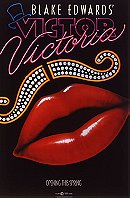
 390
390
 7.4
7.4
 7.6
7.6
